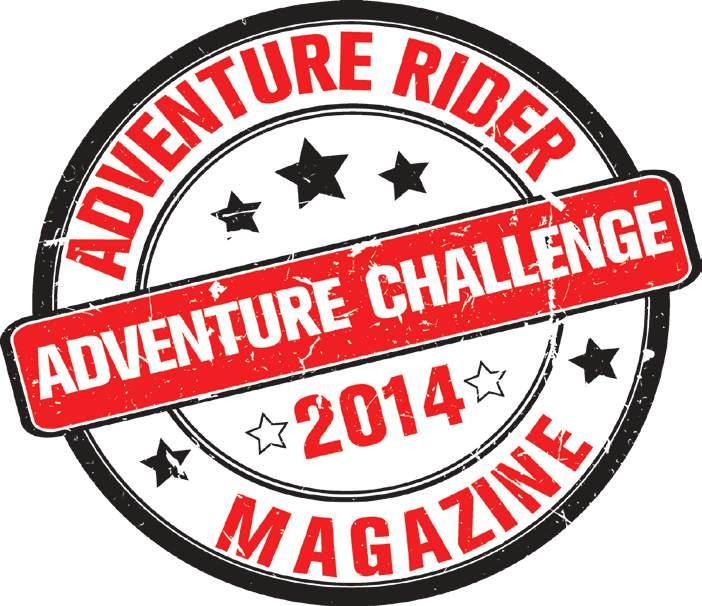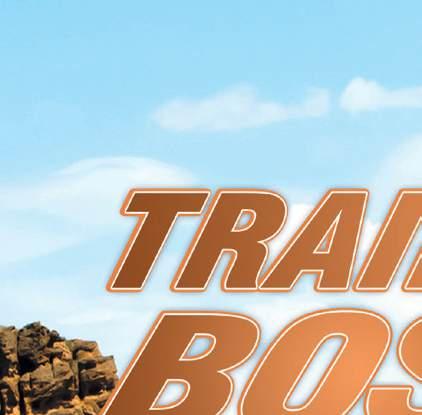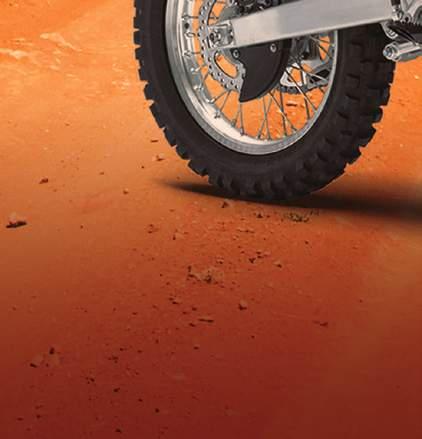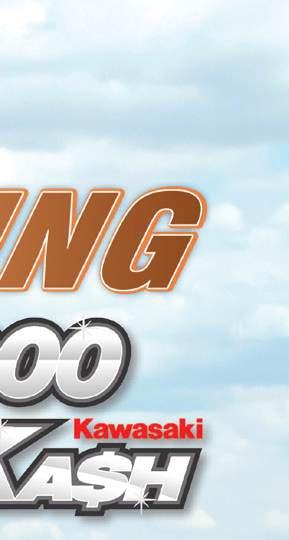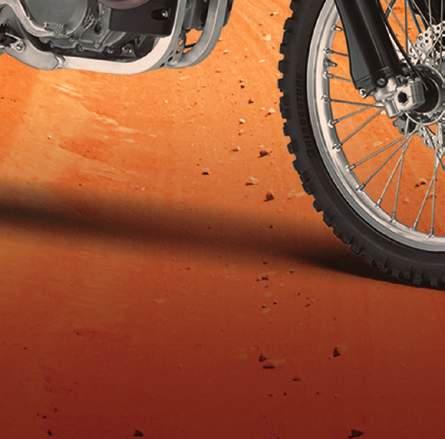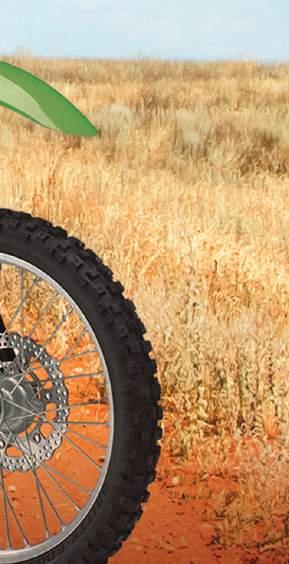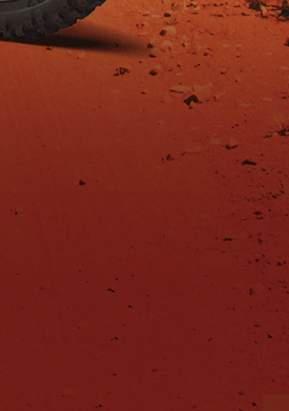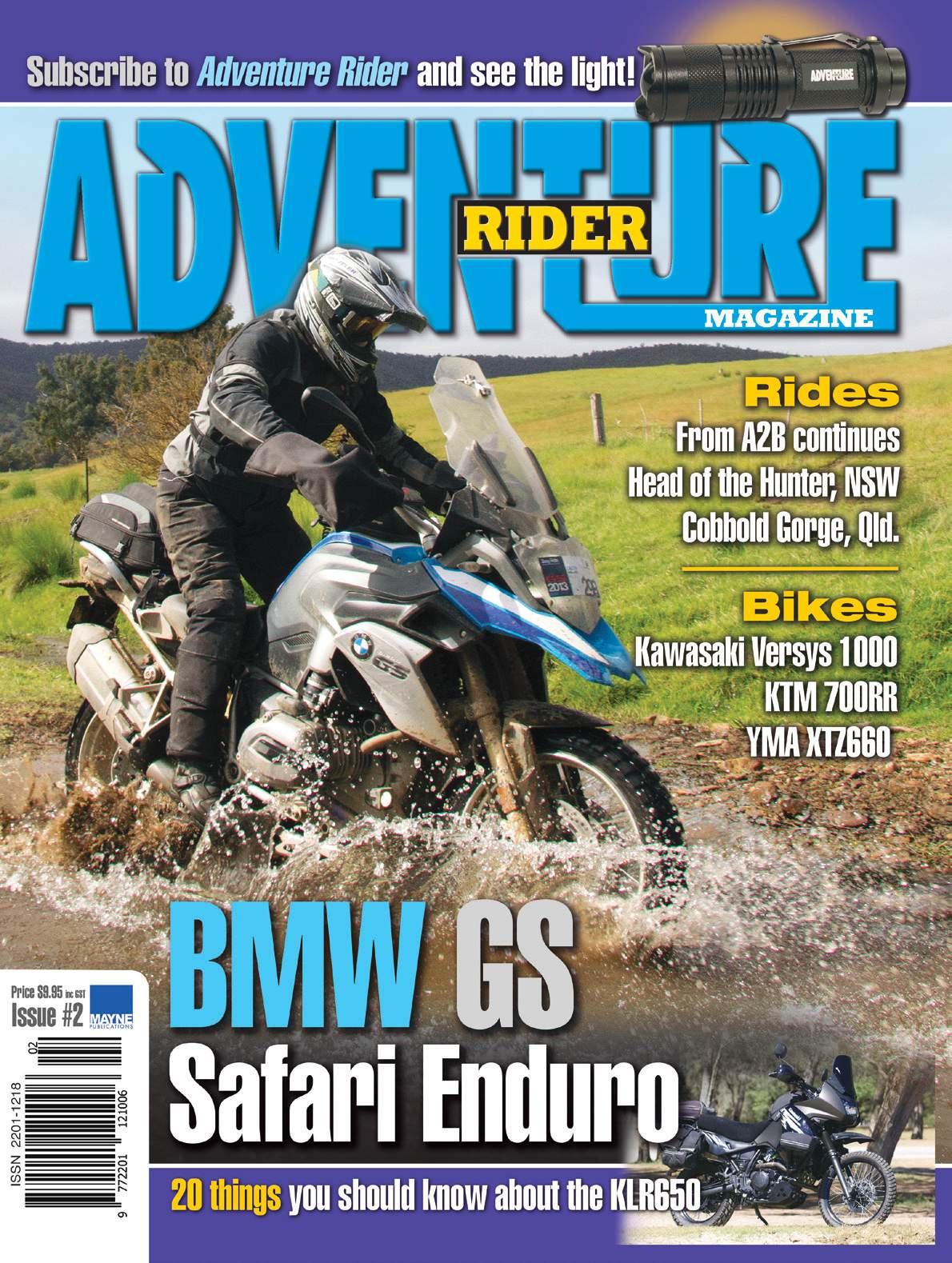




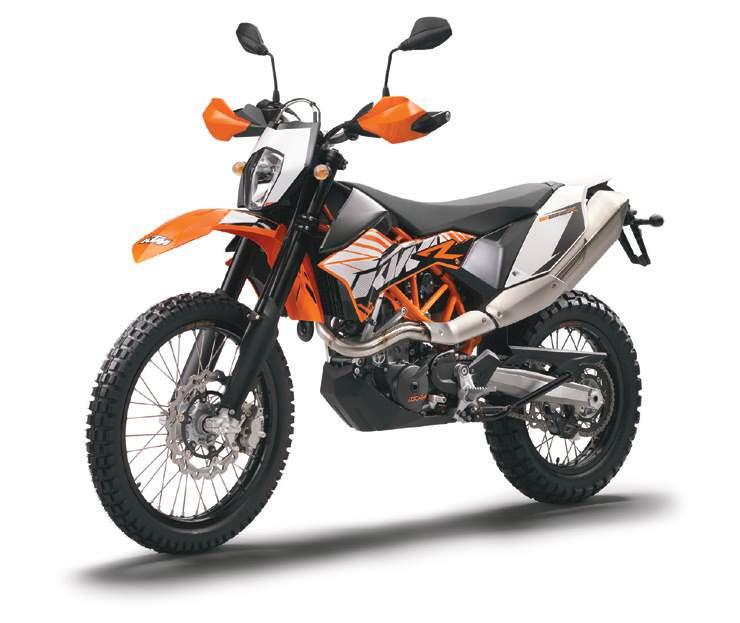
Go with no compromises! No matter whether on asphalt or tough terrain: This bike is the ultimate all-rounder with an edge. Light, agile and with abundant power from the bottom up, thanks to a LC4 single cylinder engine with a full 690 cc. From hard enduro to drifting on dirt: This KTM 690 Enduro R masters every discipline, assuredly and with the greatest of ease. It’s time to GO and get ready...
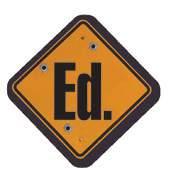

By Tom Foster - Editor
Taking adventure riding as a pursuit in its own right – as opposed to considering it a type of trail riding – isn’t a totally new idea. There have been adventure riders pretty much as long as there have been motorcycles, and the issue of “what is adventure riding” has been thrashed out on a few web forums and even in a magazine or two, although I’ve never seen a definition everyone agreed on.
There’s no doubt we can all look at a ride and say, “Yep. That’s an adventure ride. Absolutely.” And we can look at others and say, “Pfft! All that support? And staying in four-star accom? There’s no adventure in that.”
But it’s difficult to put into a clear and concise definition. Obviously marketing and after-market suppliers think they know, because we’re at last being offered apparel and equipment designed and
manufactured specifically for the type of riding we do. For decades we’ve been making do with motocross gear. Call it enduro or trail if you like, but it’s been developed in motocross. Boots that offer the maximum protection with comfort a very distant consideration, jackets that don’t keep out the rain, tyres that are lucky to last a single day of mixed riding and a stack of other compromises. Now an adventure rider can walk into a dealer and expect to see suits made with Gore-tex, boots that are both waterproof and comfortable, heated gloves and vests, helmets designed to be worn for days at a time and all kinds of specific adventure-riding accessories. We even have our own magazine now.
Life is good, and the marketing guys have seemingly figured it out.
So where will a definition
come from?
There’s challenge and risk in an adventure ride for sure, but there’s challenge and risk in lots of riding. It’s nothing to do with the size of the bike, because some of the most amazing rides I’ve done have been on very small bikes. Honda CT110s, of course, but I’ve seen some awe-inspiring rides done on bikes I would’ve thought good choices as a commuter for a young girl with a learner’s permit. Should distance be a determining factor?
Nope. There’s plenty of adventure to be had in any given kilometre of just about anywhere.
I think the heart of the matter is that it’s the heart that matters.
If you get on your bike ready to look the world in the eye, and you’re backing yourself to deal with whatever fate throws at you, that’s adventure riding. It’s an attitude, not something you buy from a store.


Adventure Rider Magazine is published bi-monthly by Mayne Publications Pty Ltd
Publisher Kurt M Quambusch
Editor/Advertising Sales
Tom Foster tom@advridermag.com.au (02) 8355 6842
Production Managers
Michelle Alder michelle@trademags.com.au Arianna Lucini arianna@trademags.com.au
Design Danny Bourke art@trademags.com.au
Subscriptions admin@advridermag.com.au
Accounts Jeewan Gnawali jeewan@trademags.com.au
ISSN 2201-1218
ACN 130 678 812
ABN 27 130 678 812
Postal address: PO Box 489, DEE WHY NSW 2099
Website: www.advridermag.com.au
Enquiries: Phone: 1300 76 4688
Int.ph: +612 9452 4517
Int.fax: +612 9452 5319


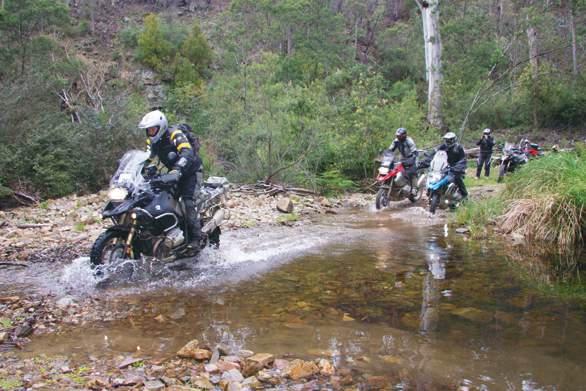




90 Next Issue 84 16 80 72 30
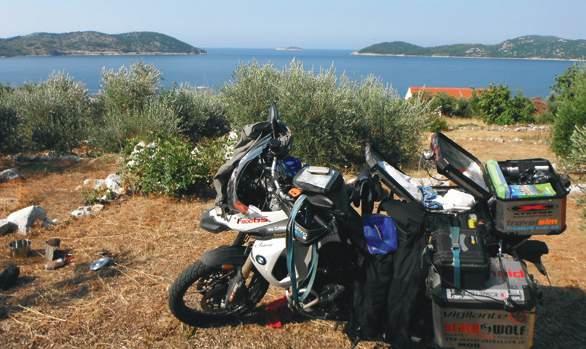
54 How To Ride with Miles Davis
58 Simon Pavey
62 Group Therapy with John Hudson
66 Wish You Were Here
68 KTM700RR with Craig Hartley
72 Packing For Adventure with Robin Box
77 10 Minutes With: Cyril Despres
80 20 Things You Should Know About: The KLR650
82 Reader’s Bike: Kerrod Purcell’s R 1200 GS Adventure
84 Reader’s Ride: Cobbold Gorge, Queensland
86 Checkout. Christmas!
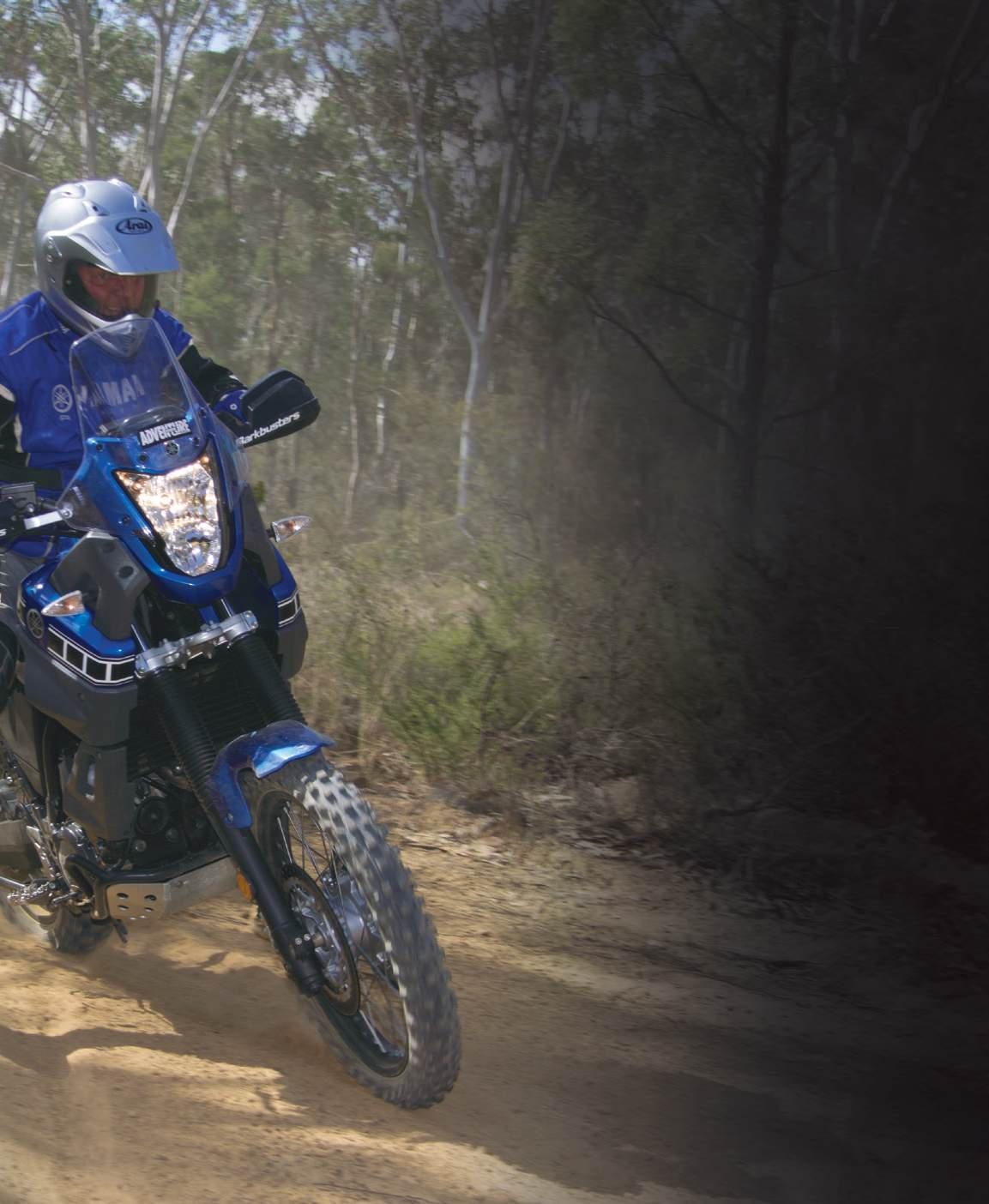

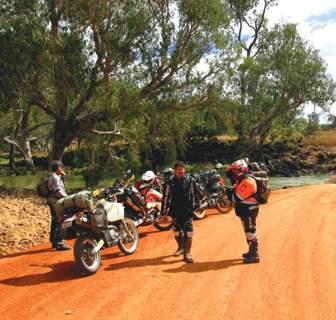
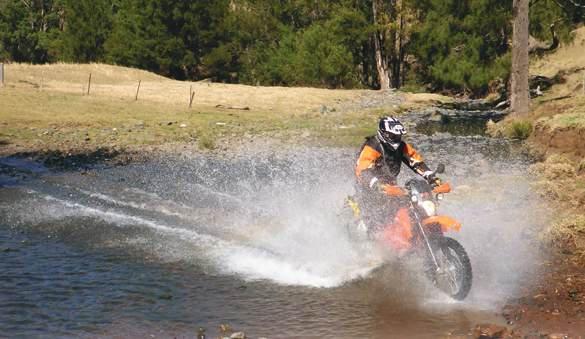


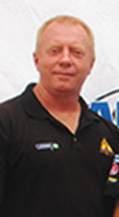
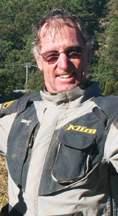
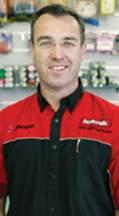
John thought adventure riders would love an event offering some of the thrill and challenge of The Dakar at a miniscule price, so in 2010 the real estate manager kicked off the APC Rally in 2010.

Karen’s in that growing group of females either returning to riding or taking it up. She’s worked in the Northern Territory as a governess/jillaroo, supervising kids and mustering on ’bikes, and bought her first bike from an undertaker.
Terry kicked off the Shock Treatment suspension tuning service back in 1996 after he found it difficult to get advice on setting up his own bike. Being a tad tall, Terry could see the need for a good suspension service that would take a rider’s personal needs into account.
Ken’s children and grandchildren keep trying to tell him he’s old and should slow down. His response is, “That’s rubbish. Just because I’m 70 doesn’t mean I can’t ride with the young blokes.” There’s never been a time where there wasn’t a dirtbike in the shed and he now uses the riding as a motivator to simply keep fit.
Nick is an owner and director of Teknik Motorsport in Penrith, NSW. He runs a workshop that specialises in a wide range of motorcycle suspension work, mechanical repairs and wholesale parts.
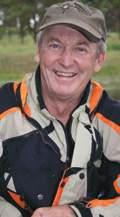




Craig has been riding for 40 years and has competed in enduros in Australia, New Zealand and New Caledonia. The purchase of Dalby Moto in 1984 was to feed his dirt-bike habit. Adventure riding came on the scene in 1995 and he’s ridden three Safaris and manages the largest trail ride series in the world.
Craig has been riding motorcycles since he was five, and he’s raced in Australia, South Africa, South America and Europe. In recent years become obsessed with motorcycle rally racing, competing in several World Championship events, with the best finish a third in the Open Production Class at the 2010 Sardinia Cross Country Rally.
A lifelong rider, Robin now rides, “whenever there’s a chance” on any bike available, on- or off-road. Between churning out Safari Tanks and importing high-quality Touratech gear, there’s not as much riding going on for this Victorian-based bloke as he’d like.
Ben contributed our reader ride for this issue. He started riding about 30 years ago on a YZ80 near Brisbane and has been riding on and off ever since. Ben got sensible and turned to adventure riding in 2008, and currently rides a 660 Ténéré. He’s the area coordinator for the Townsville region of the DSMRA.
Miles has been National Motorrad Marketing Manager for BMW Motorrad since 2006. He’s a very highly qualified motorcycling coach and an ex-professional mountain-bike racer. Miles is still riding every chance he gets, and has built an enviable reputation as both a world-class rider and a great riding companion.
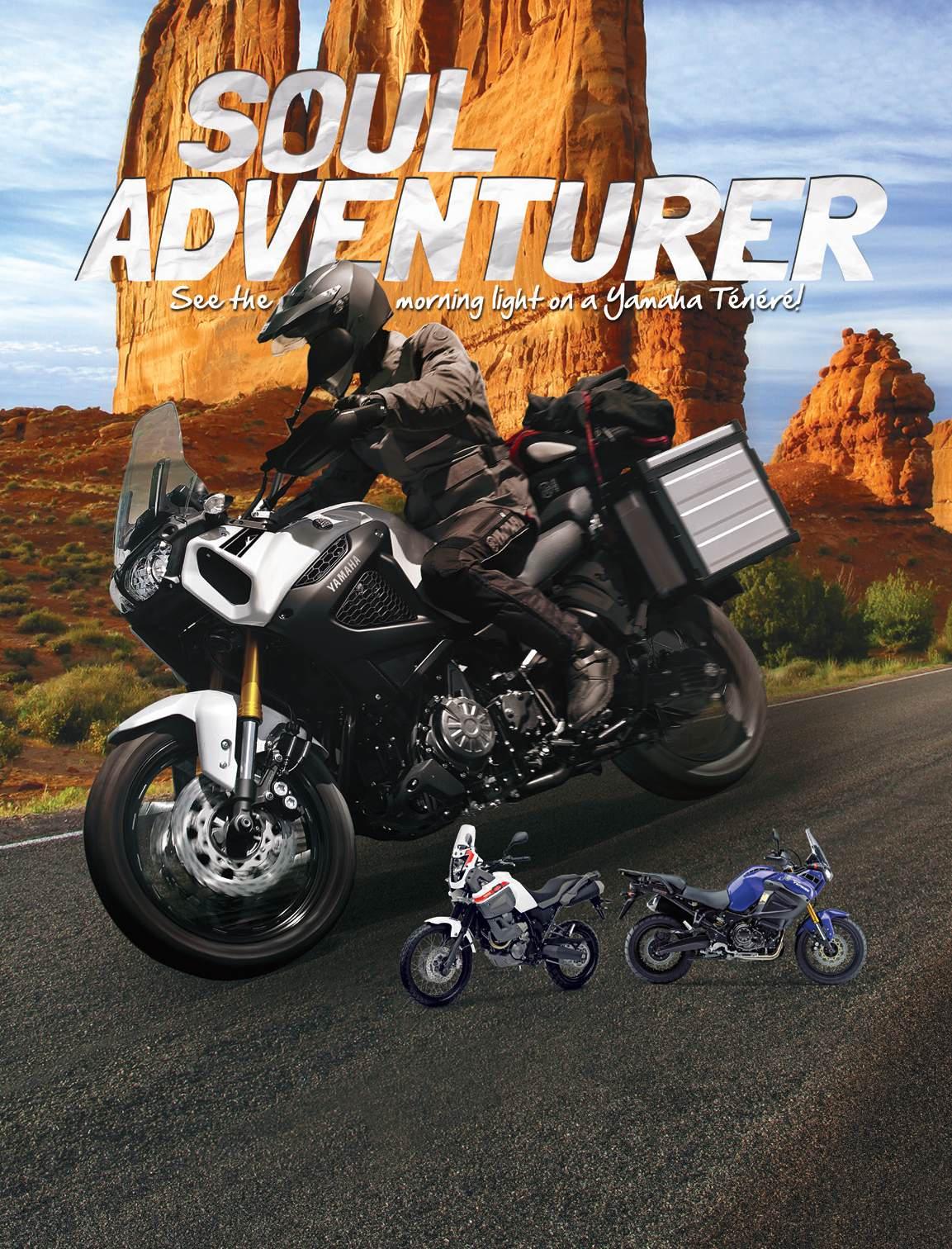





How much must BMW love adventure riders?
Building bikes is one thing, but organising and running rides like the GS Safari shows a huge commitment to our sport. And when it seems it just couldn’t get much better, the company stretches out and offers even more. The GS Safari Enduro.

The BMW Safaris kicked off in 1994, and the idea was to offer BMW owners a fiveday ride with the infrastructure to make the week-long exercise stress-free. There was lots of flexibility built in for a stack of variables, and the event was a success. It rocketed along, gaining momentum every year, until 2005 when numbers became a little too large, and the decision was taken to split the Safari into two events –the TS Safari and the GS Safari. The TS had panniers, top boxes, pillions and sensational roads. The GS had solo riders who were looking for more adventure and liked to get off-road. Splitting the two Safaris meant each group could have routes dedicated to the type of riding it enjoyed most.
The growth continued, and 2011 saw 220 riders sign up for the GS Safari in South Australia. BMW Motorrad, Australia’s branch of the Big Bavarian, sensibly thought that once again the numbers were becoming just a little too large for logistical comfort. When the 2013 ride was announced and sold out in just a few days, leaving 50 or so riders dangling on a waiting u
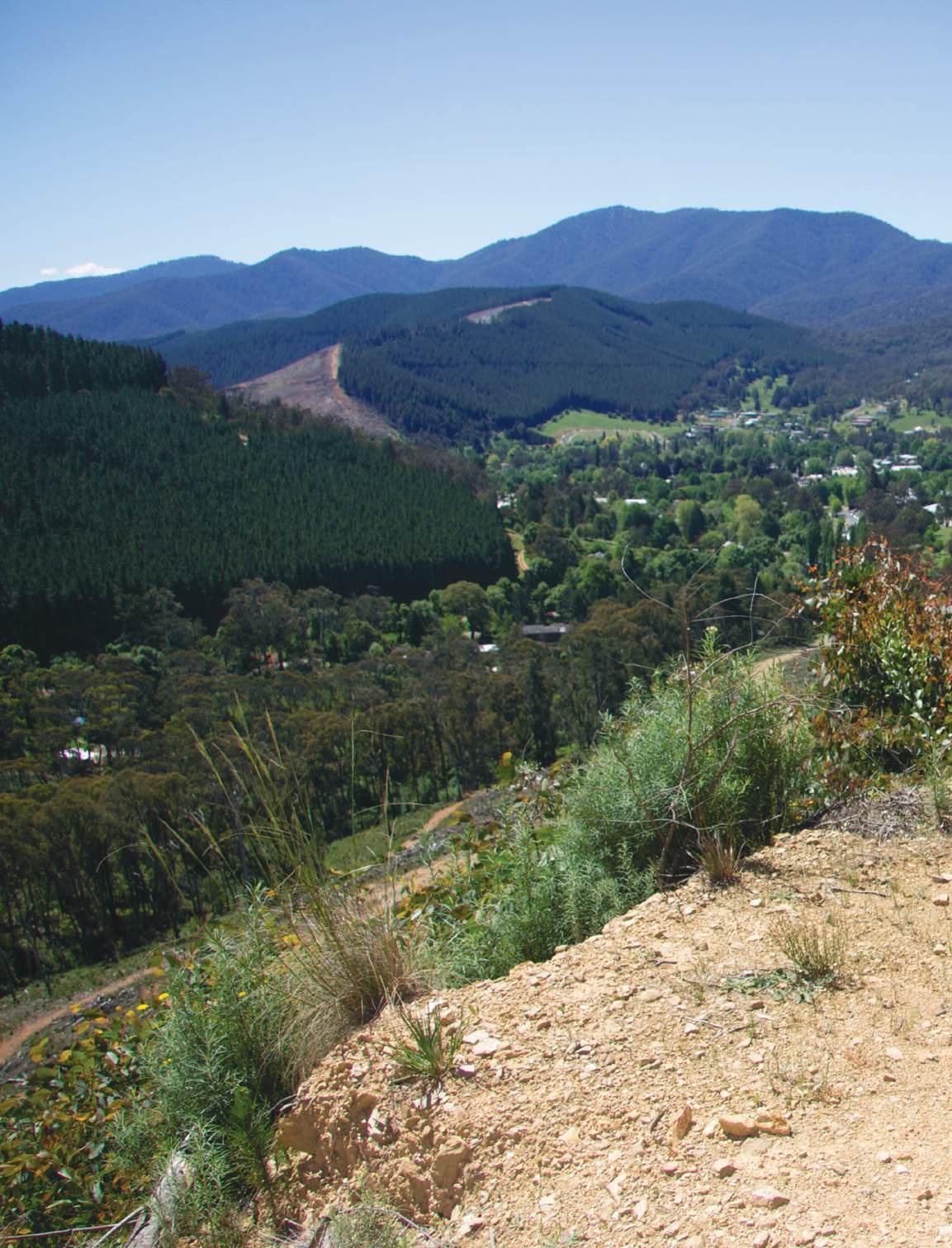
Ian Johnson,

and
enjoy the view over Bright on the third day. What an incredible experience to share with a few mates! Missing is Col Davis, who’d taken a biff to the ribs.
list, management decided it was time to take the next step. The GS Safari ran as usual, but a new event was offered, the GS Safari Enduro. The idea was simple enough: offer a tougher, more demanding, off-road course while remaining true to the original ideal of having all the logistics taken care of so BMW owners were free to enjoy it.
In the last few days of October 2013, 55 riders cruised, scrambled, sweated and laughed their way around the Victorian High Country, and we doubt there was a single rider who wasn’t blown away with the terrain, the scenery and the organisation.
Oh yeah. This was a really, really good one.
Service with a smile
With the weather approaching perfection it’s hard to imagine how
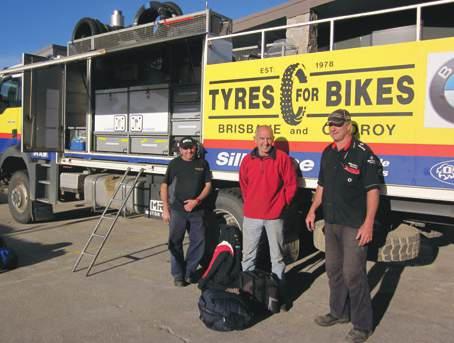
Rob Turton and the crew seemed to be everywhere. It made everyone’s maintenance a whole lot easier.
this ride could be improved. The accommodation was excellent, the support services absolutely first-class, and the Victorian High Country showed its best.
That doesn’t mean there weren’t a few mishaps along the way, of course. It was an adventure ride after all, so there were mechanical challenges

and a few bumps and bruises, including one case of suspected broken ribs, along the way. But having people like Geoff Ballard and Chris Cater tagging along to offer help when needed, and of course, BMW Motorrad National Marketing Manager Miles Davis keeping an eye on things, took most of the drama out of any challenging situations. A specially prepared medic bike was set up and on the course, and Rob Turton and his people were seemingly everywhere doing tyre repairs and changes, and even the occasional set of wheelbearings.
If it sounds like an adventure-rider’s paradise, we think it was probably as near to it as we’ll ever see.
The format for navigation was as well-sorted as everything else. Riders were given a route sheet at
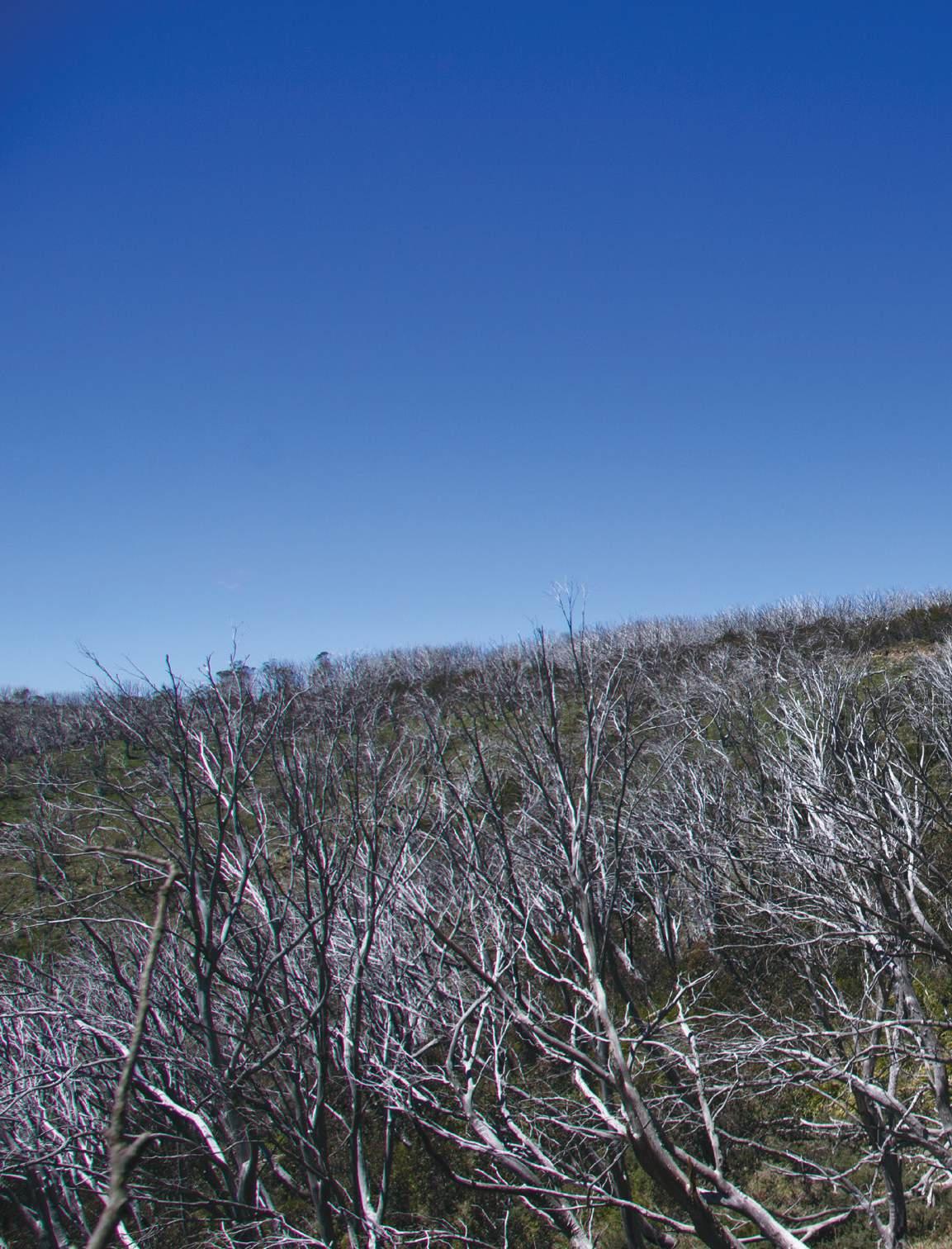
Below: Rob Sellar’s bitsa was amazing. An R65 motor with 1000cc cylinders, enlarged exhaust valves, re-geared fivespeed box, CR500 forks, 1992 R10 frame and R1100GS rear suspension with a relocated suspension pivot. No electronic rider aids, and Rob and his bike smashed the whole route like it was a golf course. Legend!

Left: BMW Motorrad National Marketing Manager Miles Davis kept an eye on things and lent a helping hand here and there.
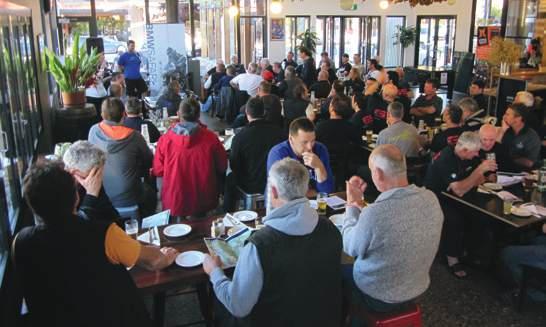
Above: Socialising and telling tall stories at briefing was a big part of every day.
briefing each night, and just to be doubly sure, the routes were arrowed each day by Huffy and Nick, two enormously cheerful and happy guys who seemed to enjoy their work. The little hi-viz arrows shone from tree trunks and road signs all over the High Country.
Aside from the route sheets and arrows, the courses where also available as GPS tracks, so there was nothing left to chance. It would’ve taken a pretty dim rider to lose the course with all that information available (AdvRider’s editor was one of the few who managed it).
As for the riding itself, there’s not much left we can say. It was superb. There was dust on some days and patchy rain on others, and there were hills and creek crossings that presented a challenge. But there was always help available and cut-outs for
anyone who didn’t want to tackle the more testing sections. There was no ridiculous, 450-only type single track, and even the bitumen sections were either lined with sensational scenery or twisted and wound their way along in such a way as to give the electronic rider aids on the newer bikes a good workout.
Mostly it was amazing dirt road connecting one sensational scene with another.
As the event progressed and the BMW guys could see the riders were capable and really did want an off-road challenge, a few tougher sections were allowed. The climb up Eskdale Spur Track on the fourth day held up a few riders for a while, but the view from the
hang-glider launch at the lookout was a fair reward for the effort it took to get there. The creek crossings were all shallow and passable, but creek crossings are funny things, and a few riders were caught out on slippery gibbers or by following the directions of evil photographers hoping for a good pic.
Fittingly, the fifth and final day was the most challenging and the most spectacular.
In a very late call it was decided the weather was good and the riders proficient enough, so the route included a run from Bright up to Lake Cobbler, which was pretty, then a
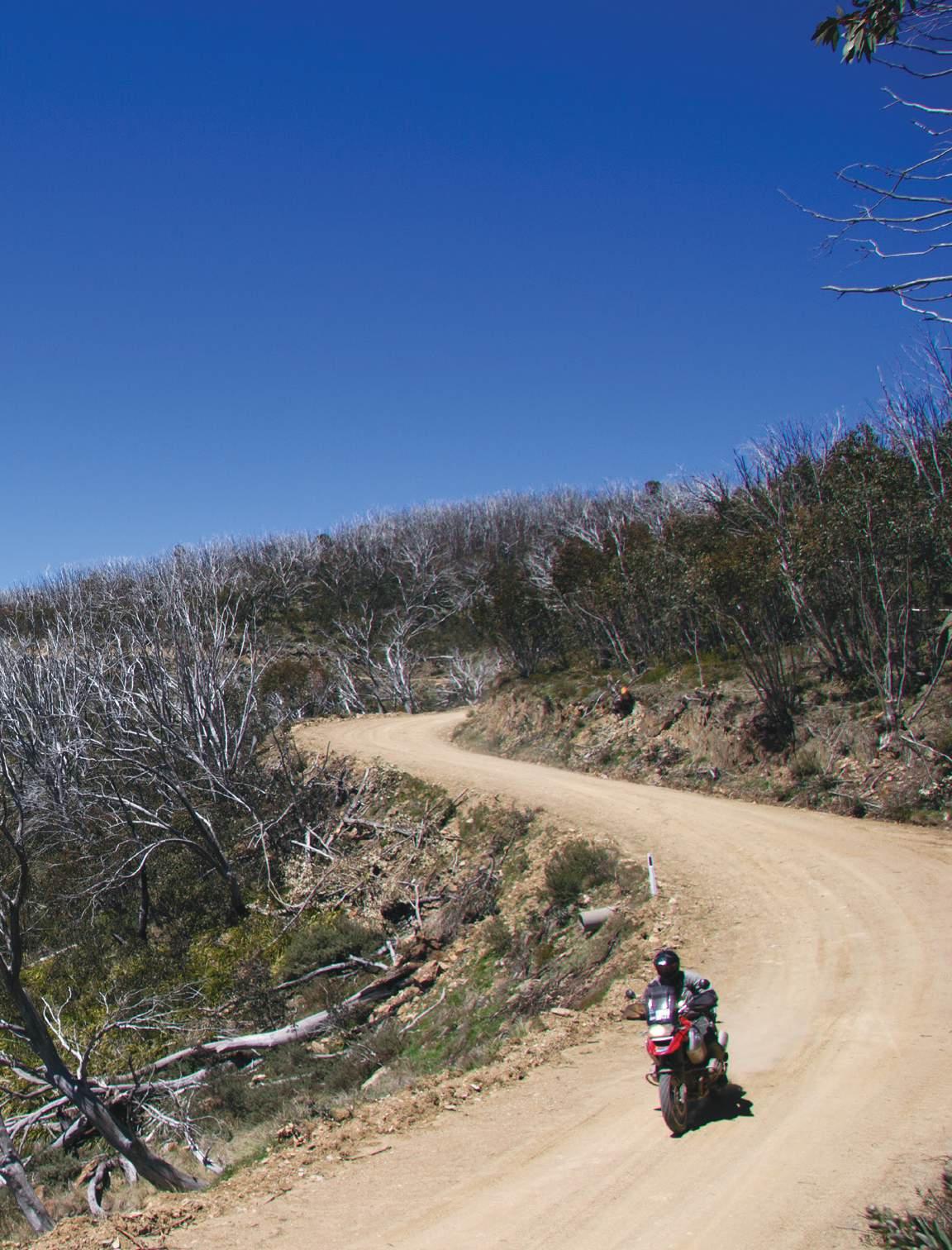
Beautiful scenery and smooth dirt roads made up a big part of the five days. It was a pleasure just to be there.
The climb up Eskdale Spur Track gave riders something to think about. Rod Marr looked like he was giving it plenty of thought.
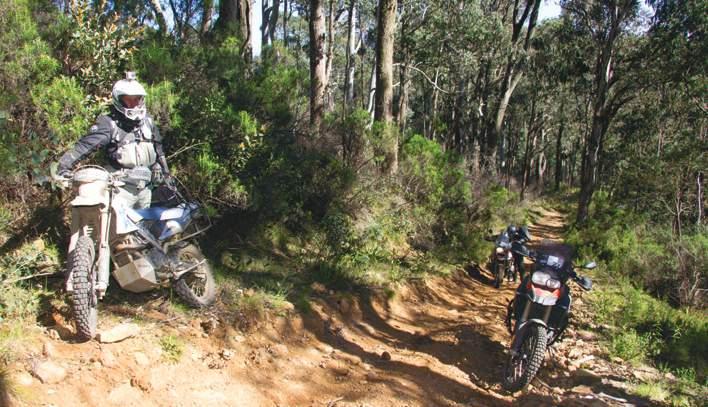
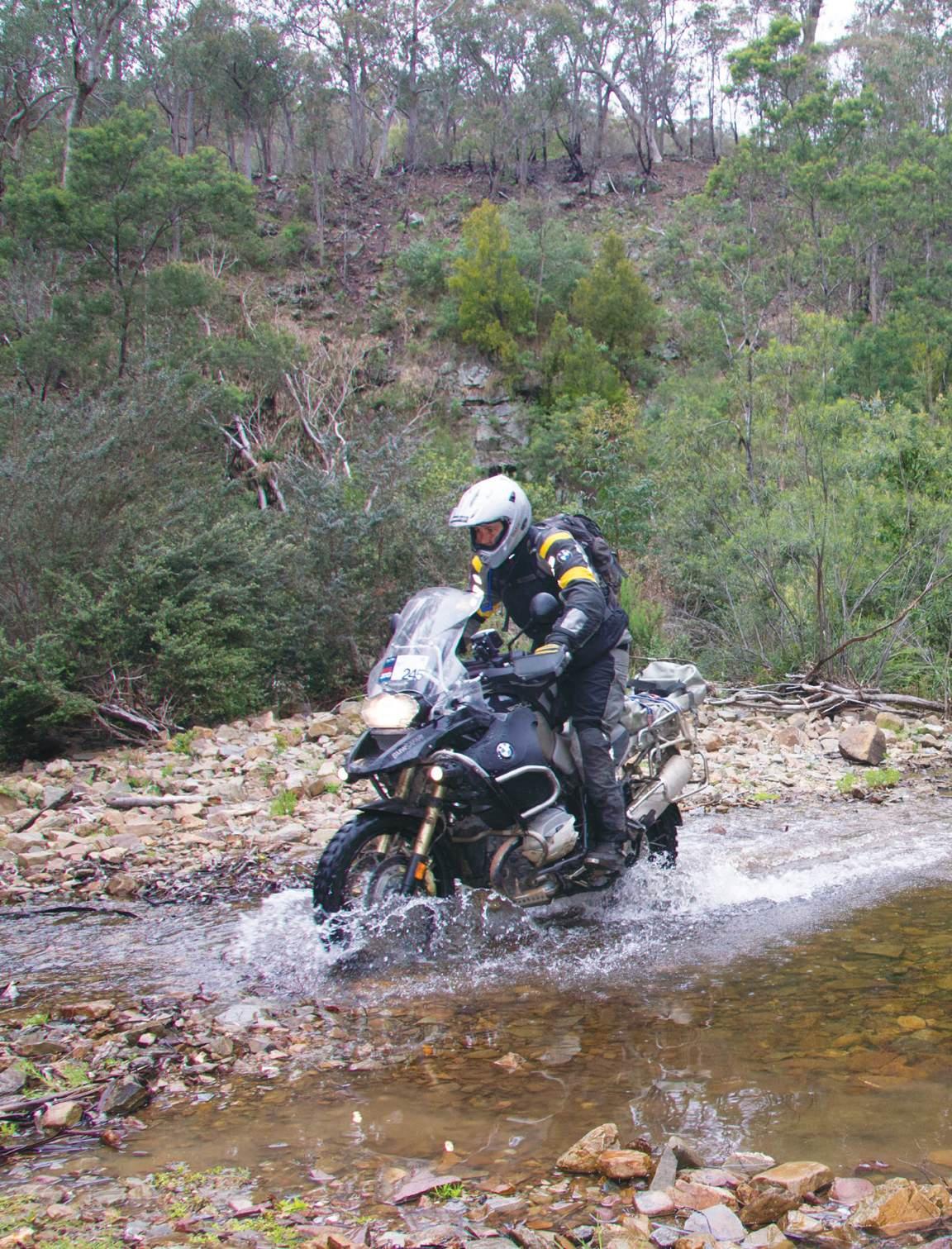
run down the The Staircase of the Circuit Road, which, to be honest, could’ve been downright ugly. It had a heap of fallen branches scattered all over its 20km or so, and we have no idea why it was called The Staircase. Staircases are even and go from one level to another. This trail was a loose collection of stony rubble wandering up and down all over creation, and it was all first- and secondgear the whole way.
Still, when you get to the end of a section like that after five days on the throttle, you know you’ve taken a challenge and beaten it, and all the riders who attempted it came out the other end smiling. It doesn’t get much better than that.
From The Circuit Track it was a cruise up to the iconic Craig’s Hut, the setting for the movie The Man From Snowy River, and that was a real blast.
In a final gesture of farewell, the course left the Circuit Track and began the climb to Mt Buller resort, the final night’s accommodation.
But just as everyone began to relax the brightorange arrows suddenly speared off onto a rocky, crappy Corn Hill Road. That meant riders were on their toes – almost literally – for the final seven kilometres or so leading to the bitumen climb up to the resort itself.
That was a nice little kicker for anyone who thought the job was done, and capped off a sensational five days with an achievable challenge that will be talked about for some time.
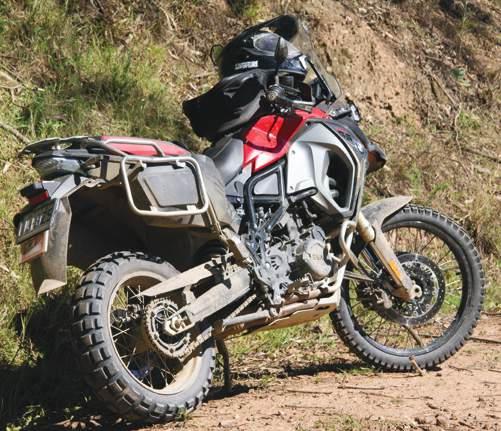
For this ride BMW Motorrad put us on an F800GS Adventure.
We loved the bike when we rode it last issue, but a real-world, bonegrinding ride like this one tells more about a bike than any amount of controlled testing ever could. There’s no trailer if things aren’t quite right and no trip to the dealership for advice. Every breakage and failure has to be carried to the end.
The 800 was amazing. In a strange way we almost feel as though we cheated because the bike was so damn good. When the hills got loose, rocky and gnarly, the torquey motor lugged us up using almost no revs and seemingly without trying. When we were tired and braked late into the loose, sandy corners the ABS gently let us lock the wheels, but kept everything turning over so the rider never lost control. And when we slammed into rocks and causeways at ridiculous speeds so both ends slammed on the bumpstops like a blacksmith’s hammer, it coped. No breakages and no spearing off at right angles with a mind of its own.
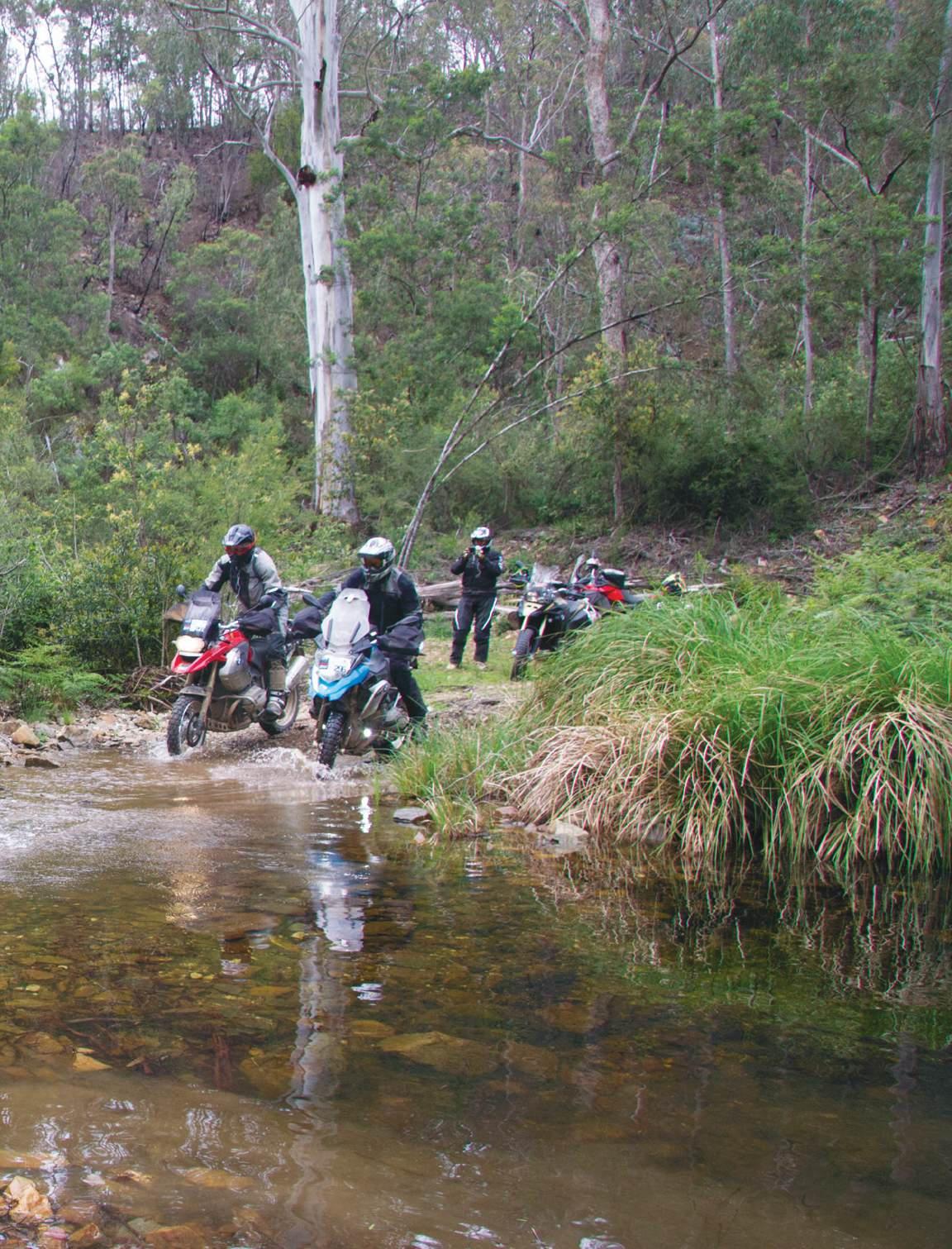
The creek crossings were gentle enough, but creek crossings can be tricky. A few riders ended up with wet bums.
In short, this bike was an absolute pleasure to ride. That’s recommendation enough, but the 800 Adventure made us look very good, and believe us, that’s not easy to do.
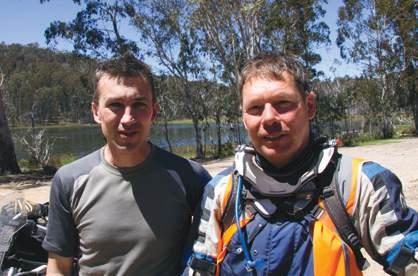
Above: Nick Selleck and Glen ‘Huffy’ Hough did a brilliant job arrowing the course, and seemed to have a ball doing it.
All over…for now Tall tales were told and drinks and good food were consumed that night. That meant it was the same as every night on this ride, though. A few awards were given out by the BMW folks, and in general the talk ebbed and flowed as the rider’s stories of their prowess became more and more exaggerated.
an adventure.
Right: The riders were told at briefing, “If you get a flat, get your wheel out while you’re waiting for the sweeps”. Juan Roncallo did exactly that. Except, Juan had a tubeless fitted. D’oh.

A huge farewell celebration dinner was enjoyed by everyone.
The accommodation at Mt Buller was truly amazing as the warm, sunny weather offered spectacular views and the Bogong moths camped in the boots and riding gear left out to dry.
We admit to choking back a little tear or two as we watched the riders
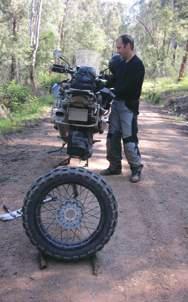

Thanks!
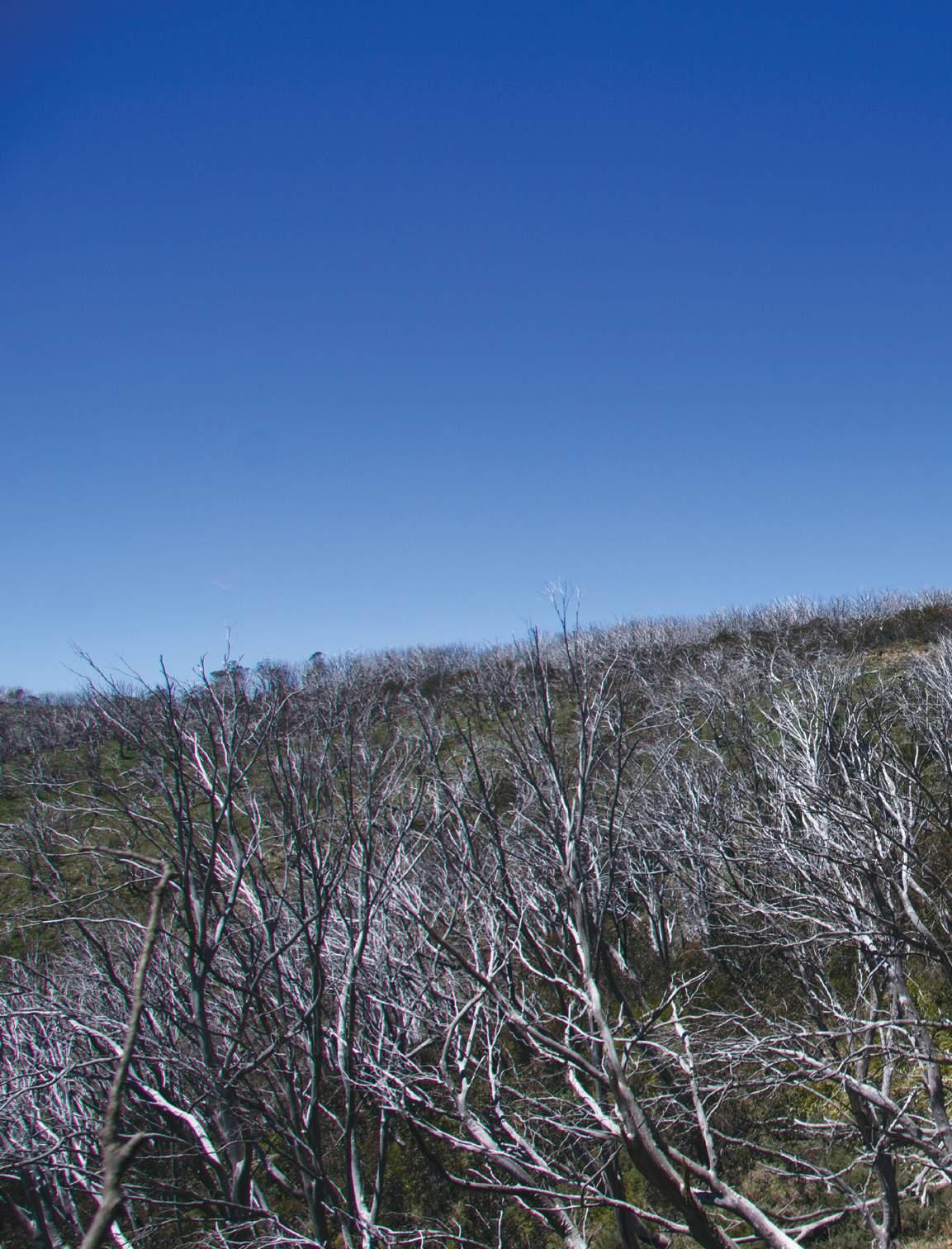
Right: The hill on the Eskdale Spur Track had Rod Marr running a little wide.
Below right: Rob McClurg learned the hard way not to trust photographers when they suggest a line through a tricky creek crossing. The bike started first touch of the button and Rob was straight back on the pipe after wringing out his socks.
Left: Stuart Woodberry found some loose, slippery clay. How did AdvRider Mag know to stop and shoot right there? The editor had face-planted there himself two minutes before and figured someone else was sure to have the same result.
retrieve their clobber from the support truck and head for their various homes. It was a great ride in every respect, and we can only hope the Enduro takes its place alongside the TS and GS Safaris as an annual event. If it does, we hope we get invited again. We’d hate to miss a ride as good as this one.

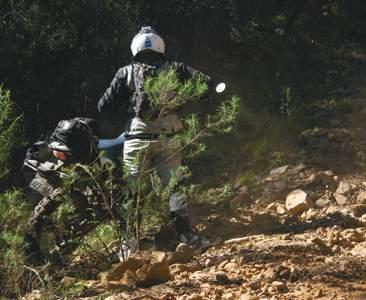
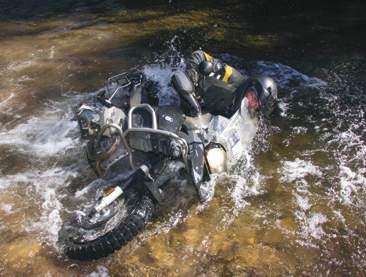
A massive thanks to BMW Motorrad and everyone involved for inviting us on this ride, and for making it such a trouble-free, fun, exhilarating event while we there. You guys rock.


Wunderlich: $415
Motohansa: $309
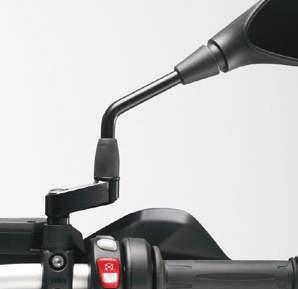
Touratec: $115
Wunderlich: $102
Motohansa: $79
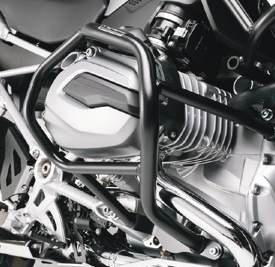
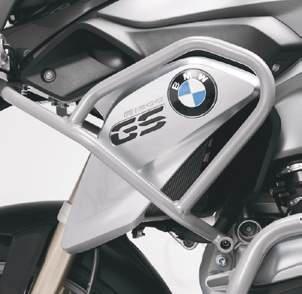
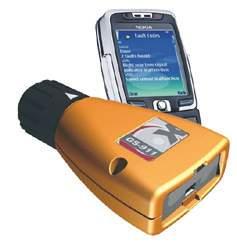
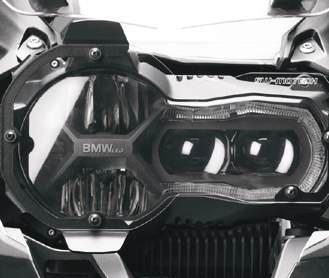
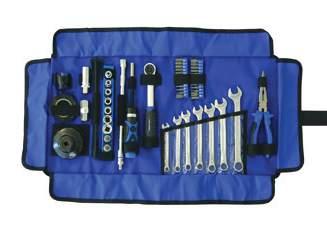
Singapore to London – solo.
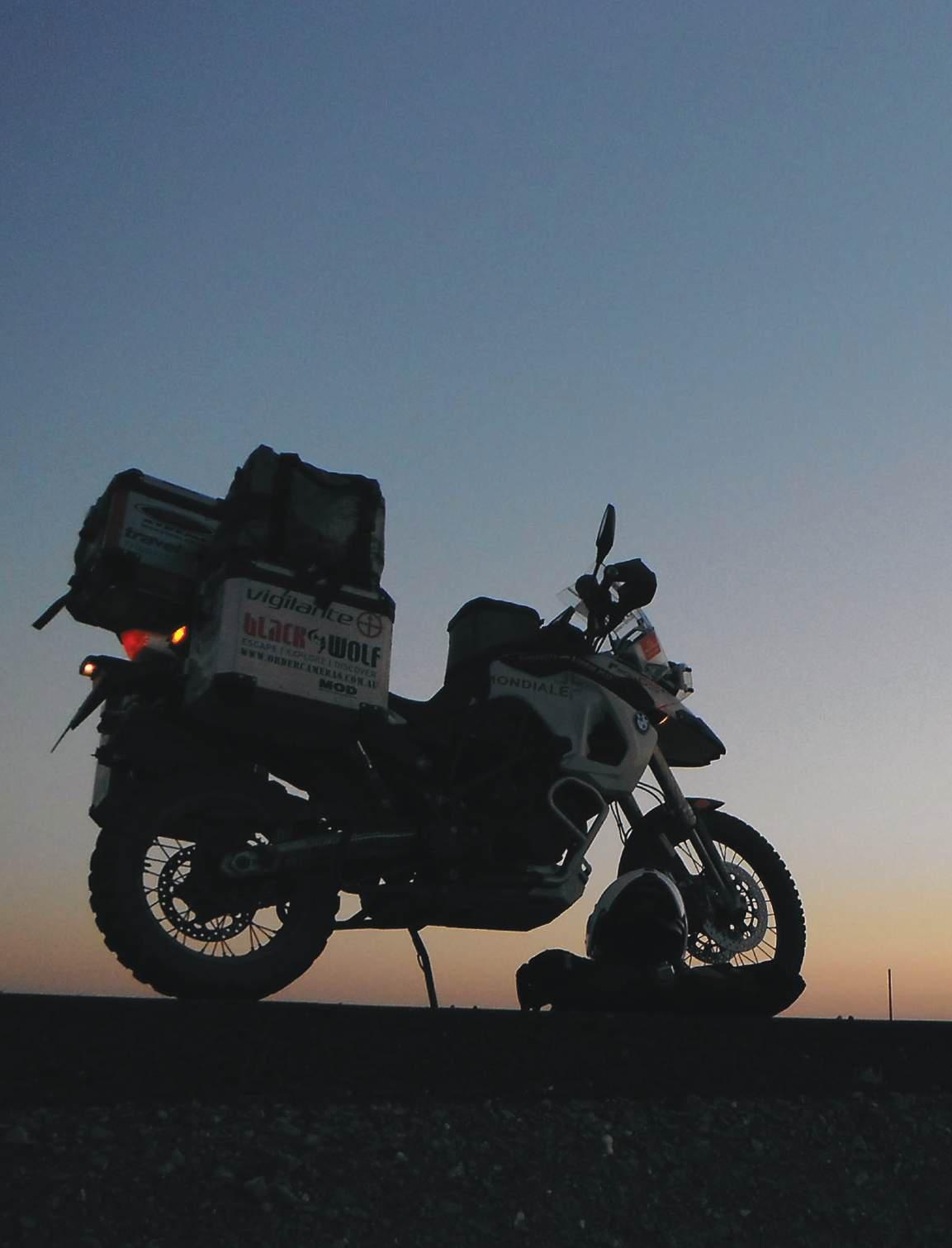
Continuing his epic journey over 35,000km through 27 countries, raising funds for humanitarian cause ActionAid, Nic Cuthbert pushes on.
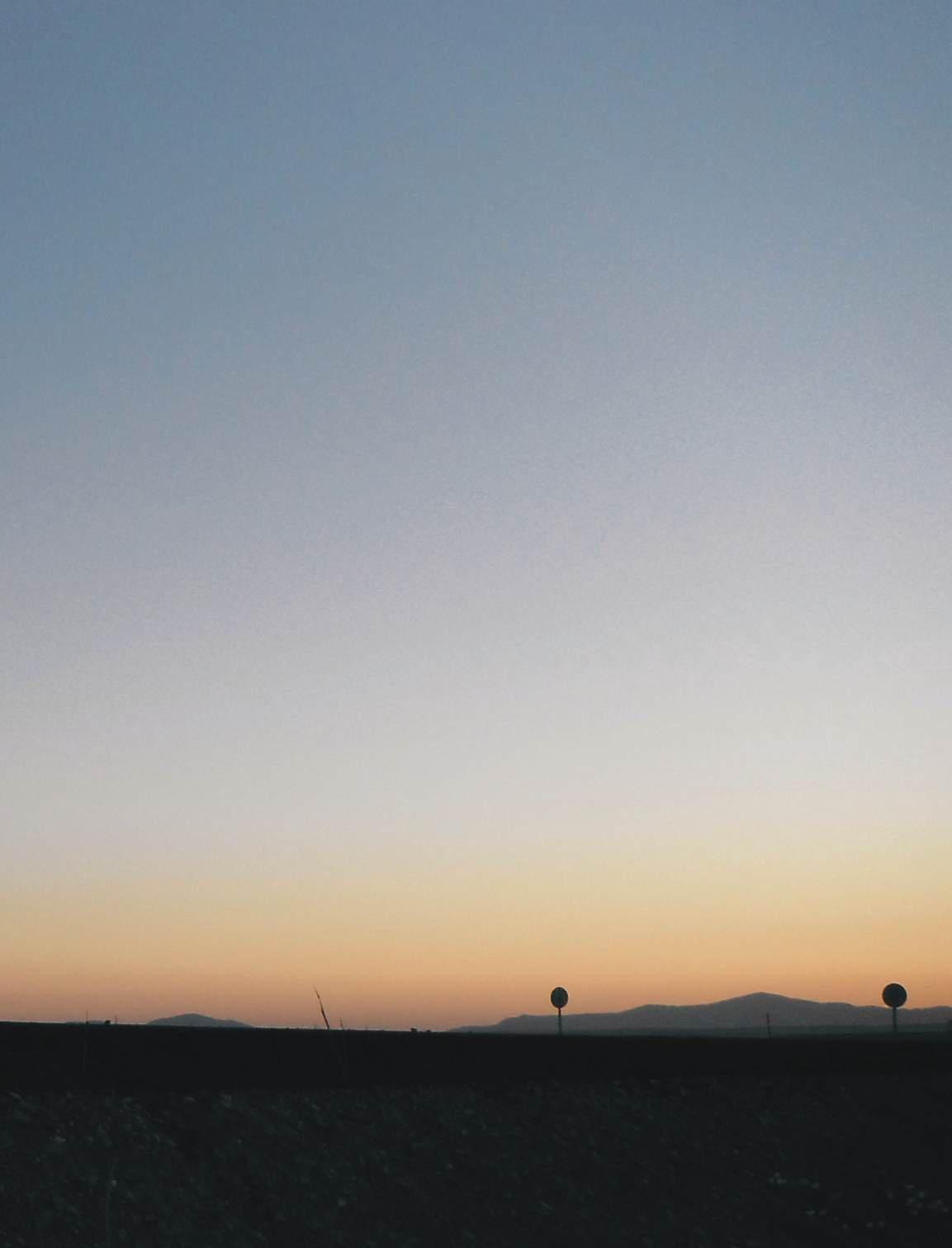
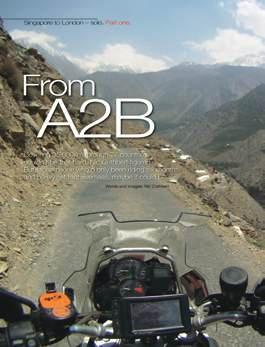
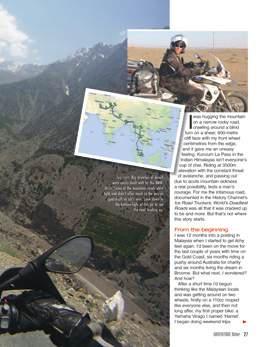
Irolled my BMW F800GS over the Iranian border as part of my overland adventure riding from Singapore to London. I was roughly halfway through the trip and Europe beckoned. The bulk of Asia had already passed under my wheels, and blood, sweat and tears had got me to where I was ready to tackle perhaps one of the most misunderstood of all nations.
As I poked my head out of my tent and stood to meet the breeze from across the Lut Desert, I felt the change in the air. I saddled up Snow, my BMW, keen to put the previous day’s ride under Military Police escort well behind me and allow the country’s smooth roads – built to the standard of perfection that only oil-money could afford –to carry me quickly onwards to Europe. I did 751km that day, and every kilometre was filled with exhilaration and enjoyment as I cruised along desert highways and glided past farming communities on my way to Esfahan in the nation’s south-east.
A couple of nights later I was riding at night on a brand new highway, yet to be lit, around the outskirts of Tabriz. It felt like a magic-carpet ride through the hot Persian night. It was stunning.
Although I did my first 600km in Iran under heavily armed guard and
Through Iran and into Europe on this second leg. u
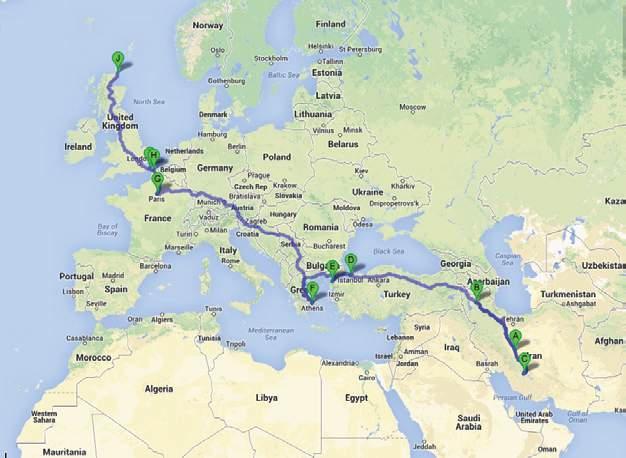

got pulled over every time the police saw me, the country couldn’t be further from its widely portrayed stereotype. For me it turned out to be an exquisite place, immensely rich in culture with easily the friendliest citizens I encountered. It also included surprises like the ancient ruins of the Persepolis, 2500 years old, and the city of Esfahan, once described as the most beautiful city in the world. In Iran, the barren lands of the Far East gave way to broad-acre farms and John Deere machinery. Horses and carts hobbling along tattered roads in Pakistan gave way to four-lane, cross-country freeways traversed by Scania prime movers and Renault family cars. While many consider Turkey the transition from East to West, I saw most of that in Iran, not to mention the huge contrast in
landscapes, from stinking hot deserts to lakeside resorts and snow in the Alps just behind the conurbation of Tehran.
There’s a dark side to this stunning country of course, and I was privileged to an extraordinary insight into that when I couch-surfed with locals in Tehran. Segregated public spaces, strict control on the rights of women and highly visible propaganda are just some of the obvious signals of a population living at the mercy of a malevolent regime. Iranians are always willing to discuss politics though, and this I particularly enjoyed over red wine served from a mineral-water bottle. It was a recipe refined over many years and served in the homes of an ever-resilient population dealing with an alcohol prohibition.
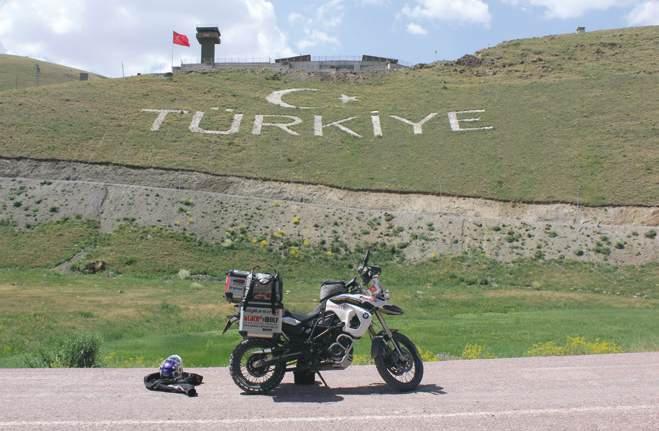
I was in Turkey shortly after leaving Tehran, and with helicopters buzzing overhead and cruise ships pushing out to sea below, I rode over the Bosphorus Bridge, the main artery of Istanbul.
Turkey’s biggest city is widely considered not just the physical connection, but also the cultural confluence, of East and West, or Asia and Europe, if you prefer. Pushing into a stiff breeze and looking out across the Mediterranean I felt my knees weaken as I remembered and recaptured my love of the ocean. Later, walking through Taksim Square, having only recently stumbled out of the dusty plains of the Pakistani and Irani deserts, I must’ve looked slightly odd. I’m sure I resembled a life-size dashboard Elvis, my head bobbing around to take it all in like I’d never before seen a big city. Either that, or even more likely, I looked like a kid from The Land Downunder who had in fact never before seen a major European city. Three days later I camped out at a small cove 365km southwest of the hustle and bustle. It was there, after travelling over 19,000km by road across two continents, I took my first swim in the ocean. It was a monumental moment for me given my attachment with the sea and past as a surf life saver, but no less coincidental in it being the same beach that, 99 years before, Australian and New Zealand troops waded ashore for their fateful WW1
landing at Gallipoli. I was camped at ANZAC Cove.
Goosebumps.
Far outlasting a predicted 8000km, the Metzeler Enduros I’d fitted in Kuala Lumpur had rolled over more than 17,000km of bitumen, rock, sand and ice by the time I reached Turkey, and they were well due for replacement.
Fortunately Istanbul also represents the first place big-bike tyres became available on an East-West globetrot, and it was there I treated Snow to new shoes – Metzeler Tourances front and rear. The new tread allowed me to pick up the pace, lean into a turn or two and enjoy the incredible tarmac-based riding that Europe had to offer. And I was starting to realise that Europeans adore their bikes, particularly BMWs.
As I headed initially east into Greece and then north through the Balkans to the Dolomites I passed through toll gates, cruised along tram tracks, got waved into splitting lanes by cars
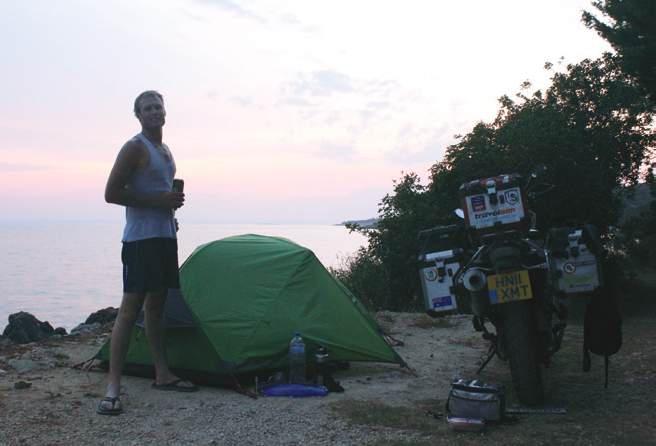
and was regularly motioned to park on footpaths directly outside major tourist landmarks like the Hagia Sophia (Istanbul), the Acropolis (Athens) and the Eiffel Tower (Paris). It seems that more than being welcomed, riding a ’bike is revered.
But with all the many reasons I can make for why touring on a ’bike is awesome, it must be said that for sightseeing the awesomeness can’t be overstated. Seeing a new city on a ’bike is a pleasurable treat. I quickly became accustomed to
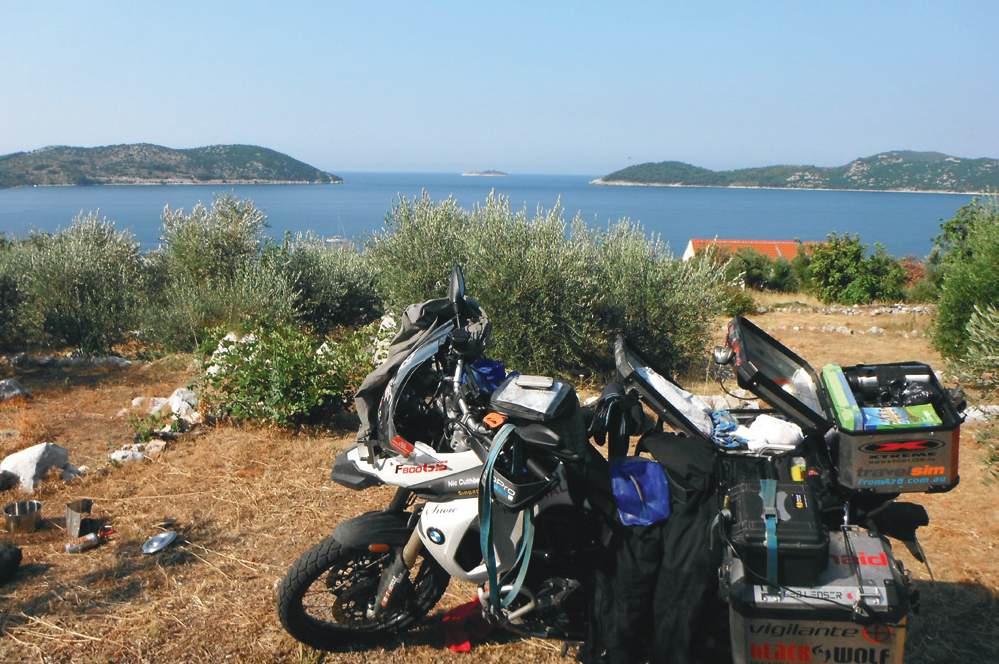
punching in tourist hot spots as via points on my BMW Navigator, hitting the start button and letting the tour begin.
The countries of Europe seemed to fly by, and more than anything it felt like a holiday after the trials of earlier parts of the trip. Spectacular sections of coastline in Croatia, rolling countryside in France and Italy passed by, and before I knew it I was pushing through high winds and a torrential downpour as I tried to make Calais and the last ferry across the English Channel for the day. I’d ridden non-stop from Paris, hoping to surprise my partner Donna, making London two days earlier than planned.
After spending a few days relaxing and recuperating we departed two-up for the north of Great Britain where I officially ended my tour. The ride through Scotland, although incredibly scenic, turned out to be frustrating as it rained almost non-stop. However, late on the afternoon of Friday, July 27, the pouring rain at John O’Groats briefly parted and the sun shone down as we rode up to complete my overland adventure.
Riding any ’bike down the street is exhilarating; riding a ’bike down the road less travelled is an unforgettable experience, and following that road all the way across continents has changed me in a way I can’t accurately describe. More than my trip from Singapore to London being a huge adventure and personally rewarding, I was honoured to be riding for a cause. Throughout the journey I witnessed jaw-dropping and confronting poverty in many of the places I visited, but I was lucky enough to experience the heart-warming care and selflessness of an even wider population.
I want to take this opportunity to thank everyone who’s been involved in either making FromA2B happen, making it the epic adventure it was, or donating to ActionAid via www.froma2b.com.au.
As they say, this really is only the

beginning, and planning has already begun for the next adventure, FromA2B: Around The World. In 2015 I, together with my partner, will be shipping out to
There was plenty to see in Europe, but the actual riding was much less demanding than the Persian deserts.
London to ride from there to Tokyo where we plan to ship to Anchorage in Alaska before riding all the way to Cape Horn. Join the adventure!

Done. Singapore to London and on to John O’Groats in northern Scotland.



Order your FREE 1800 page catalogue, with thousands of Touratech parts, including the all-new BMW R 1200 GS.

l Touratech make the world’s best GPS mounting systems, allowing you to safetly protect your valuable navigation device in all conditions.
l Touratech mounts fit any bike, and are robust, durable and provide an anti-vibration system that is second to none. Lockable mounts are also available.
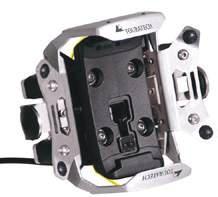
l Designed to fit Garmin, Tom Tom and Magellan GPS units, you have a choice of a cross-bar, handlebar or Ram mounting.
Priced from $187
l Touratech’s incredibly lightweight aluminium camp seat weighs just 470 grams.
l With a load rating of 110kg, size isn’t everything.
l You’ll sit a comfy 42cm above the ground.

l Folded, the seat is just 35 x 5.5 x 4cm in size and will fit easily into your panniers or your back pack.
Priced at just $74.95
Order at:
l Highly abrasionresistent kangaroo leather palm.
l Spandex leather detailed back.
l Colourfast and sweat proof.
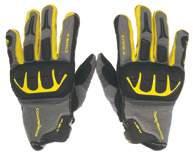
l Velcro adjustment at cuffs.
l Air vents on fingers.
l Perforated finger side walls.
l Hard plastic knuckle protection
l Stylish grey-yellow design.
Priced at $180.40

Aftermarket pipes are a favourite of nearly all bike owners. But are they a must-have or a marketing concept? Nick Dole, owner of Teknik Motorsport, is all about performance. Glossy photos, big-budget marketing campaigns and loud opinions on internet forums cut no ice at Teknik. Nick’s pay cheques are written on chequered flags and dyno charts. He shared a few thoughts on after-market pipes and adventure riding.
Main: Those running loud pipes are costing all the sensible riders access to riding areas. Stock pipes are not only usually quieter than aftermarket pipes, they often work better in an adventure application.
Adventure riding means different things to different people. For many, it’s an opportunity to get away from the routine of daily life, see new places, forge new friendships and explore. While we do all this, we leave a footprint on the places we ride. Not just tyres and the odd ploughing from a DR650 bashplate, but loud, echoing noise.
Like it or not, most adventure bikes get into some sensitive areas, and the pulses from a single-cylinder bike do travel in gullies and bounce off valley walls. Sometimes they’ll echo on for kilometres. We then have a question: do we care if the local inhabitants hear us riding in their little piece of Utopia?
While local residents don’t have the final say on what forest trails are left open, there’s been heavy petitioning at times to keep bikes (and 4WDs) out of certain areas. One of the first items on peoples’ shopping list with a new bike is a pipe. Why? General perception is that stock units are heavy, ugly and cost power. Is that true or false?
Above & below: Two Tiger XC800s. One has the stock pipe, one an aftermarket pipe. Is the stock pipe really that ugly?

The noisy-bike debate has been going on for as long as I can remember. It’s not just the risk of pissing off locals, but have you ever followed a bike with a noisy pipe for a few hours? It’s enough to make you want to pass them or drop back.
A few decades ago, when the two-stroke was king, Italian plastics giant Acerbis made a plastic muffler. I had one on my Six Day KTM 250. Coupled with the factory Slechin double-wall pipe it made great power and was very quiet. All the KTM Six Day bikes had that exhaust combo for the event. It was so quiet you often had to shout at people on single trail to get them to move over. Acerbis only made the mufflers for a few years. They weren’t the biggest sellers, and the public preferred noisy mufflers like the FMF and Pro Circuit shorties. Shaun Reed showed us all how much we were kidding ourselves at the 1994 A4DE. He dominated the entire event on a TTR250 with a stock muffler. From memory they were calling him “the whispering killer” or something like that.
So, what does an aftermarket pipe add in the horsepower department? It depends entirely on the bike. Taking the

DR650 as an example, about five horsepower is the gain. The bike isn’t overly powerful to start with, so you really feel the difference. A WR450F is a different story. The stock muffler is actually very good, especially with the GYTR insert. Can you really ride a 450 to the point where you need more power? Most top enduro guys are looking for ways to tame a 450 down. The aftermarket pipes for fourstrokes are performance orientated, and the power is made mostly higher up in the RPM range. That’s not great for long-distance work. What about the weight, then?
True, some stock, steel mufflers are pretty heavy and there’s often a few kilograms to be lost. I’m not sure of the relevance to this on an adventure bike where we tend to load them up with between 10kg and 30kg of gear, but everyone considers this another justification. I will say this about heavy, ugly stock pipes: they are durable! I’ve seen and welded up a lot of aftermarket pipes that have cracked, fallen apart and generally self-destructed. When was the last time you saw a stock pipe crack and fail?
Seeing as exhaust swaps seem unavoidable we can break them down into three main types to help you work out what u

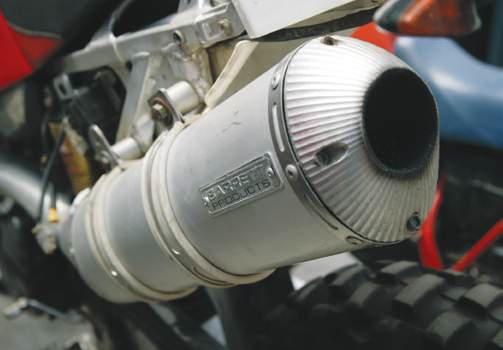
noisemaker you should be more inclined to spend your hard-earned on.
The first is the mechanicalbaffle type.
Most stock pipes are mechanically baffled. The exhaust has to find its way through a labyrinth of plates, tubes and holes. While there may be some sound-absorbing material, it’s not replaceable and lasts forever anyway. From all these tubes and plates comes weight, and there’s usually a
Left: A well-used Barrett muffler. It’s several years old but still in great condition. They’re very durable, and that’s a big consideration if you’re planning to cover big distances.
double-skin too, which keeps the outside of the muffler cooler and is a consideration for soft bags that push sidecovers on to the exhaust. The manufacturers do a lot of durability testing, so while it’s heavy, power-sapping and ugly, at least it won’t fall apart. This is something you should consider if you plan on being away from home for a few weeks or months. Next up is the perforated-core style that needs packing.
A perforated (‘perf’) core is a steel tube with lots of holes in it surrounded by sound-absorbing material – usually fibreglass packing. All performance motocross bikes are perforated-core only. There’s some mechanical baffling used at times, but it’s fairly minimal.

Most aftermarket pipes are perforatedcore only, and that’s why they’re so damn loud. There are exceptions – like the FMF Q Core – that are a mix of mechanical and perforated. While these pipes are loud stock, the real issue is when the packing, usually glass fibre, gets loose and starts blowing out the end. You can watch it happen. Rev a bike with a motocross-type muffler and watch the little shards of glass packing flying out. Once the packing gets loose things go downhill very quickly. Not only does it lose power, it also makes more noise and the core is unsupported, leading to cracking. If you have a typical FMF/ Yoshi/Pro Circuit muffler on a single you’ll need to repack as soon as the bike shows any increase in volume at all. All manufacturers sell repack kits, and you can also purchase quiet end caps for most of these pipes. So you can have the lightweight look and power without annoying the guy riding behind you and buzzing koalas out of their trees.
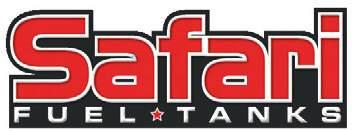
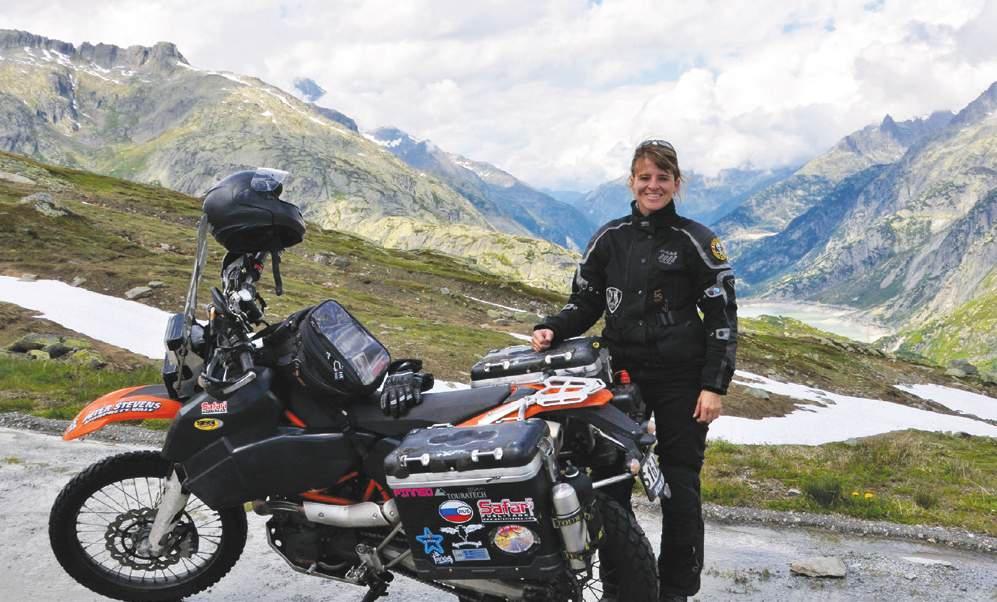
Perforated core with lifetime packing
There are not a lot of pipes in this next category. Staintune and Barrett are the two most prominent. They don’t use a glass-fibre packing, they use stainless steel packing and it seems to last forever. Both have quiet inserts supplied with the pipes (not as optional extras). The Staintune gets the nod for durability too, with many units in service at well over 100,000km.
You can borrow a bit of technology to transfer into your glass-packed muffler by wrapping the perforated core in stainless-steel wool for a layer or two. This will protect the glass material from being blown out. Any industrial-supply company will be able to order the stainlesssteel wool in for you. The longstrand fibreglass packing is available free from yours truly. I hate unpacked mufflers so much I give the packing away free in some vain hope it’s helping the collective masses.
Right: Free muffler packing! Nick is so keen to keep bike noise levels acceptable that he makes quality packing available free to those smart enough to use it.
It should be noted multi-cylinder bikes don’t have as many problems with packing blowing out of mufflers as singles. The pressure-wave pulsing of a single seems to dislodge the packing pretty quickly.

If you just cannot have a stock muffler, my suggestion is to get one that either needs no repacking (Barrett and Staintune for instance, and run the ‘quiet’ inserts), or run cans with plenty of surface area to absorb noise, like the twin mufflers on the Ténéré 660s. They do a good job even in perforated, glass-pack form.
Buying a motocross-inspired muffler for an adventure bike is just asking for the world to hate you and, in turn, the rest of us.


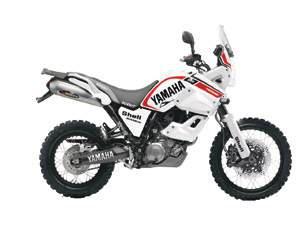
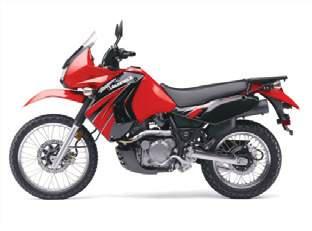


So, what’s too loud?
Do you need to wear earplugs?
Do your mates hate following you?
Do you get a headache from your own noise? Do people give you a dirty look when you ride past?
If that’s you, do something about it before we alienate the general public even more.
If you just love the sound of a noisy motorcycle, go drag racing and stay the hell away from the rest of us.

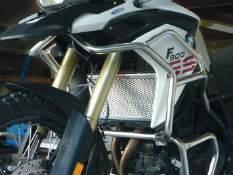
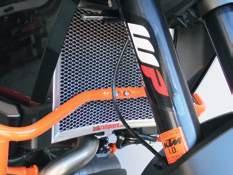
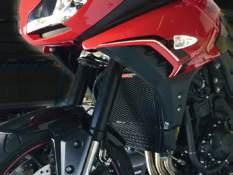

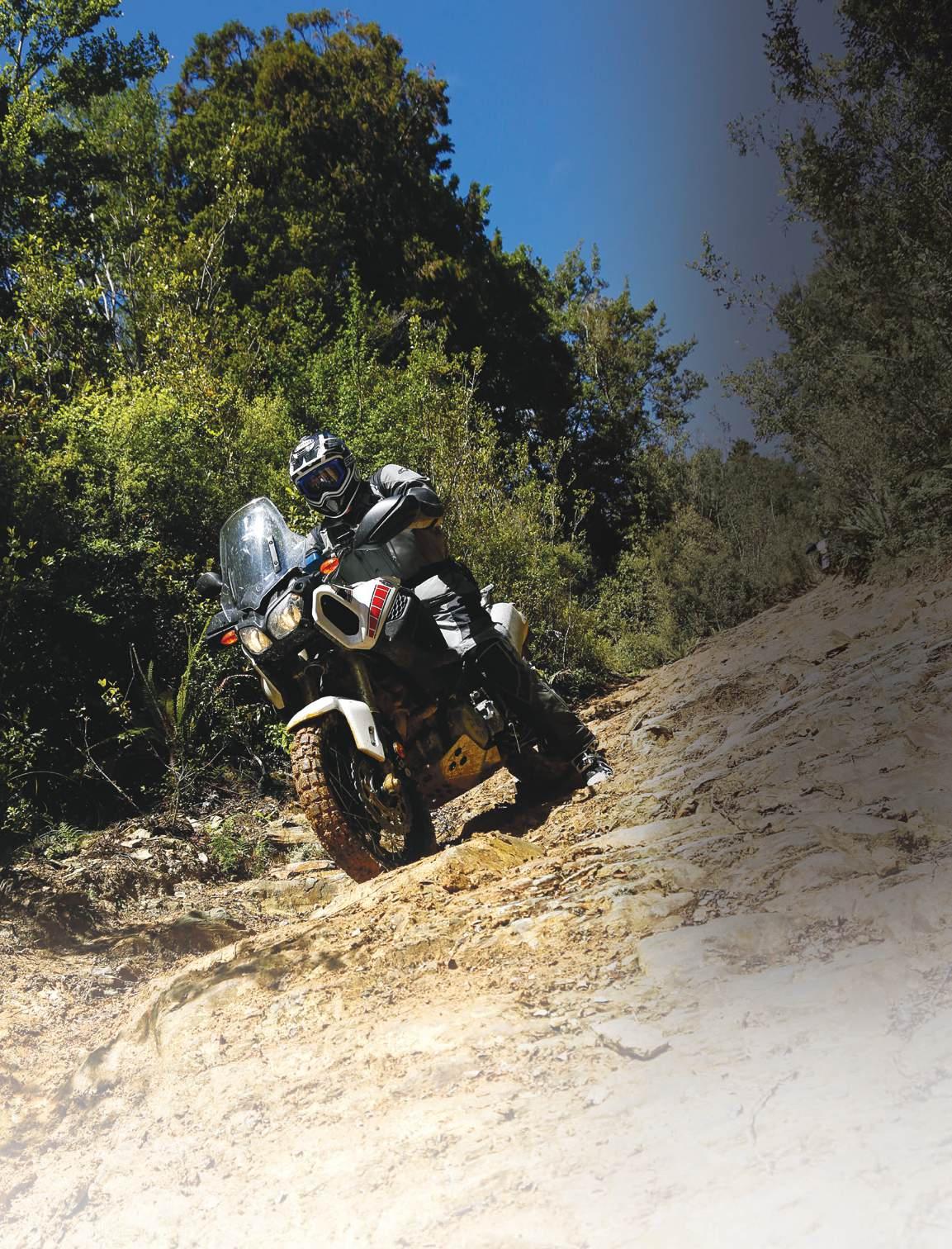
Adv: What’s your official title at Yamaha Motor Australia these days, and how did you start riding?
PP: I’m Brand Development Manager, which is principally about the behind-thescenes stuff.
I’ve been in the industry since 1972 and actually didn’t start riding until I was 17. A guy I went to school with in the outer
Those who’ve been around a while know Peter Payne as one of Australian motorcycling’s quietly spoken true gentleman. Having recently returned from a long stint with Yamaha in New Zealand, we caught up with the bloke who made our jaws drop by taking the Super Ténéré through terrain we thought was challenging on a WRF. Not only does he take the bike through that terrain, he does it in a very tidy, unflustered and commanding fashion. He’s so tidy his hair somehow stays neat when he takes off his helmet. Any wonder he’s called Mr Clean. We wanted to know how the man who’s now one of Yamaha Motor Australia’s management got his start.
Main: No photo-trickery here. That’s a frigging steep, rocky hill, and Mr Clean’s making it look easy on the big Yamaha.
Below: Peter Payne – Brand Development Manager for Yamaha Motor Australia, and a bloke with plenty of ’bike cred.
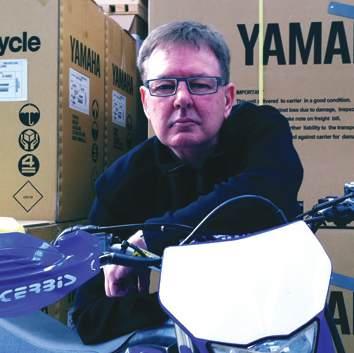
suburbs of Brisbane had an AT1 Yamaha that he’d received for his 17th birthday, and he used to ride it to school. I was intrigued to the max with it, and eventually one afternoon I got to ride it along the bank of the nearby river. I was just like, “How good is this!”
But it wasn’t until the next year after I’d left school that I got my first bike, a Suzuki TS185.
Carel Berendes (pronounced Carl) was the local motorcycle dealer. I used to walk past, and often look inside, when catching the train to and from school. He sold Suzukis. It wasn’t a big dealership and he did lawnmower and small-motor repairs,
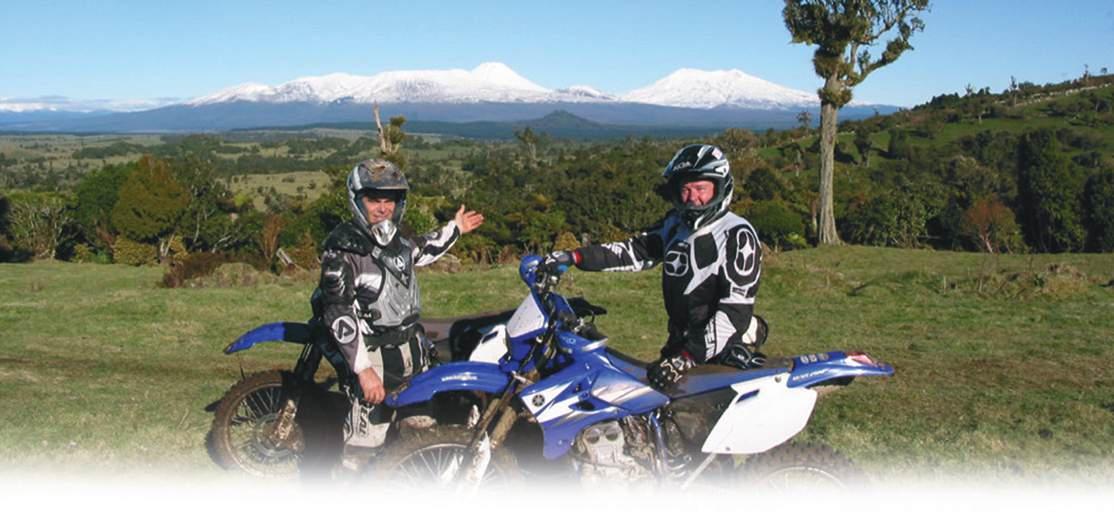
but he was a true enthusiast. He was a keen road racer who also knew about the Six Days and all that sort of stuff that we’d never heard of.
I just wanted a trailbike, and at that time I thought a DT1 would be cool. I thought they were the neatest thing of all, but they were too expensive for me. Carel advised not to get something that big. He suggested I get something lighter as it’d be easier to learn on.
So I went, “Oh. Okay!” as he knew what he was talking about.
I eventually went trailriding with him, and he was also friends with Brian Foster, who was then a Sales Manager with Yamaha, and Vince Walker, who was also a former road racer. Those guys taught me a lot. Carel the Suzuki dealer also had a 185 Suzuki that he’d fitted with a 21-inch front wheel, alloy guards, a tank bag, a little headlight and a little tail light, steel footpegs, knobby tyres and so on…this was 1971. I was like, “What’s all that for? And what’s a Six Days?” They tried to tell me, but it wasn’t until I saw On Any Sunday that I knew what the ISDT was.
The first competitive event I rode was in 1972 at Beaudesert, and I think it was Queensland’s first enduro. Adv: What brought about the start with Yamaha?
PP: The 185 Suzuki was great and Carel was right, I did learn a lot, and then I moved up to a TS400.
Initially my parents didn’t want me to ride. They wanted me to learn to fly as that was a bit of a family thing, but I said, “Nah. I want to be around motorbikes.” I didn’t care if I had to sweep the floors, I just wanted to
be around bikes, and eventually I started working with a Yamaha dealer at Moorooka in 1972. Steven Cotterell, (now Director and General Manager of Yamaha Motor Australia) was just as fanatical about bikes and riding, and we became friends and riding buddies. Eventually I started working for Annand and Thompson, the Queensland Yamaha distributors at the time, in 1974, and in 1975 we officially started the Yamaha enduro team for Annand and Thompson. Steven used to work there as well on and off while juggling work, riding and Uni.

“Those round things? They’re wheels.”
Adv: Racing in the ’70s must’ve been very different to today.
PP: The QTRA (Qld Trail Riders Association) enduro events were running at the time, and usually they were a single 300km loop to be ridden in a day with a few special tests included on the trail. For a two-day the loop was usually a reverse of the first day. I was still learning, but I finished those first couple of events okay, and in 1974 I won the Queensland State Championship for my class, as did Steven. In 1975 we went to Oberon
for our first interstate event and that was an eye-opener. Again we went okay, and at the end of that year we went down to Victoria for the Newry Two-Day, run by Norm Watts. It was a great event, and we got gold medals. I still have the memory of the fresh smell of the eucalyptus forests that were so different to Queensland, and the looks from the Victorians wondering what we were doing so far from home.
We’d also started to really develop the bikes around this time, and the first real development project we built was based on the YZ125C alloy-tanked Monocross motocrosser that was converted to a 175cc enduro model. Another friend we rode with, Bob Esler, had the first one that was developed with input from him. It had a few teething issues, – like no power until very high revs – but they were eventually ironed out. We then built one for Steven, and he won a lot on that bike while I was on the 400cc models.
We’d do motocross as well, but I was never any good at it. Steven was an A-Grade motocrosser and did well, but I was an also-ran. I just wanted to ride single trails in the forests. The footage of Malcolm Smith in On Any Sunday on the tree-lined single track during the ISDT in Spain is indelibly imprinted on my mind, and that was my favourite type of riding. Motocross wasn’t.
There were some great events as enduro began to take shape in the ’70s – the Forest 300s at Dungog were great and I see that it’s been suggested to run one again in the future. The Lance Watsons, The A4DEs, Kenilworth in Queensland…
John Nic (left), founder of Kiwi Rider magazine and NZ legend, and Peter Payne show why he enjoyed his time there so much. That kind of terrain is everywhere in the Shakey Isles. u
Bathurst, Orange…they were all great events run by a lot of enthusiastic people.
The first Australian Four Day Enduro Championship at Cessnock in 1977 was a bit of a disaster for both Steven and myself. I had a head-on with one of the organiser’s cars on the second section. That was the end of event for me as the bike was damaged. Steven broke his wrist on a slippery wooden bridge not long after.
I won another championship in 1978, and the Yamaha team continued to go well. We had ITs by then, and the 1978 IT400 I had was a great bike. It was just one of those bikes that was a real gem. I had the chance to go to the Six Days in Sweden that year, but I really didn’t have the money to do it.
In 1980 I got another Queensland Championship and we won the Trophy Teams event at the Four Day, but I rode Husqvarna for a short time as we had sponsorship that allowed me to go to the ISDT in France. Adv: That must’ve been an experience.
PP: It was an awesome experience as well as a total eye-opener.
That was the year Geoff Ballard won his final moto at what was the last ISDT before the name changed. GB had been in Europe for the year living in his old green Kombi and he’d really matured. He was always fast, but by then he’d risen to a new level.
That led into the 1980s, and enduros had begun to change. In general they’d become smaller loops ridden several times, instead of one big, long loop, and had motocross-style special tests instead of the trail type. I was just getting bored with the repetition and I decided that was it.
I went to the Six Days in Italy in 1981 and did okay, finishing with a silver. It was an okay event, but I wanted to do other things as the trailriding had changed. I was still working for Yamaha and I continued on, but I wasn’t competing in Enduros. Adv: You moved to Honda. PP: I did. In 1982.
There was a lot of crossover of staff back then. The Yamaha distributor and
Honda distributor were owned by the same parent company, and when a pretty good job came up with Honda one of the managers there who used to work for Annand and Thompson Yamaha suggested I apply for it. I said, “Okay.”
I ended up staying there until 1997. Meanwhile, Steven had his own Yamaha dealership from 1980, but had come back to A&T Yamaha in 1984 as Sales Manager. When Yamaha Motor Australia had taken over A&Ts in 1989 the Director was Bill Vivien. Bill was my boss when I first started in spare parts with Yamaha. It was a bit of an in- joke between us with them asking repeatedly, “Why don’t you come home?”
I really enjoyed working with Stuart Strickland when I was at Honda, but in 1997 I went back (home) to Yamaha, and I still hadn’t really ridden any offroad bikes.
Adv: Was it the change back to Yamaha that started you riding again? PP: It was the YZ400F in 1997.
We had a pre-production model

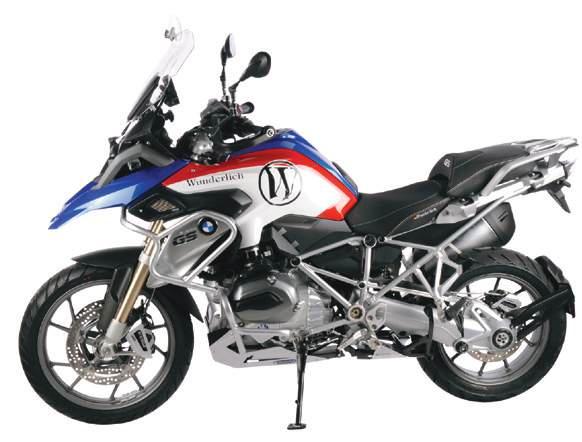
arrive at work, and I looked at it and thought, “I just have to ride this thing.” I took it down to Steve Smith’s property at Beaudesert and wondered what it was going to be like! The handling and power were fine, but I couldn’t believe the brakes. Disc brakes front and back! You could go through water and you still had brakes. You could go down hills and you still had brakes. You could do anything and you still had brakes. It was the biggest single thing that hit me after almost 16 years off dirt bikes. The brakes were amazing.
I began doing some trailriding again, and together with Steven, we again started doing a bit of development work.
I’m a bit of a pain for neatness and having everything just right, but I’m okay with picking up things from bikes just by feel. I did some development on the early WR250F along with GB and Steven, and eventually went to Japan with some development work there. We took Ben Grabham along with us for the first electric-start WR. He was riding Yamaha then.
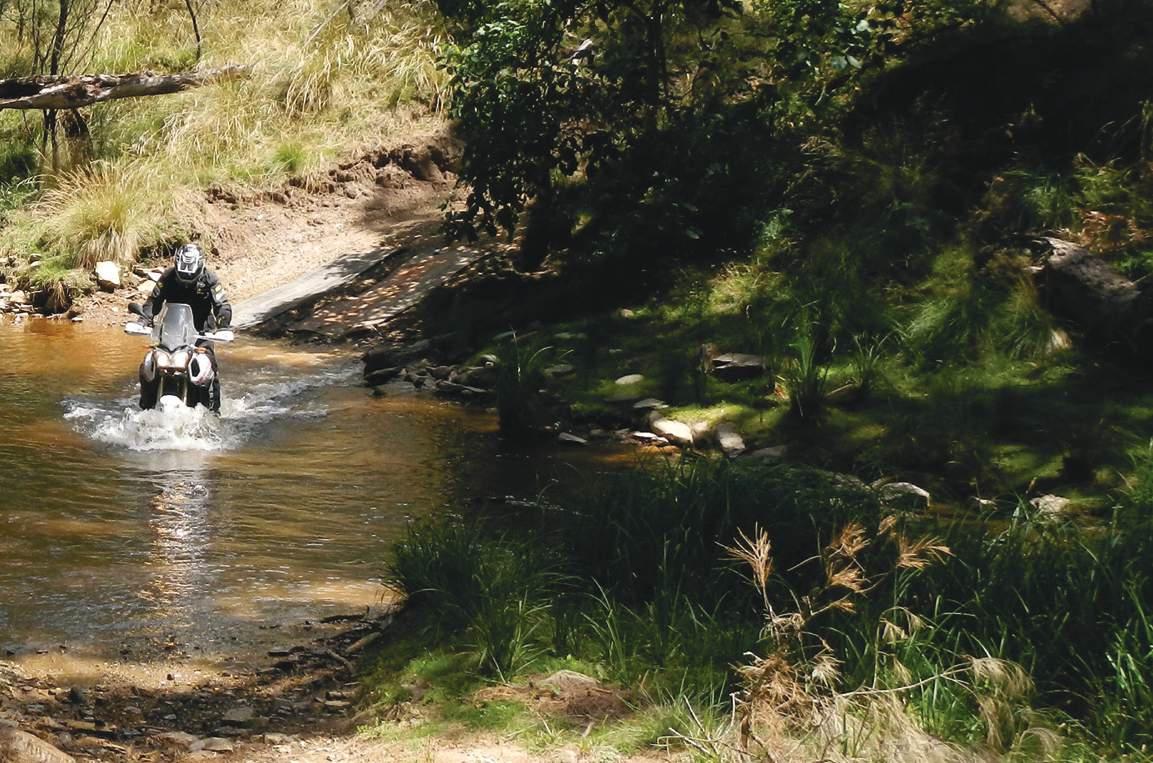
I was doing the riding with the development of the bikes, and that led to more trailriding.
Adv: You went to New Zealand for Yamaha.
PP: Yeah. When Yamaha took over from the previous distributor we had to change things, and it meant changing a generation of the culture about Yamaha in the marketplace. It was difficult at times, but I really enjoyed living there. I even got used to the cold and wet, and I especially loved the riding. I was initially to be there for two years and almost nine years later I was still there.
We had some success in New Zealand eventually.
Adv: Now you’re back in Australia and Yamaha is having a lot of success with the Ténérés. We’ve spotted you on trails here and there, and you’re as tidy and composed as ever, still riding the cleanest lines and making everything look easy. Will we ever get to see you with a Super T stuck on the upside of a sandy dune or drowned in some rocky, fast-flowing creek?
PP: (Laughs) Hope not!


The Dark side
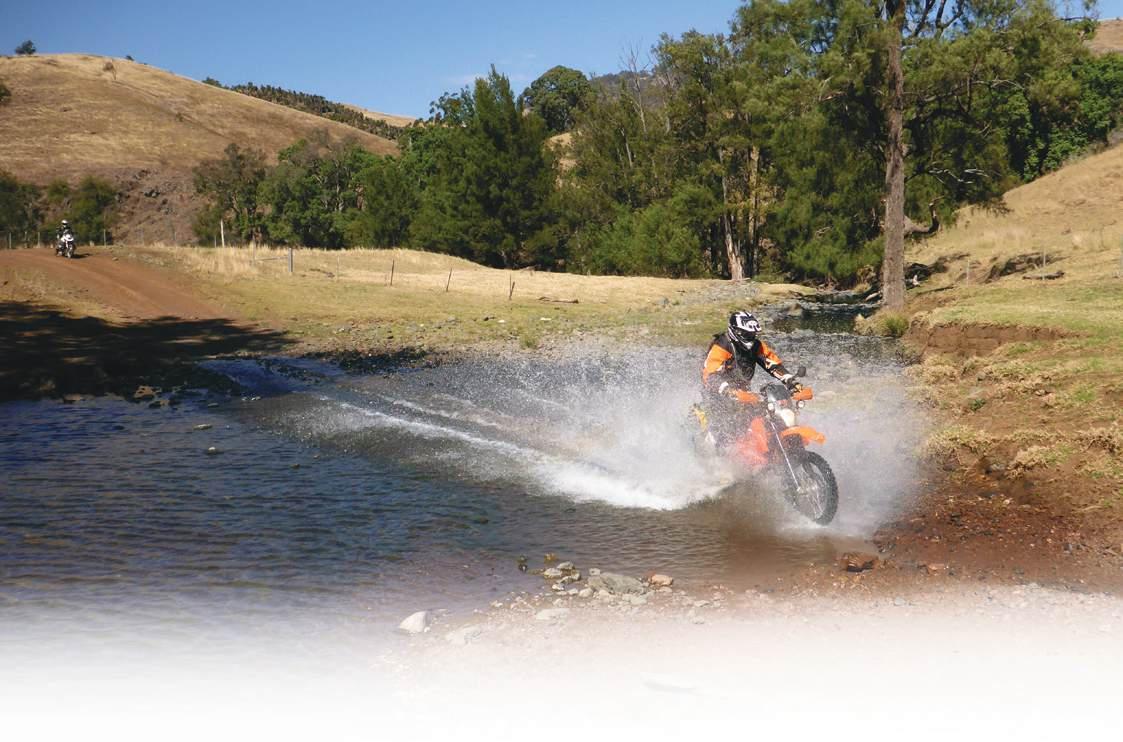
Main: AdvRider Mag’s publisher deals with one of the 21 creek crossings on the afternoon run to home.
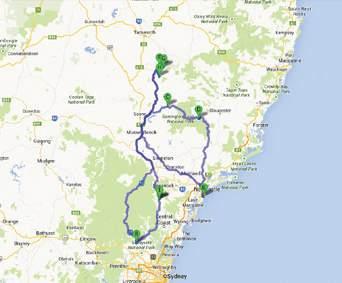
What started out as a two-man, one-day ride to redeem a rider’s fallen pride ended up as seven riders out to photograph the headwaters of the Hunter River in NSW.
Most of us don’t need an excuse to go for a ride, but we have to come up with some kind of believable justification for our Significant Other. These reasons can, at times, be quite spectacular.
In this case the need to complete a section which had got the better of me once before would’ve been perfectly obvious to any rider with even the tiniest
levels of testosterone, but I suspected the motivation might not have carried the same urgency with others in my household, so something a little more Bear Grylls was called for.
“We’ll search for the source of Hunter River,” I declared, “Like the African explorers of old searching for the source of The Nile!”
Whether or not this was credited as a “good reason to go riding” I elected not to find out. I packed my clobber and rode off into history.
This particular ride sprung out of the need to re-ride the first day of the 2013 APC Rally, hopefully without the dramas of our last attempt.
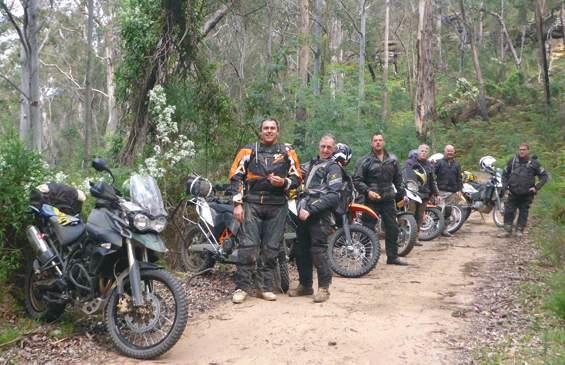
The contenders for this jaunt were four blokes from Sydney and three Hunter Valley locals. Three of the bikes trailered up from The Big Smoke for the 8:00am kick off. Laguna, our start point, was halfway between Bucketty and Wollombi, about 50km west of the NSW Central Coast region and on
the edge of the much-loved Watagans. The aim of the two days was obviously to have fun, but also for the country bumpkins to show the city slickers a bit of their backyard. There was no consistency in bike brand or size. Weapons of choice for the boys from the bush were a KTM 950 Adventure, a nice, shiny, new Triumph 800XC Tiger and a KTM 690 Enduro R, while the city slickers fronted a Husqvarna TE630, another KTM 690, the bulletproof Suzuki DR650 and the mighty BMW R1200GS Adventure. Everyone was looking forward to watching the performance of the various steeds over the two days.
The only “real” (ride-it-fromhome) city slicker adventure rider was Curley on the big Beemer.
The group rolled straight into the bush on the Boree Valley Road west of the Watagans National Park. It was nice, easy going, but bloody dusty. Curley had just oiled his riding gear and within a couple of minutes he looked a bit like a bull who throws dust all over himself to show who’s top dog...or bull, I guess. Excellent

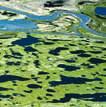




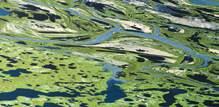

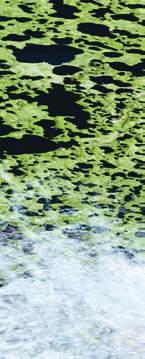

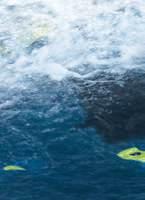










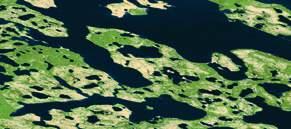
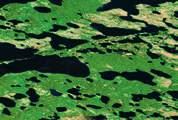

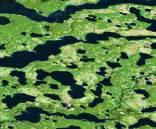







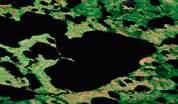

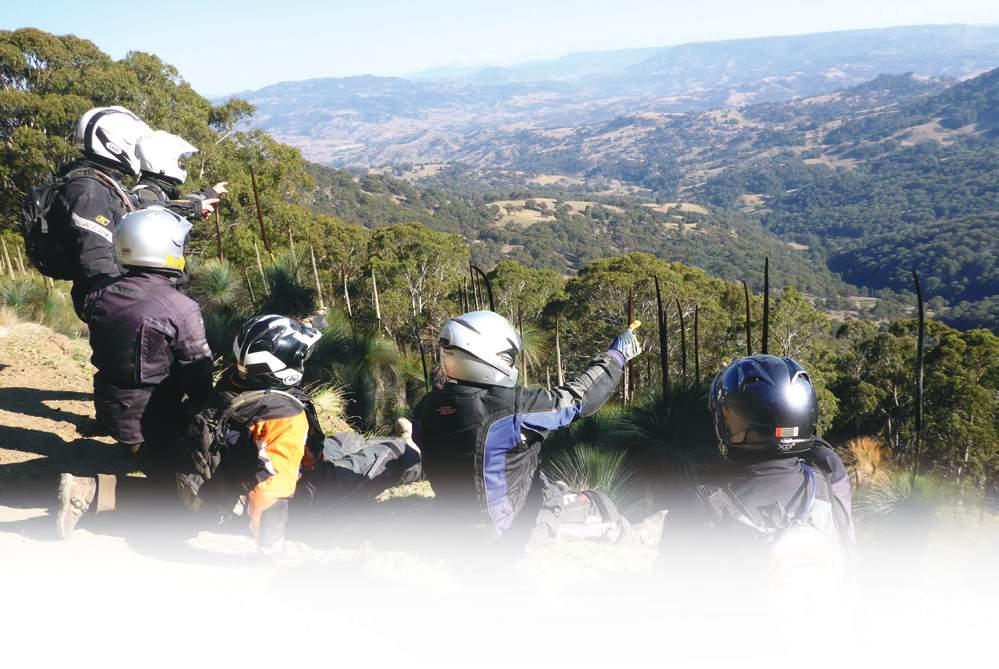
open, free-flowing trails led on to the Putty Road for a blast down the tar, and then the really interesting riding kicked off at the Putty Creek Road beginning the run through Wollemi National Park. For the smaller bikes the next few hours were an absolute blast filled with all the usual fare: rocks, hills and dozens of drainage humps –all quite fast and lots of opposite-lock and air time.
As lead rider, I had clean air and made good time, but waiting to drop off a corner man for 15 minutes or so seemed a bit long, so back down the track I went to see what was wrong. Leaving the corner men in place as I passed, I rode back about 20km before I came across the Triumph with a flat front tyre. That’s not usually a problem, except Triumph must be so confident of its machinery that the stock toolkit doesn’t include the gear needed to remove the front wheel.
Pete admitted he should’ve checked
Below: The tools needed to remove the front wheel of the Tiger aren’t in the standard kit, so the tube had to be patched in place. It meant something that should’ve taken four minutes took two hours.
that before launching off into the bush, but it’s not an unreasonable expectation for a new-bike owner to think the tools for basic maintenance would be on board. Tiger riders be aware.
So what do you do in this situation? Just patch the existing tube with the wheel in the bike of course.
All up this simple flat cost about two hours. After a bit of a powwow four riders went on to attempt our planned course for the day with the intention of a regroup at the pub at Moonan Flat that night.
The puncture boys, via the tar, got into the pub just one beer ahead of the hardcore group. One of the less-experienced riders became quite dizzy and ill during the latter part of the afternoon. He hadn’t carried a hydration pack and most likely suffered from dehydration. One would hope the lesson has been learned and from now on a drinker will be part of his essential kit.

The Victoria Hotel at Moonan Flat is a great place to stay. It’s a real country pub that boasts some history from the days of Thunderbolt the bushranger. On Monday nights the restaurant is usually closed, but they opened up for
us and provided a typical country pub meal. These rural boys sure know how to eat!
It was supposed to be an early start next morning, but a sore head or two and a photo shoot slowed things down a bit. The crew did finally get away and headed up to the snow country of the Barrington Tops.
Of course we really did have to try and find the elusive spring that is the real start of the mighty Hunter River. Questions were bound to be asked and we’d need proof. I’d been there before, so locating the source was no real problem, but it’d been a bit dry lately and the beautiful bubbling spring I’d seen on previous trips was now just a dried-up pond. Nevertheless, we took a shot or two next to the moss-covered seep which qualifies as the ‘Head of the Hunter’, and thus proved our explorational prowess and had some photographic evidence of our expedition’s success for when it was requested.
Another powwow was called when a broken throttle cable had to be dealt with and it was decided not to go too deep into the bush.
One of the good things about this part of the world is there’s always lots of choice. Instead of heading east into the wilds we headed to Nundle, via Glenrock and Barry Stations. If you haven’t done this run, then do yourself a favour sometime and give it a crack. The route takes you past Ellerston (the Packer property). You’ll be amazed as you gaze over the chain-wire fence
“Ommmm…” Curley considers moving the AirHawk from the Beemer to the fence post. He does look fairly happy there though, doesn’t he?
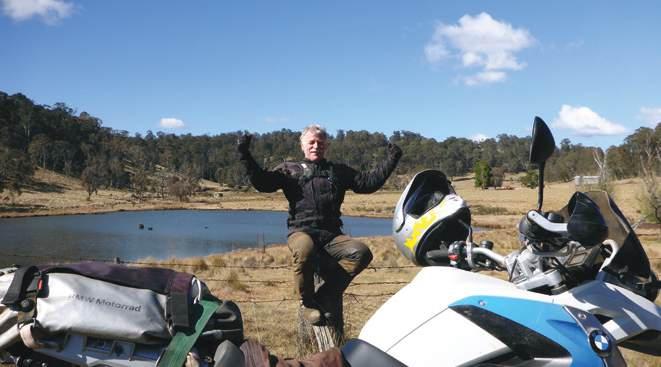
and take in the panorama of the small township and manicured polo grounds that are part of the Kerry Packer legacy.
Once you leave the splendour of Ellerston the real riding begins. If I counted correctly there were 21 creek crossings. What a ride!
It was a while since I’d last done this trip and I’d forgotten just how good it is. The big bikes especially just loved the sweeping uphill terrain as we climbed out of the valley to top out at Hanging Rock, 1300m up.
After a quick lunch at Nundle it was time to head south again, and the Crawney Pass offered a great run
before the slickers headed back down the tar while the hayseeds blasted off into the bush again for one last injection of creeks, rocks and roost.
With 945km on the clock we arrived home having not broken a bike, and the APC bogey man who whacked me with a tree last time through there had been well and truly put in his place.
So which bike was best? As one of the boys said, “The best bike is the one you’re on today”. Ain’t that the truth.
Do you remember your first Adventure ride?
I do. It was a trip to Barrington Tops

Above: Found it! That bit of damp ground in front of them isn’t where they just peed. That’s the true beginnings of the Hunter River…it was just a bit dry on this day.
in winter on a Honda 90. Did I have fun? You bet! Was the bike a challenge? You bet! Did I come back for more? You bet!
Who cares what bike you’re on. Get off the lounge, scrape the cow dung off the ag bike, borrow your grandma’s scooter, or hop on your brand-new, fully blinged, personalised machine – but just get out there and let the adventure begin.

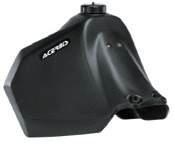





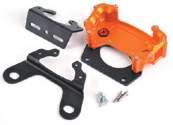


































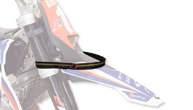

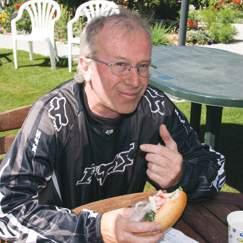
In August a swag of riders got together to celebrate an Aussie bike-journo pioneer, Tony “TK” Kirby.
For those who’ve been adventure riding since before there was such a thing, TK has legendary status – the kind of status where a big group of riders from all over Australia gathers to ride in his honour each year.
That’s largely because in 1995, when Australia was embracing the Thumper Nats, Yamaha was messing about with a fourstroke motocrosser and some young Americans had just begun making the videos that were to give birth to freestyle motocross, TK walked out of his job as editor of Australia’s biggest dirt-bike magazine and kicked off his own venture, SideTrack Magazine.
He’d been a huge exponent of the KLR600, then the XR600, and most BMW adventure riders of today revere his name for his exploits on an 1150GS.

TK first came to most riders’ attention when he signed on as Features Editor at Australasian Dirt Bike in the early 1990s. He’d been working at the lab which developed the slide film for ADB, and during a visit by the magazine’s owner, TK showed him a few pics he’d taken himself on an outback ride.
One thing led to another, and before long TK had his start in publishing.
He would go on to become editor of that iconic journal in late 1993.
Carving his own rut
SideTrack was a bold move for a couple of reasons.
First of all, it was Australia’s first motorcycle magazine – one of Australia’s first magazines of any kind – to go “direct-to-plate”. What that meant, effectively, was the magazine was produced using digital technology, and in 1995, that was about as radical as things could be.
But there were very few people around, then or now, who could match TK for boldness or backbone. Not only was SideTrack direct-to-plate, its content was entirely adventure riding.
– dealer principal at Dalby Moto and hard-bitten adventure campaigner. When Blaxland, Wentworth and Lawson first crossed the Blue Mountains, they probably did it by following Hartley’s knobby tracks. He’s been riding THAT long.
“I remember TK as a person who was so passionate about what he did with his SideTrack Magazine that he literally lived and breathed the adventure. No doubt there are abundant examples of this, but one personal example is when he turned up with his slide-on camper, bike trailer, bike, race quad and canoe and simply set up home/office in my garden beside
This was a shock to everyone. There was no “adventure” riding back then. There was trail riding, and some people rode big trailbikes into the desert sometimes, but the idea of adventure riding being a section of the sport on its own was science fiction.
TK made it a reality.
In the process he showed us rides that make the highlights of any rider’s list today. The Canning. Across Australia. Birdsville. Arkaroola. Cameron Corner. Lake Eyre. Poeppel Corner, The Gibb River Road… these and many others were names unknown to a fledgling adventureriding group in the mid-1990s. He wrote about things the mainstream dirt-bike mags considered ridiculous or irrelevant, like screens, large fuel tanks, dealing with dust, locked gates on public thoroughfares and how loud bikes would put an end to the sport. TK rode and wrote about all of those places and subjects. He opened a new world of possibility to riders across the country.
As a rider TK wasn’t exceptionally fast, but he was one seriously tough bugger.
When it came to manhandling bigbores through tough terrain, he was the master, all 70kg of him.
And if big-bores made something
the dam and continued to do work on the next edition of SideTrack
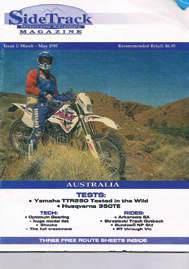
In the same week we then went to Manar Park near Gayndah and ran the subscriber’s ride for 2000, and I have no doubt he would have punched out a few more paragraphs in the few spare minutes he would’ve had over the weekend.
Tony often related stories of how he’d compiled magazines in National Parks, beside dams, overlooking oceans or from atop mountain ranges. He had all the equipment in his flash camper to build the whole magazine: stories, photographs, advertising…and all content was done by Tony in the camper and then sent on to the printers.
I guarantee no other super-successful magazine in Australia would’ve ever been put together in a mobile office/home.
Some of the places that SideTrack would have been put together would astound many, but the truth is Tony was living the dream and making some of the nicest places in Australia his own front yard and office.”
easy, he’d turn around and do it on a small-bore. And do it cheaper. Doing things cost-effectively was a hallmark of TK’s philosophy, and sharing his cost-cutting measures didn’t always earn him the high regard of advertisers.
How tough was he?
He won his class in the Australasian Safari on a DR250. He took his BMW GS1150 to places that left BMW owners reeling in shock, and when finances got tight he grabbed a camper and produced his magazine as he lived a nomad lifestyle.
And when it came to planning a ride, he was the master. Aside from all that, TK was instrumental in the founding of the DSMRA and had a laugh like a demented hyena.
Spare a thought
So there you have it. That was TK.
Our sport owes him a lot, and there are a huge number of died-in-the-wool adventure riders today who’ll say it was TK and SideTrack Magazine who inspired them to embrace adventure riding in the first place.
TK sold SideTrack in 2006 and finally succumbed to Motor Neuron Disease in 2010. He stayed belligerent and unbeaten right to the last, cutting special test times on his mobility scooter in the shed with his close friends when he couldn’t sit a bike upright any longer.
That’s who those riders are remembering when they ride each year, and a bloke we should all be saluting whenever we think about the glory of adventure riding as it is today.
Here’s the thoughts of a couple of riders who knew him well…
– owner of the Motorbikin’ franchise, instigator of the Hardcore Postie runs and genuine adventure rider. Burke and Wills probably asked Phil for directions he’s been riding outback for so long.

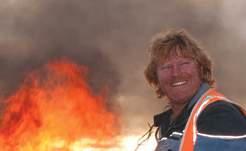
“A lot of people will remember Tony Kirby as a leading journalist, wordsmith and editor of the legendary SideTrack Magazine, but I remember him as a tough little bastard!
He had a penchant for small-bores and coined the phrase “250s thrive on revs!” when he took his DR250 to a class win in the Australian Safari. He launched the WR400 for Yamaha, setting a coast-to-coast record across Australia and dispelling the popular belief at the time that the WR was a “hand grenade”.
And he defied all odds when he rode a massive GS1150 down the Canning Stock Route, once again launching it for the manufacturers. Punters all over the country snapped up the big Bavarians and rode them out into the desert to their doom!
TK is gone now, but it turns out he had an awesome bunch of mates and while the TK Ride is about remembering him, it’s also about catching up with familiar faces.
Craig Hartley, Danny Wilkinson, Phil Gill, Yap Williams, Hedge and of course, the mighty Boulder Brothers to name a few.
So long as blokes like these are keen to saddle up and ride, TK’s memory will live on.”
www.motorbikin.com.au
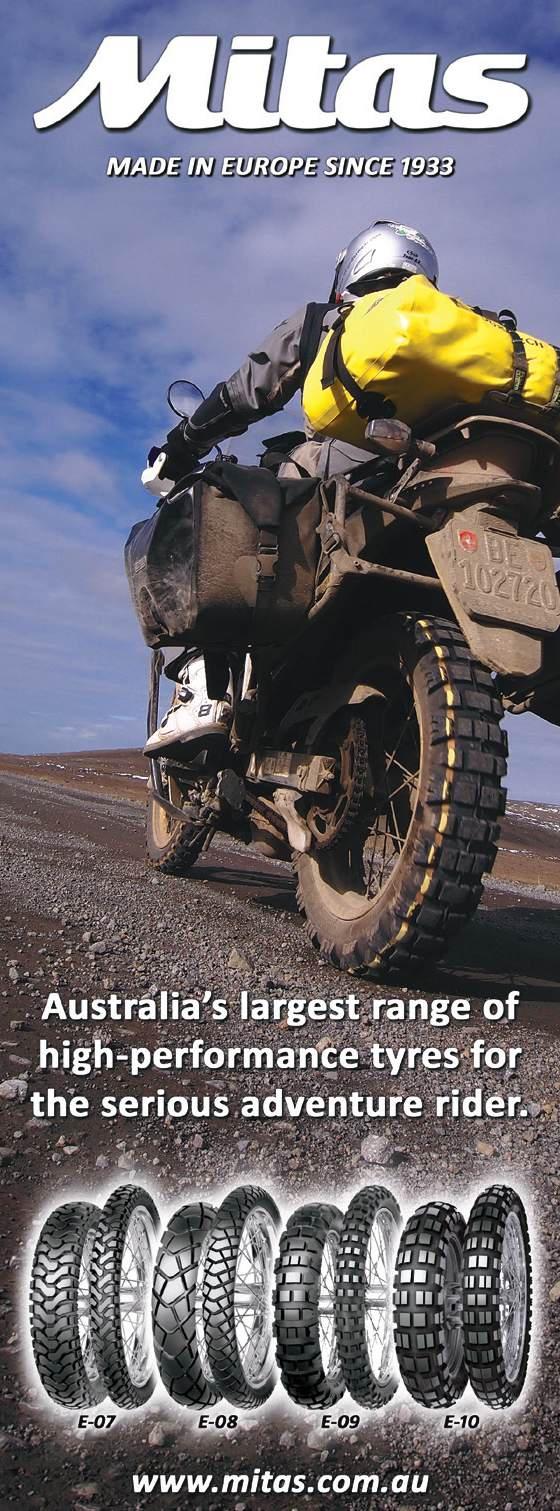
One of the best things about our sport is the people it throws together. Here’s an AdvRider chosen at random from the thousands who read this magazine. Everyone, meet…
Q. Where are you from, Neil?
Q. What’s the best ride you’ve ever done?
A. The 2011 APC Rally would have to be the most eventful and varied.
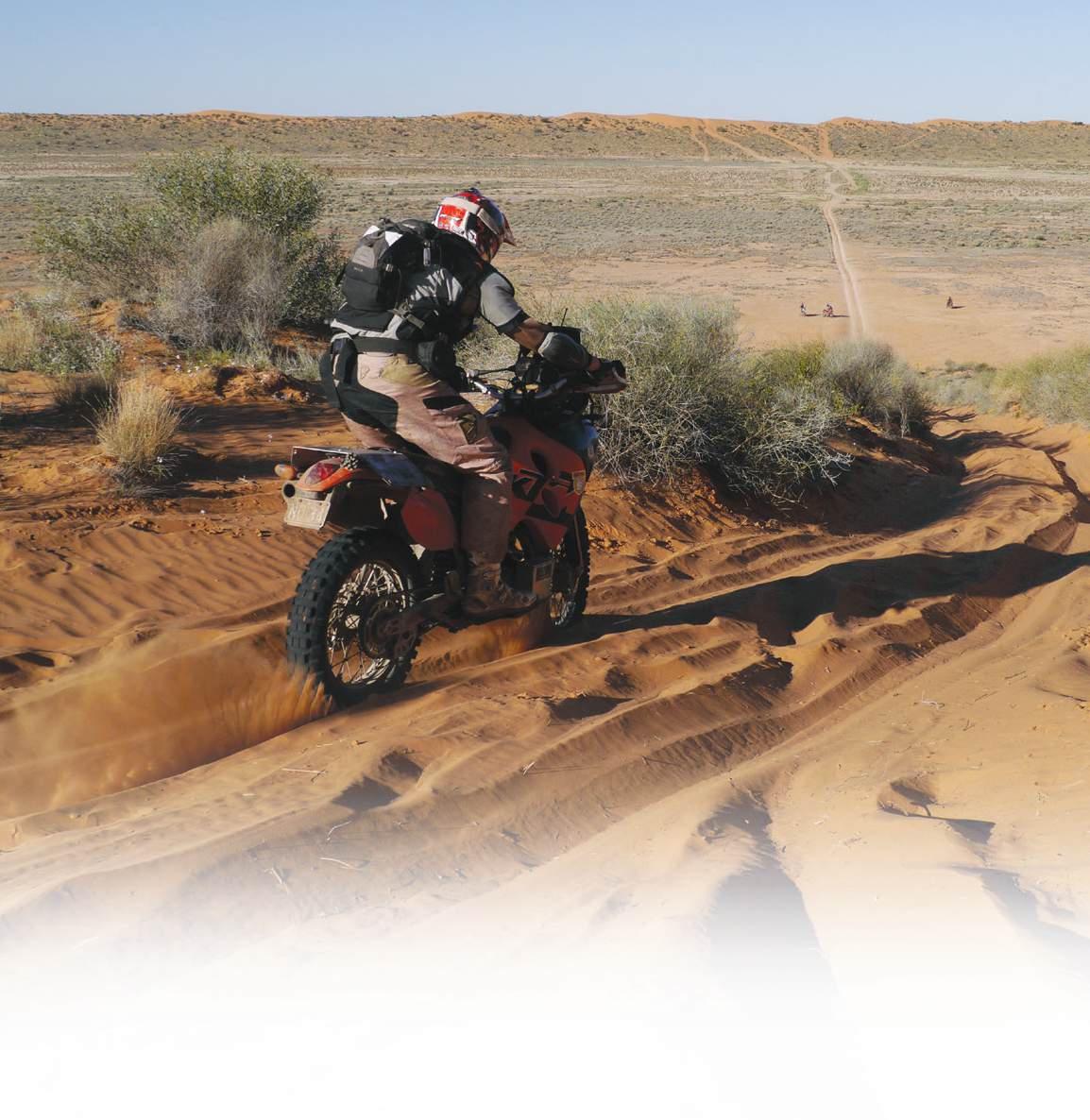
A. Originally Birmingham, England, but for the last 20 years I’ve lived in Sydney.
Q. How old are you?
A. Too old – 43.
Q. Are you registered on the AdvRiderMag forum? If so, what’s your handle on there?
A. Registered as ‘nry’.
Q. What bike do you ride?
A. A KTM640 on the long trips, a CRF450X for single track and a CRF450R for motocross.
Q. Where would be your dream riding destination?
A. Finish line of The Dakar.
Q. What do you like most about the mag?
A. It’s Australian and has some great articles and contributors.
Q. What’s something that really peeves you on a ride?
A. Nothing, although I’d rather do without electrical problems.
Q. Have you ever raced or

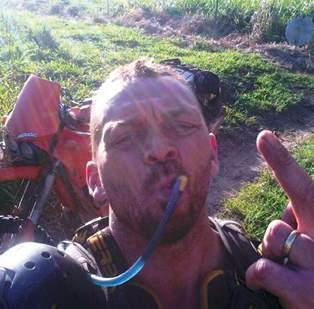
ridden competition?
A. I road raced for 10 years. On dirt I’ve ridden a couple of enduros. Last year I rode the Condo 750 and will be back there again in 2014. If I go okay I’ll enter the Australasian Safari.
Q. Is Charley Boorman a hero or a twat?
A. I like his sense of humour and honesty, and I enjoyed Race To Dakar. I very rarely watch television, though. I’ll go with ‘hero’.
Q. Fuel-injection or carburettor?
A. Carburettor. It’s much easier to fix in the bush.

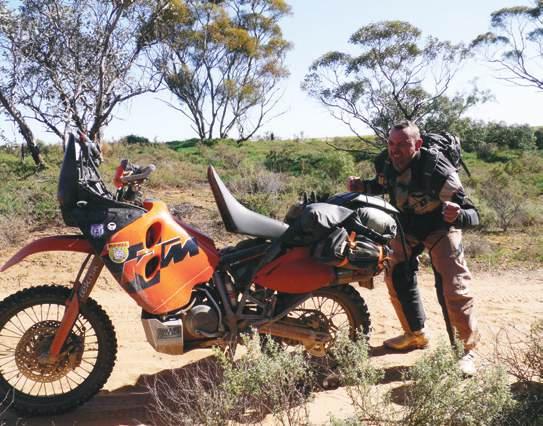

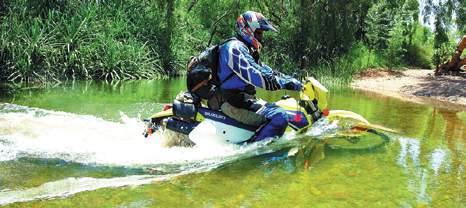




Want to introduce yourself to AdvRider Mag’s readers? Email tom@advridermag.com.au and we’ll punt you a few questions like these. You’ll need to be able to supply a head’n’shoulders pic, and maybe a pic with your bike.

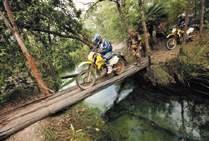


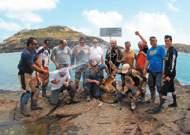


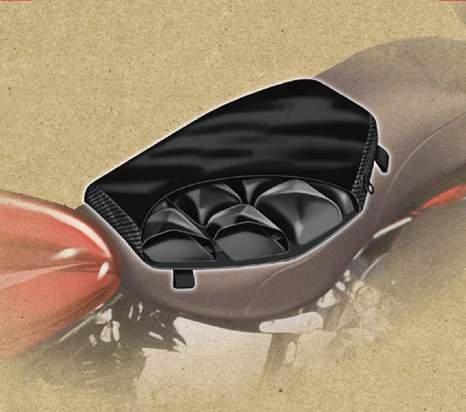


Not every adventure ride has to cover trackless desert or teeter on the edge of a treacherous mountain ledge. There’s amazing destinations and routes that require covering long, long stretches of bitumen, forest thoroughfares the maps call “secondary roads” and stretches of dirt that are basically flat and in good shape. In that terrain the Versys is at home. And a very quick, comfortable and capable home it is, too.
Afuel-injected, liquid-cooled, 1043cc in-line four built from the white-knuckle Z1000 motor powering a dualsporter! What was Kawasaki thinking?
Mr K was probably thinking, “Hmm… there’s a lot of people with a roadbike background who’re moving into dualsporting and adventure riding, and they’d like a bike with a familiar feel.”
Mr K was right. As unlikely as the Versys may look to the hardcore single-cylinder, blood-and-guts guys, there’s a huge swag of mature road-riders who’ll climb on this bike and be surprised at how comfortable and non-surprising it is. They’ll head down the Great Ocean Road or out to Broken Hill on some of the lessthan-perfect backroads – especially if they’re two-up – and rightly feel they were on the perfect bike for the job.

Looking at the spec sheet the Versys can seem a little startling. As we said, this motor earned its stripes in the take-no-prisoners world of the streetfighter bikes, but in the Versys’ incarnation it’s been tamed to a mere 118 horsepower. In keeping with the current trend on some of the power monsters we’re seeing lately, there’s a thumb switch that allows a ‘Low’ or soft setting, reducing the horsepower output by around 25 per cent.
That’s still a big handful of mumbo for those not used to it.
Combined with the nifty power settings are three traction-control settings (plus ‘Off’) and ABS. There’s no option to switch off the ABS, but for once we’re pretty comfortable about that. If you had in mind to tackle the type of terrain where ABS was a problem, this isn’t the sort of bike we’d expect you to be considering.
Of course, horsepower needs to be considered alongside mass, and measured at the brochure this is a 239kg bike, fuelled up and ready to go. That’s actually very manageable, and
Left: A multi-function switch cycles through the functions on the various trip meters and gauges, as well as the different traction control and horsepower settings. It was a little fiddley to get it in the right selection mode, but it allowed settings to be changed on the fly.
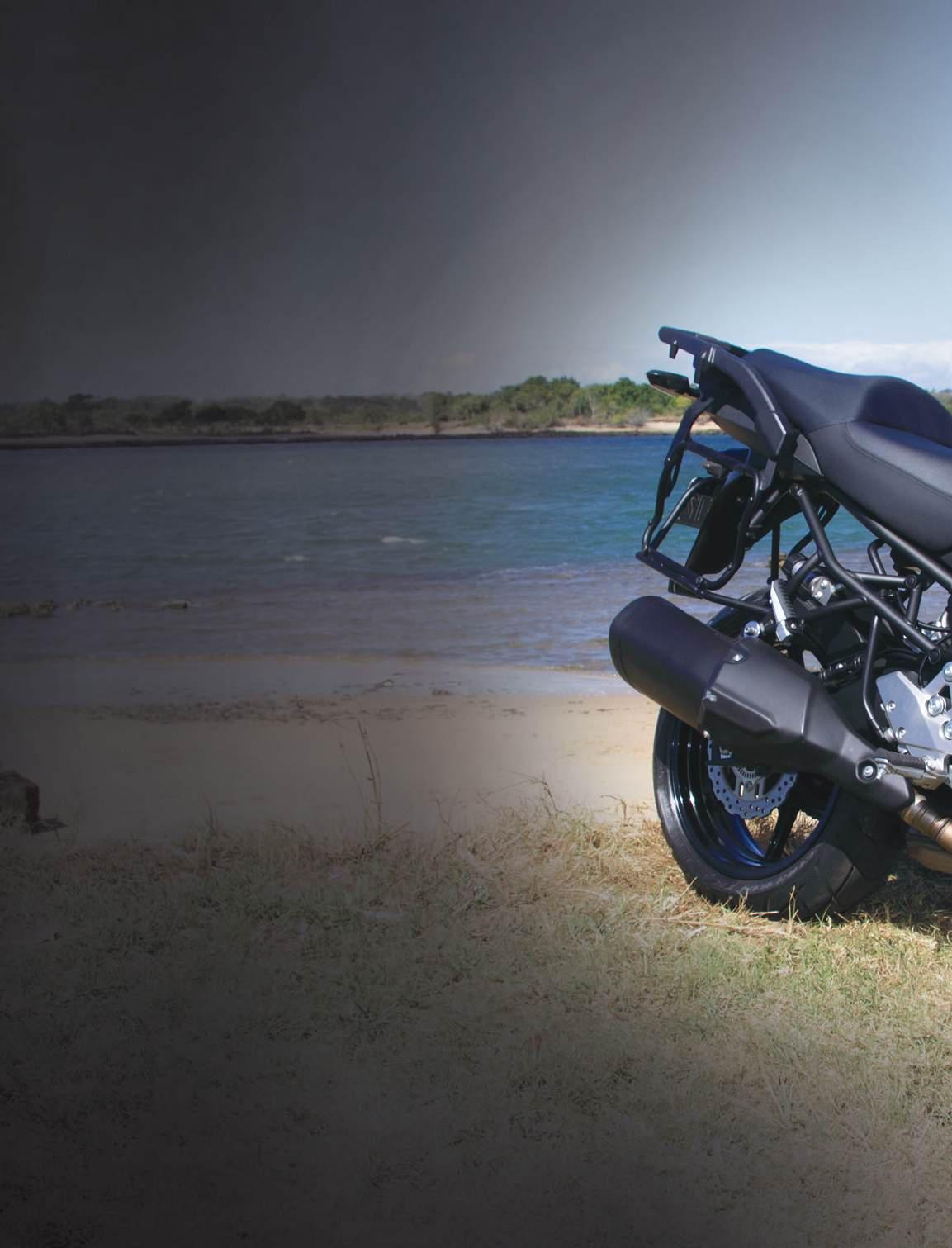
with figures like that it’s a weapon.
Kawasaki also explains in the media kit that the tuning of the motor has been aimed at a strong low- and mid-range response, and that seems entirely sensible given the bike’s intended use. The bike pulls away well from idle and is very forgiving at low revs once the rider becomes accustomed to just how lively that motor is. Still, peak horsepower is at 9000rpm. That’s a lot of revs for those used to singles and loping V-twins.
The first impression of the bike revolves around what seem to be big, wide sweeping ’bars. It feels as though you’re sitting on a long-horn cow and steering it by the horns. That only lasts about a second, because then it becomes obvious that the ’bars are no wider than those we see on most dualsporters. They have a kind of sweep where they curve down
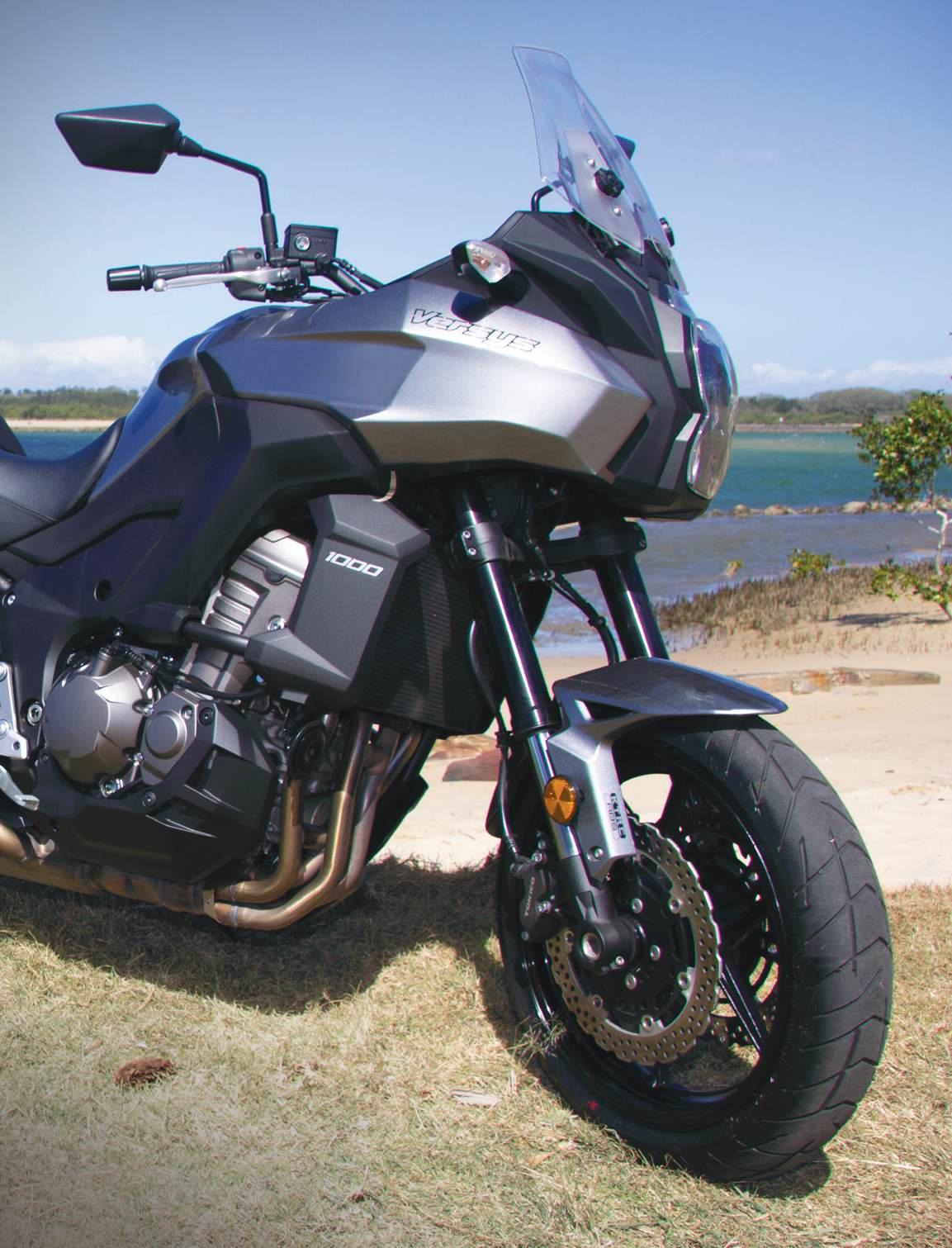
inside the fairing and that makes them seem long. By the time the rider’s mind has grasped that, it’s already spinning away on just how comfortable the riding position is. Riders around the 170cm to maybe two metres tall will sit on the that wide, comfortable seat with their
Forestry roads and bad bitumen are handled with ease. Tyres with more bite would make a huge difference on the dirt.

at both ends, even on loose surfaces. It was a very impressive feature of the bike.
The six-speed box was a smooth-shifting delight and the cable clutch was quite light. We kept thinking we wanted an extra top gear, but we realised we were riding the Versys like a twin, and thanks to the willingness of the motor we could coast along at very low revs and get done all we needed. It was only when we noticed the redline was all the way up at 10,000rpm that we thought, “Maybe we should give it a little squirt and see what happens”.
Snort and rort
Holy mother of Dog! That motor is a sweetheart, but it’s a snarling beastie too.
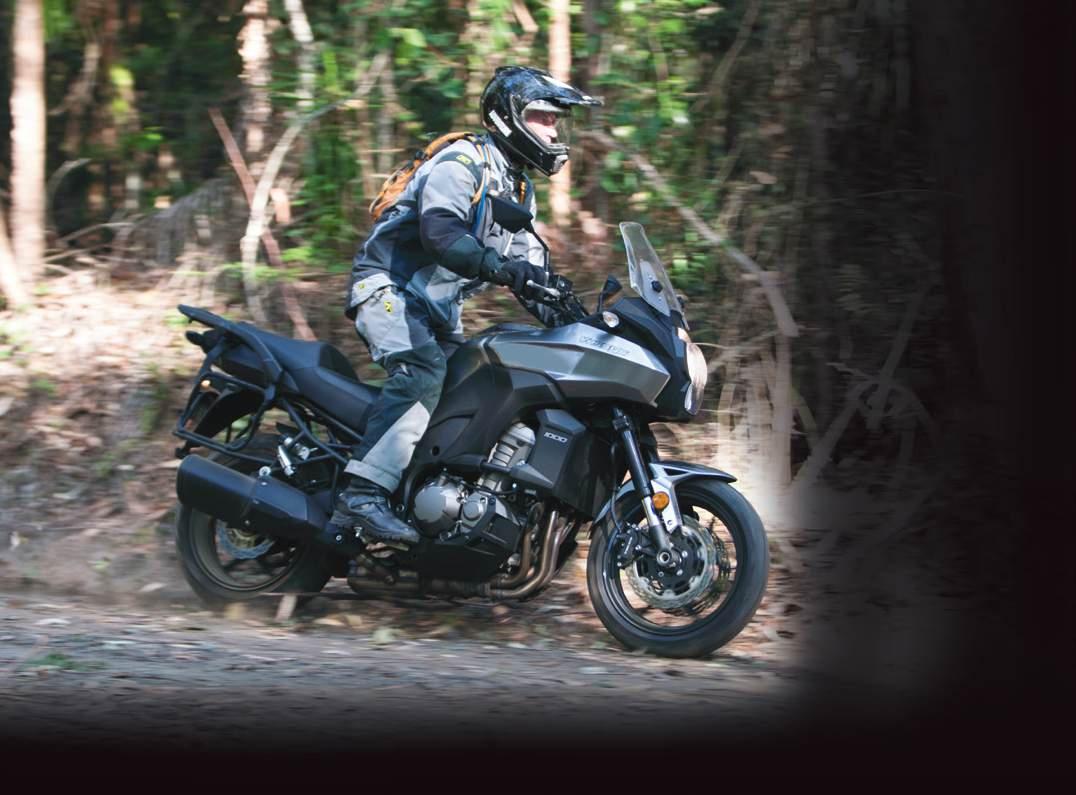
backs fairly straight and their arms in the sweetest, laziest position with their hands on the grips. The ’pegs allow a very open and easy seating position, and overall, the comfort of this bike is pretty damn amazing.The more we rode it, the more we felt that reinforced. Comfort is a very big factor on the Versys.
Before we get too carried away we should cover some of the other tech features.
Suspension is Kayaba front and rear, and both ends are adjustable for preload and rebound. The fork rebound is adjusted by a clicker on the right fork leg, while the shock has an easy-to-use winder on the side of the frame. We thought the winder was for
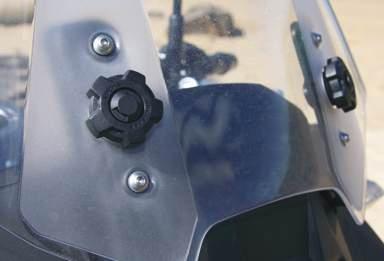
rebound, but as the Kawasaki guys patiently explained, “The tank at the end of the flexible hose is the preload adjuster hydraulic system. Wind the adjuster and it puts oil in to expand the adjusting mechanism and preload the spring. The shock is a sealed design and is gas pressurised without a separate reservoir.”
Oh.
Anyway, the winder is covered by the panniers, but they’re so easy to click on and off the bike it’s hardly worth mentioning. Shock preload is the adjustment that would be used most, so it makes sense it’s in such a convenient position.
Braking is superb. Twin Tokico four-spot calipers at the front are moderately sensational and, along with the single-pot rear, offer great feel. The braking isn’t incredibly strong at the first touch of the lever or pedal, but as we settled into the bike we realised it was a beautiful asset. Instead of a sudden snatch whenever the brakes were touched, the stoppers come on with an incredible linear application that inspired huge confidence in late-braking on the tarmac, and offered no intimidation whatsoever on the dirt. The ABS actually allowed some fairly aggressive application of the stoppers
When we finally let it have its head it’s as though it rewarded us for working out what it was made for, and the traction control suddenly went from being something we thought a bit interesting to something we found a genuine and welcome asset.
On the road at around 6,000rpm in top the Versys is sitting on about 160kph. From there you can twist the throttle and launch away with little or no effort.
On the dirt, 3,000rpm or 4,000rpm with the traction control off will be lively enough to test a rider’s competence in any gear. With the traction control on, and at the power setting which best suits the rider’s ability, the Versys once again settles down to being a very frigging exciting and fun bike to ride. The muted howling of the induction noise combines with the very quiet exhaust note and will pitch a tent in the pants of any red-blooded speed hound, but the electronic rider aids will make even a squid (like the AdvRider staffers) look good and in control.
We really enjoyed this bike, and a large part of it was down to the motor and how manageable and exciting it was.
We did take the Versys off-road, because that’s the type of riding we like. In general the bike did well, but the biggest limiting factor was the Pirelli Scorpion tyres. There’s nothing
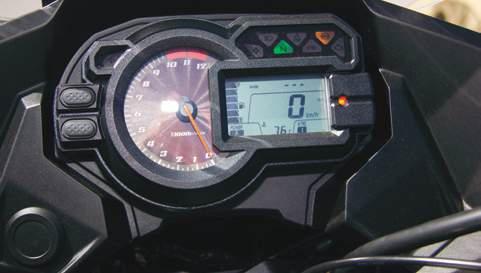
Lots of information available, including a funny little cloverleaf sign every time we backed off the throttle. It turned out to be a symbol letting us know we were in the ‘ECO’ mode – being economical.
wrong with Scorpions, they’re a good tyre, but they’re a very smooth road pattern with no knobs or bite at all. The Versys did well to cope with the dirt as it did, but with a little bite from the rubber we think it’d be quite capable in the leaf litter and loose going of State Forests.
On the bitumen it’s a delight, and of course the Scorpions did really well, so that’s a fair observation.
The 17-inch wheels front and rear shouldn’t be too restrictive for tyres, especially the rears. There should be some good performers to choose from. Mitas has a couple of good options, so there’s a start.
Over all
A great motor and sensational comfort. The Versys 1000 is a brilliant getaway machine.
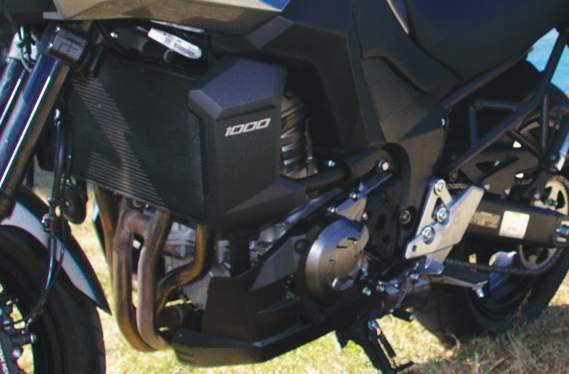
Web: www.kawasaki.com.au Rec retail: $15,999 plus ORC
Not to be too general about things, but we loved the Versys. The suspension was very capable, the motor amazing, and above all, it was extremely comfortable and a scream to ride.
The 21-litre fuel capacity gave a comfortable 300km range – and uncomfortable 50km or so with the fuel gauge flashing after that, with us having no idea how much further it’d go. That should be plenty for the riding this bike is designed for.
Our test bike also had a pair of Kawasaki hard panniers fitted. The pannier rack was incredibly sturdy, and the system for clipping the pannier boxes on and off was brilliant. We chucked all our tools and camera gear in there and forgot all about them. We couldn’t even get any water to make its way inside the panniers with the pressure washer, so we felt pretty comfortable leaving our clobber in there.
One last thing we want to give a thumbs up: the screen. It’s not huge, but it offered great protection, and the adjustment for height was the easiest and best we’ve seen. No tools needed. Just undo two thumbwheels, slide the screen to the position that suits, and tighten the thumbwheels again. Sweet!

It’s not a hard-core adventurer for tackling rocky, mountain single-track. It’s a bike made to cover long distances and crappy, second-rate bitumen and dirt road, and it does those things with incredible comfort for the rider. And of course, when you hit a road in good shape, especially if that road has a few curves and bends, the Versys will treat you to the kind of ride only a four-cylinder powerhouse with this kind of pedigree can offer.

Left: We’re not normally fans of hard panniers, but the more we used these, the more we liked them. They had the easiest-ever system for fitting and removal.
Engine type: Liquid-cooled, four-stroke, DOHC, 16-valve, in-line, four-cylinder
Displacement: 1043cc
Bore/stroke: 77mm X 56mm
Compression ratio: 10.3:1
Fuel management: Keihin electronic fuel injection
Ignition: Digital
Lubrication: Forced lubrication, wet sump
Starter: Electric
Fuel tank capacity: 21 litres
Final transmission: Sealed chain
Transmission: Six-speed
Length: 2235mm
Width: 900mm
Height: 1430mm (with windscreen raised)
Seat height: 845mm
Wheelbase: 1520mm
Brakes front: Dual semi-floating 300mm petal discs. Dual opposed four-piston caliper with ABS
Brakes rear: Single 250mm petal disc.
Single-piston caliper with ABS
Tyre front: 120/70 x 17
Tyre rear: 180/55 x 17
Ground clearance: 155mm
Kerb mass (with full fuel tank): 239kg
Maximum power: 86.8kW (118PS) @ 9000rpm

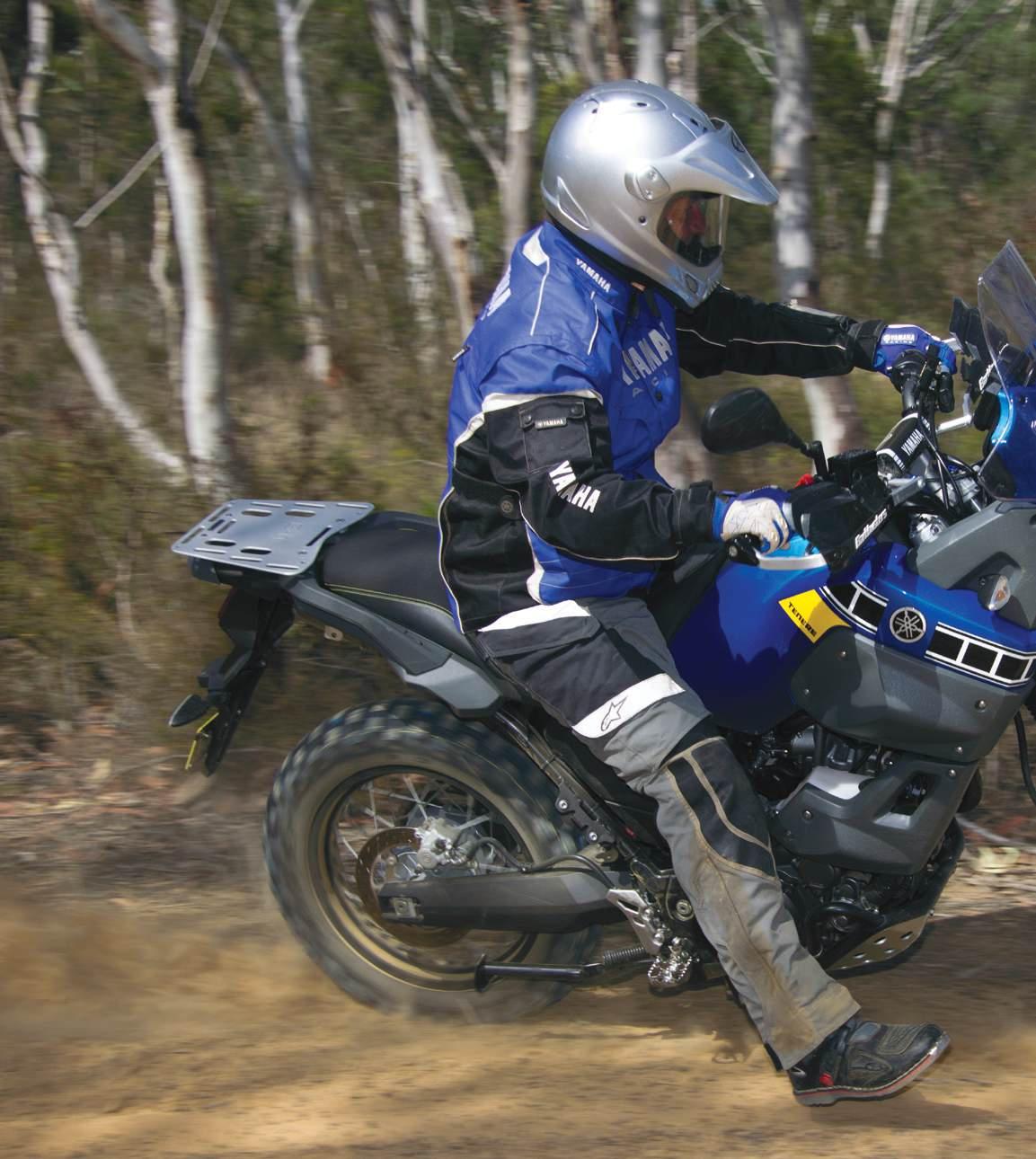
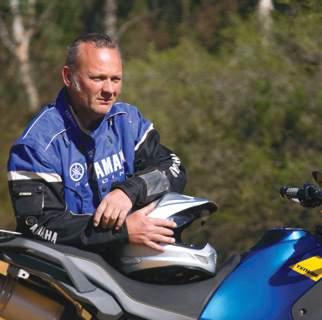
The current stock Ténéré is a good adventure bike. There’s a lot of things about it that are great. Still, there’s room for personalisation and improvement in every bike, and these days, more and more, owners are hungry for aftermarket equipment and technology. With so much available it’s hard to know where an average bloke should start. But what about someone who’s not average? What about someone who has access to leading-edge technology and first-class technical advice? When we heard Yamaha Motor Australia had built two XTZ660 Ténérés we were drooling to find out the details.
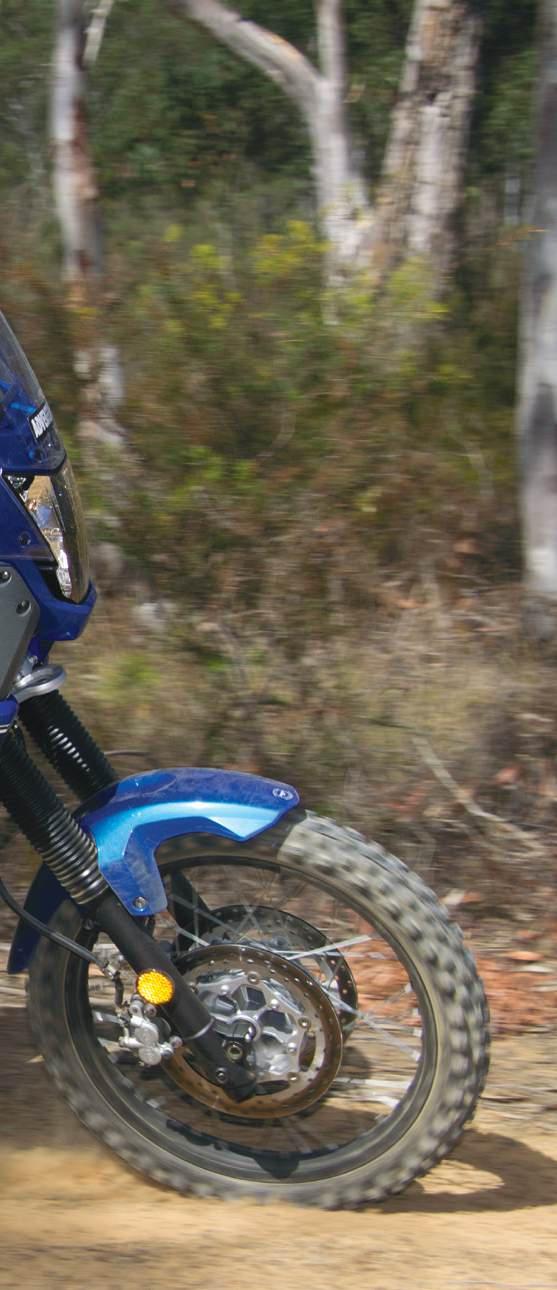
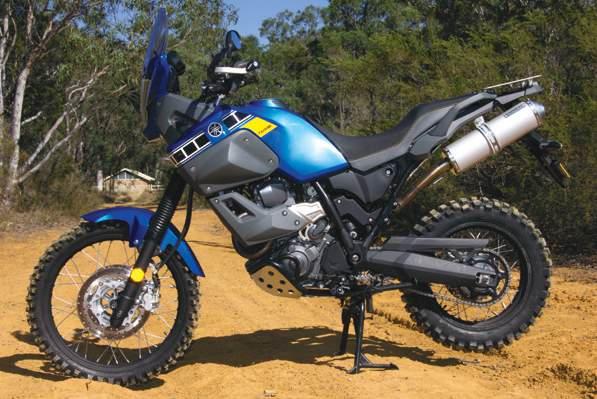
It doesn’t look radically different to standard, but it feels it.
The good ol’ Ténéré has been a favourite since Yamaha released a big-tanked trailbike in 1983, just as adventure riding was about to become fashionable.
That first Ténéré is now considered a classic, and rightly so, but the latest Ténérés are, predictably, a technological world away from the models which captured the hearts and imaginations of riders all over the world during the 1980s. Fuel injection, hi-tech plastics, and advances in metallurgy and technology in general have monumentally changed the bikes and the expectations of owners. Fortunately, the longing of riders for adventure has remained the same, and the Ténéré is still the ticket to freedom for a huge number of riders worldwide.
Finding ways to improve modern bikes is tricky. There’s any amount of conflicting toss offered on internet forums, and some things are just so frigging expensive most riders will never get the chance to try them.
We figured the guys at Yamaha Motor Australia (YMA) should have an inside line on what to look for and what’s worth having.
YMA’s Brand Manager is Peter Payne (see page 26) and one of the bikes we’re looking at here is his. Another was built for YMA Communications Manager Sean ‘Geeza’ Goldhawk. The two bikes are essentially the same, except for minor personal preferences.
Peter’s bike – the one we rode and feature here – is a 2012 model. There’s been no major change since its launch in 2008, so there’s no disadvantage in the bike not having ‘2013’ on the compliance plate. The motor, brakes and gearbox are all bog stock, except for the removal of the Air Induction System emissions-control gear on the front of the motor. The AIS is included to meet Euro and American emissions standards and isn’t required to meet ADR. Its removal not only helps save weight, but Geez says the engine has far less popping on overrun without it. A plate was machined to blank off the entry port in tight behind the header pipes.
The seat, wheels, tank and lighting are all stock as well.
That makes you wonder what’s been changed then, doesn’t it?
The aim of the game
“We wanted to go dirt-bike riding in Australia,” communicated Geez, corporately, “and we wanted to do it on a Ténéré.

But, basically, the Ténéré is built in Europe for Europeans, so the bikes aren’t as Australian-friendly as they might be. Payne and I wanted to join the Old Bull navigation rides, and even though the Ténéré is a great bike, we thought we could tune it to better suit that type of riding.
Most of the aftermarket equipment on the bike isn’t from Yamaha’s own comprehensive catalogue, but available from Adventuremoto.
“Yamaha Genuine parts are great, but they’re generic items designed for a global market,” the YMA guys serioused. “Having ridden with Steve Smith of Adventure Moto and Greg Yager, the Old Bull Trail Boss, we knew the parts they fit to their bikes get a thorough workout in Aussie conditions. So we were confident they were the right parts for the job.
“In addition we enlisted the help of skilled local technicians who understand the type of riding involved.”

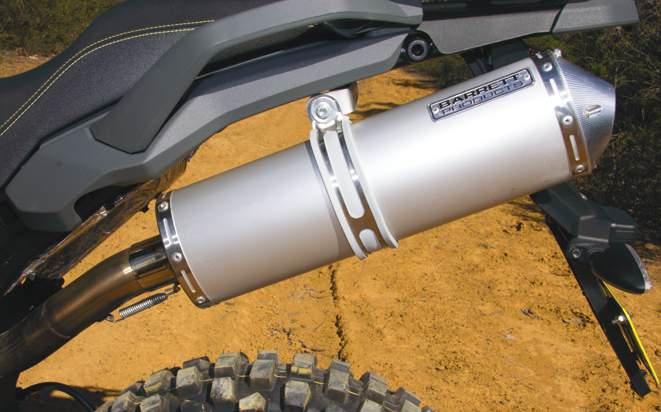
Above: A Barrett muffler shaves off a big chunk of weight.
Left: The bashplate and crash bar are a beautiful fit.
Right: Good Aussie product, and a far more comfortable alternative to the standard

have one fitted to his Ténéré because it adds weight and he jokes there’s always an adventure rider keen to practice his tyre-changing skills on the trail, but Peter Payne prefers to have it there.
Starting from the ground up, the Michelin Siracs were replaced with a Dunlop D606 road-legal knobby on the rear and a Geomax Enduro D909 road-legal knobby on the front. The Geomax is Dunlop’s new FIM road-legal enduro tyre.
Next up the suspension was sorted by Nick Dole at Teknik Motorsport.

The stock suspension on the Ténéré is quite soft, so some significant tuning by a professional makes a big difference. The forks and shock were resprung, revalved and tuned to suit the riders and the intended use. Sean’s view: “The suspension is the main change we’ve made to this bike. In stock trim it’s too soft at the front for Aussie adventure riding. The rear’s not too bad, but we’ve had both ends set up to suit the type of trails we enjoy. That means stiffer, but without losing the initial plushness of the original setup. These Ténérés can go most places a WRF can go, and go for longer because they have 23 litres of fuel on board.”
That exact suspension package –tuned to suit individual rider weight and riding style – is now available to Ténéré owners from Teknik Motorsport
Next up was a genuine Yamaha centrestand. Geez didn’t choose to
The standard footpegs are narrow, so a pair of Aussie-made PivotPegz bolt straight on, and a brake-snake secures the brake pedal alongside a snug bashplate and engine-protection rail from a company called G-it (GuardIt). G-it also makes the luggage rack, by the way.
A Barrett muffler is the second big mod.
Jason Barrett is another Aussie making premium product, and the fitting of his can allows the removal of the catalytic converter from beneath the pillion seat. With a mass of around seven kilograms, that cat converter is a swinging pendulum right up high on the bike, almost behind the rear axle. You can bet it has a major effect on the bike’s feel. It actually makes a big difference to the bike’s appearance as well. Without the twin exhaust, large muffler box and pillion ’pegs, the 660 starts to look the business, even though the exhaust volume is noticeably increased. It’s not obnoxiously loud, but it’s a hefty growl compared to the whisper-quiet stock arrangement.
The radiator hoses are given some shielding with cut-up grips, and then what Geez calls ‘the flight deck’ is fitted out to suit the riders. The BarkBusters brand VSBar (Yamaha YZ-bend) ’bars are raised 50mm and fitted with TAG full-waffle grips, grip heaters and BarkBusters VPS handguards. On the ’bars is a RAM mount for a Garmin Zumo 660 – a GPS being essential equipment for the navigational rides.
The Brake Snake, ’bar risers, grip heaters, various special tools and Clic glasses – for the mature rider – are all Ballard’s items.
And the motor?
“The motors are super reliable, torquey and very tractable,” said Geez, firing on every fourth stroke. “We like to just leave them alone.”
Riding the YMA XTZ is like a breath of fresh air. This bike has been transformed.
Compared to the stock bike this one feels like it’s half the weight and has gobs more power.
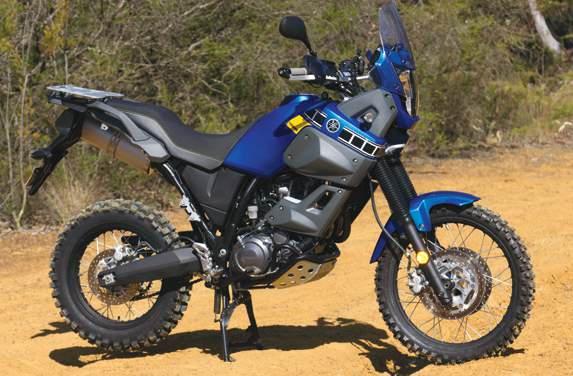
Removing the twin pipes, pillion pegs and their mounts give the YMA Ténéré a very lean look.
That’s just the feel. It probably doesn’t have any more horsepower, and its mass still needs to be respected, but the throttle response is far, far sharper than standard, and with the louder exhaust and significantly reduced weight the bike gives a very strong impression that it’s a slingshot. Cracking open the throttle gets a throaty roar from the pipe and, one way or the other, the rear wheel starts turning. If traction’s a bit iffy it churns and spins. If traction’s good, the front wheel leaps skyward.
It’s the type of throttle response that fills a rider’s helmet with a huge grin.
Matched to that motor is suspension that just plain works.
Both wheels track true and the rider’s connection to the feel of the ground is excellent. The wallowing, disconnected aura of the stock bike is replaced with much sharper, more precise steering and a bike with a far stronger tendency to track in a straight line, even over choppy, rutted ground where we thought we were going to be in big trouble. We were able to hold the throttle open and let the suspension take care of what we expected to be a potentially nasty situation.

Of course some of the smooth ride and city-boy softness have been sacrificed to achieve the result, but it’s a very small price to pay. We rode a chunk of bitumen and couldn’t find any disadvantage except the pipe being louder. Off-road, the improvement in the bike’s performance was huge.
Not much to talk about
We couldn’t help but be a bit starry-eyed at the marked improvement in off-road performance of the YMA Ténéré, but really the most surprising thing is how little was actually done to get that result. Pipe and suspension are the biggees, and that’s most of it.
Personal changes like ’bars, ’pegs and various comfort items will vary from rider to rider, but we’ll never believe there’s a Ténéré owner who wouldn’t grab his knobby with excitement at the thought of this kind of performance gain, and it’s available to everyone.

Engine type: Liquid-cooled, four-stroke, single cylinder, four-valve, SOHC
Displacement: 660cc
Bore/stroke: 100.0mm x 84.0mm
Compression ratio: 10.0:1
Lubrication system: Dry sump
Fuel management: Fuel injection
Ignition: TCI
Starter: Electric
Fuel tank capacity: 23 litres
Final transmission: Chain drive
Transmission: Constant mesh, five-speed
Length: 2246mm
Width: 900mm
Height: 1477mm
Seat height: 865mm
Wheelbase: 1500mm
Brakes front: Dual discs, 298mm
Brakes rear: Single disc, 245mm
Tyre front: 90/90-21 M/C
Tyre rear: 130/80-17 M/C
Ground clearance: 260mm
Wet weight: 209kg with 23 litres of fuel

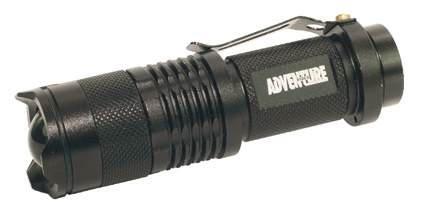


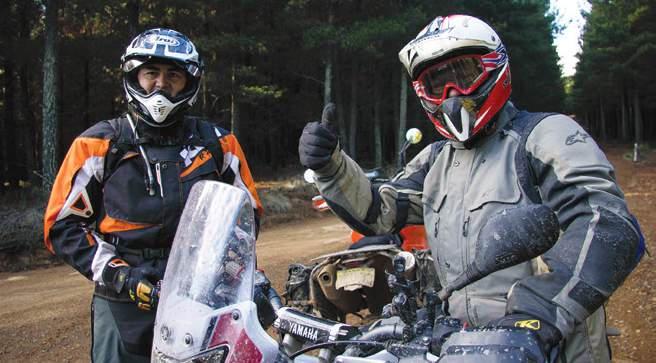

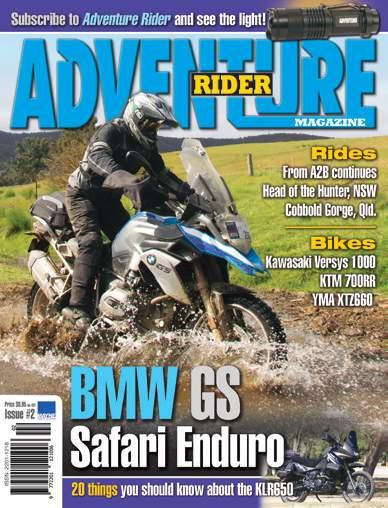
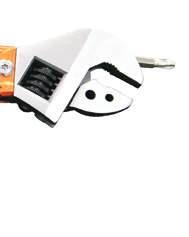




Anyone who knows me knows I’m not a risk-taker.
I’ll always choose to watch people on the roller coaster over actually getting on the ride. So I guess it must’ve come as a big shock to friends and family when I decided to get my bike licence. In the beginning I mainly rode
with a group of girls on sports bikes and cruisers. Apart from the obvious difference with me on my BMW, most of these girls rode hard and had usually finished their coffee by the time I’d pull up. As a general rule, it’s never worried me to be a bit different, but riding with
these girls just didn’t feel as comfortable as I would’ve liked. They’re all great girls, but I knew riding with them wasn’t where I belonged. They always looked cool, sitting around in their leathers, while I would just look hot – in a sweaty way. I very much needed to find my niche.
With my husband, Dave, we started riding more on our own, venturing from quiet country roads to gravel roads, then on to bush tracks. And we were getting more and more enjoyment from our riding.
For many of you, the first time you experienced a great ride through the bush may be a distant memory. For me, it wasn’t that long ago. Dave and I were out for a day ride in search of a camping area we’d stumbled across years before and hadn’t been able to find since. It was out the back of Kyogle, NSW, in Toonumbar National Park. We were both on tyres designed for 90 per cent road use, but we didn’t see that as an issue because, although the roads through there are a bit rough, you don’t need a 4WD. We didn’t worry about the “DRY WEATHER ROAD ONLY” sign as we entered the park; it hadn’t rained at home for a few weeks and we didn’t think about whether it may have rained anywhere else in the world.
The first section was terrific and I was feeling like an adventure rider as I toddled up the track. There was a 4WD behind us and I was very pleased to see it wasn’t gaining on me. It wasn’t until I rounded a bend and saw wet clay stretching along the track that I started to worry. I doubted I could turn the bike around on the side of a hill, so we stopped for a quick chat. Dave told me to just look ahead, don’t panic and keep going.
Great!
To this day I still have no idea how I made it up the track without falling. Perhaps my naivety kept me upright. Perhaps it was beginner’s luck. (The next time I came up there in the wet, I did fall and had to ride out with

More recently we’ve found other adventure riders to go riding with. They’re all aware beforehand that there’ll be novice riders along for the ride. I think it’s a sign of the generosity of the experienced riders that know it will be slow going, yet still come along to help new people get benefit from their experience and enjoy a good ride. Usually they’re all males. Perhaps it makes it easier for them to give me advice because of my gender. I’m quite happy to ask for, and take on, any advice I can get to make my riding safer and more enjoyable. Without the encouragement and assistance from these riders, I wouldn’t have the confidence to try half the things I have done. I’d still be enjoying my riding, but I wouldn’t be improving.
I was panicking with the thought of a slippery track in front and a vehicle coming up behind me. Dave headed off and made it look easy apart from the odd little slip. I set off slowly after him, heart in mouth, leaning forward and gripping the ’bars as tightly as I could. I kept looking in the mirror, expecting to see the 4WD right behind me, ready to push me off the road. I almost thought I should be at home doing housework instead of risking injury in the bush. Almost.
severely bent ’bars). I do know that making it up that track gave me a huge high. Any time I go for a ride and accomplish something that has me briefly thinking I should’ve bought a ’Cruiser instead gives me that same feeling of ecstasy. I don’t know whether people who have been riding for a long time continue to get that feeling…or is it only new riders? If you’re riding with a new rider, take the time to soak up and share their excitement when they have a success. Sections or obstacles that you mightn’t think twice about can be a huge challenge for a new rider and the feeling of accomplishment matches that.
We didn’t find the camping ground that day, but did manage a rather steep creek crossing (more joy!).
We’ve also made some terrific friends. In return, I bring along homemade biscuits in memory of the first day we went riding with a group of adventure riders and Dave bought the last bag of biscuits from a roadside stall (much to some others’ disbelief). In the meantime our son has got his bike licence, so it looks as though I may have two built-in riding companions. He’s been on two adventure-style rides and can finally see what we’ve been raving about. In no time at all, he was riding the tricky sections with the experienced riders, while I was sticking to the cut outs.
And he cooks rather good lamingtons.
v It’s alright to briefly wish you were at home doing housework or mowing when you have your heart in your mouth – just don’t tell anyone
v Maps are optional. A good ride doesn’t mean you have to know where you are
v Very few people look cool in an adventure suit (apart from Ewan McGregor)
v Always measure how much rum is in the bottle before leaving the kids at home alone while you’re riding
v A batch of honey biscuits in the freezer means you’ll be prepared if an unexpected opportunity for a ride with friends presents itself
Adventure riding often needs bikes to carry big loads, and those loads have a major impact on the bike’s suspension and behaviour. Even weight distribution is the key.
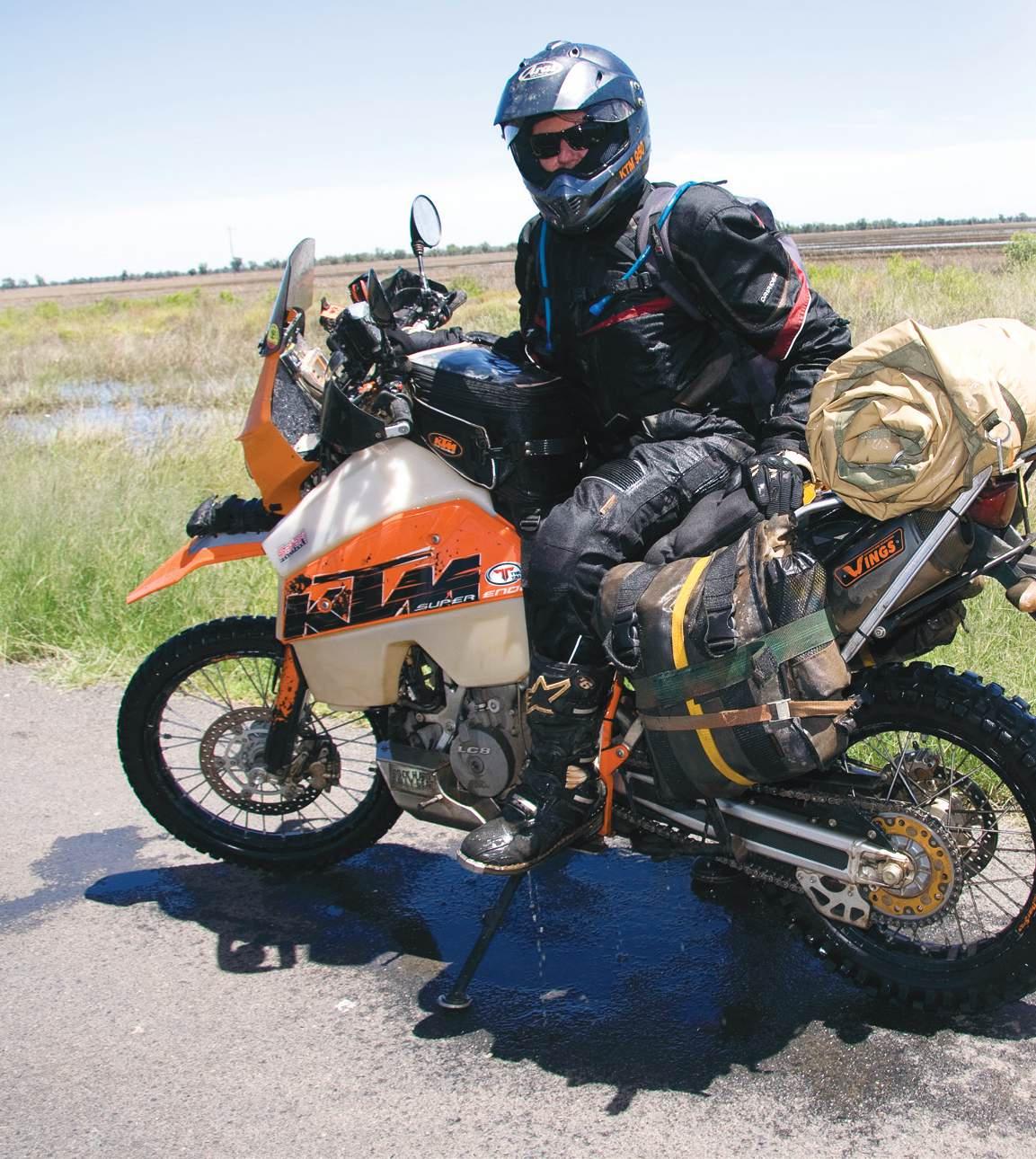
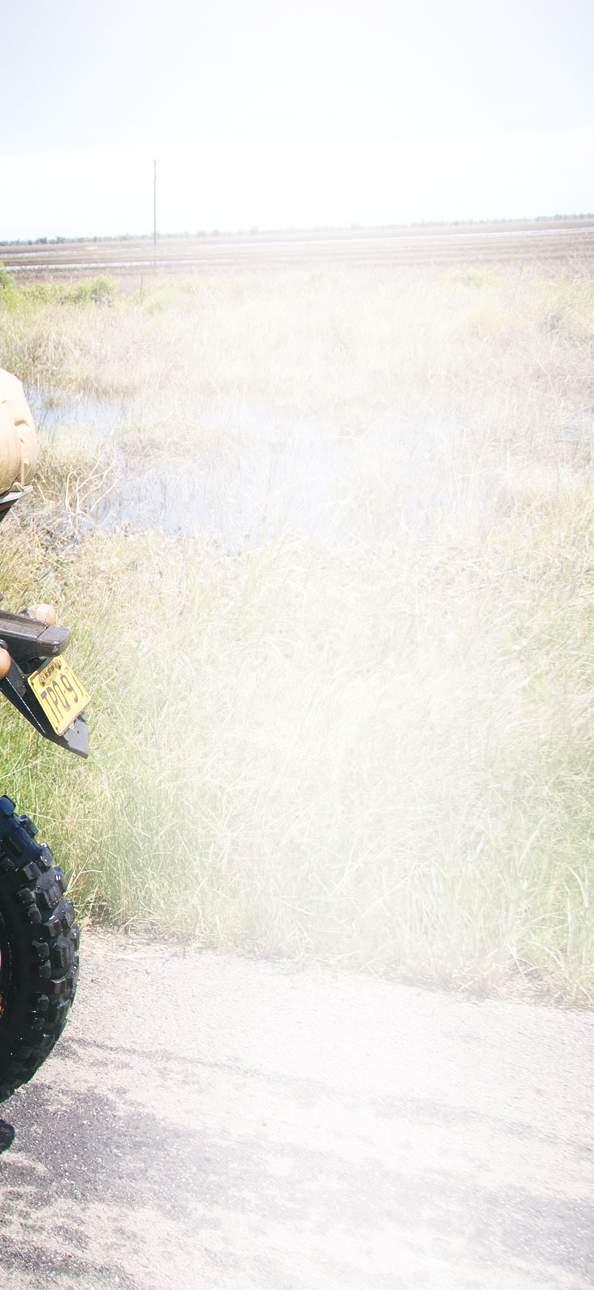
Adventure riding is taking man and machine deeper and deeper into the Australian wilderness. As we get further afield we generally get further from assistance, creating a need for us to carry more and more gear with us. It’s great to be prepared, but all that extra gear means a lot of extra weight on the bike. How you arrange that weight can be extremely critical to bike performance.
Even weight distribution is the key to getting the best from your bike.
When the manufacturer produces a motorcycle it’s done with the intention of having an even weight bias between the front and the rear of the machine. The centre of gravity is also very important. We can easily upset the balance when we load our bikes up by positioning our load poorly.
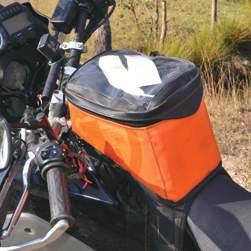
Our bikes are subject to several forces that generate varying reactions within them. Acceleration, braking, cornering and steering all serve to upset the attitude of the motorcycle and take away from its stability. These need to be controlled to minimise their unwanted influences.
Acceleration and braking will make the bike pitch fore and aft (diving under brakes and squatting under acceleration).
As we lean the bike in a corner we experience the ‘roll’ effect as the bike is tipped left or right. Steering will bring about a displacement of the wheels away from the centre line of the vehicle known as a ‘yaw’ effect.
So essentially our bike rotates around three separate axes: pitch, roll and yaw.
The axes are easy to imagine if you think of a spear pushed through the motorcycle in three different points.
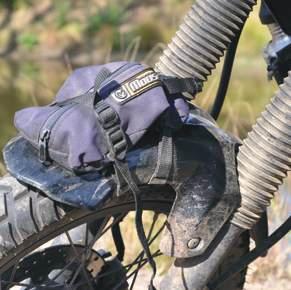
The pitch axis would see the spear pushed through the side of the bike somewhere around the airbox region.
The roll axis would see the spear pushed through the motorcycle u
Left: Fender bags don’t provide massive amounts of storage, but they do provide a valuable medium for forward weight placement. Make sure you don’t leave loose straps hanging down to tangle in the spokes.


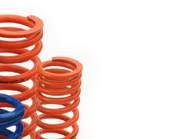
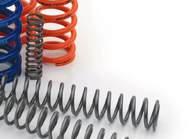

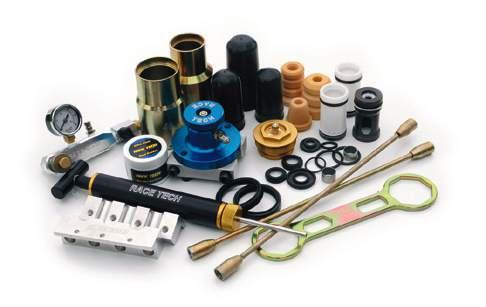

from front to rear, roughly level with the cylinder head.
The yaw axis would see the spear pushed vertically down through the bike just in front of the footpegs.
In an ideal situation these points would all intersect creating a single point that would be our “mass centre” of the bike. This would create the most balanced motorcycle possible, providing maximum potential for the best possible handling.
Unfortunately we don’t live in an ideal world and sometimes have to put up with “good enough”.
But knowing this we can imagine how an imbalanced load will effect the handling of the bike.
v Weight too far back will result in understeer and excessive squatting under acceleration (by far the most common scenario due to the ease of storage by means of racks or strapping load to the rear of seat)
v Weight too far forward will result in oversteer and excessive diving under brakes (typical with oversized tanks with no other gear on the bike)
v Weight too high will see the bike drop into corners too aggressively and be difficult on corner exit (as with heavy tank bags)
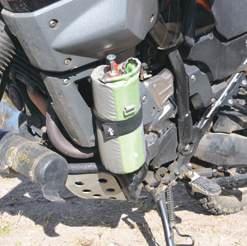
v Weight too low will make the bike hard to turn, but see the bike exit corners easily (as with additional fuel cells or saddlebags/panniers).
Obviously the further the weight gets away from the mass centre, the more influence it will have in upsetting the stability of the bike, while weight placed at the mass centre will have very little effect.
Naturally we can’t place weight in the mass centre. It’s generally where the rider will spend most of his or her time, so we seek alternatives.
Knowing this we can now start to see that weight needs to be countered with other weight to maintain control and stability. A larger tank can be countered easily with saddlebags

or panniers. Gear placed on the rear seat or racks can be countered with gear mounted down near the front of the motor.
This is a great spot for small heavy (durable) items such as tools, tent pegs etc. Front fender bags don’t provide massive amounts of storage but they do provide a valuable medium for forward weight placement. Tank bags should be considered a must in my opinion. Naturally all this weight can be placed on the bike as carefully as we like and it will still have an effect on the bike’s handling. As we load the bike the weight will naturally compress the springs in our suspension, lowering the centre of gravity. This can be helpful in cars but not so in motorcycles. It will make them harder to manoeuvre. Not only that, it will also reduce our ground clearance, severely limiting our off-road options.
The trick here is to account for the weight you will be carrying and upgrade the suspension springs to
Main: There’s a tendency to overload the back of the bike.
Left: Heavy items like tools are best placed as close to the bike’s centre of gravity as practicable.
suit. Companies such as RaceTech or Eibach produce a range of springs to suit most popular off-road bikes and their load-carrying requirements.
Consider the total combined weight of bike, rider and equipment and consult with your local suspension supplier as to the appropriate springs for your needs. This will allow you to maintain original ride height and geometry specs, providing the best handling outcome.
Most shock absorbers or forks will have adjustable damping to allow you to control the movement of the suspension. This will need to be slowed down when the bike is loaded compared to its unloaded state. If your bike doesn’t have external adjusters you can still influence the suspension movement with internal changes such as oil weight or system modifications... once again, consult your local suspension tuner.



When I was about six or seven I could only dream of having my own bike and I jumped at the chance to ride the odd mini bike. Unfortunately I had to knock back a couple of short rides on “proper bikes” because I didn’t really know how to use the clutch. It killed me each time!
A few years later I had the chance to ride a little rental bike and figured it out…or so I thought.
True, the clutch is pretty handy for starting, stopping and changing gears up and down, but with an off-road bike, proper clutch and throttle use can give the rider incredible control whether it’s slow riding through technical terrain, getting up steep and/or loose and/ or slippery hills, lofting the front wheel over logs, other obstacles, ruts, mudholes and many other situations that off-road riders face.
Basics
“If you stall, you fall” is a common saying, and on big four-stroke
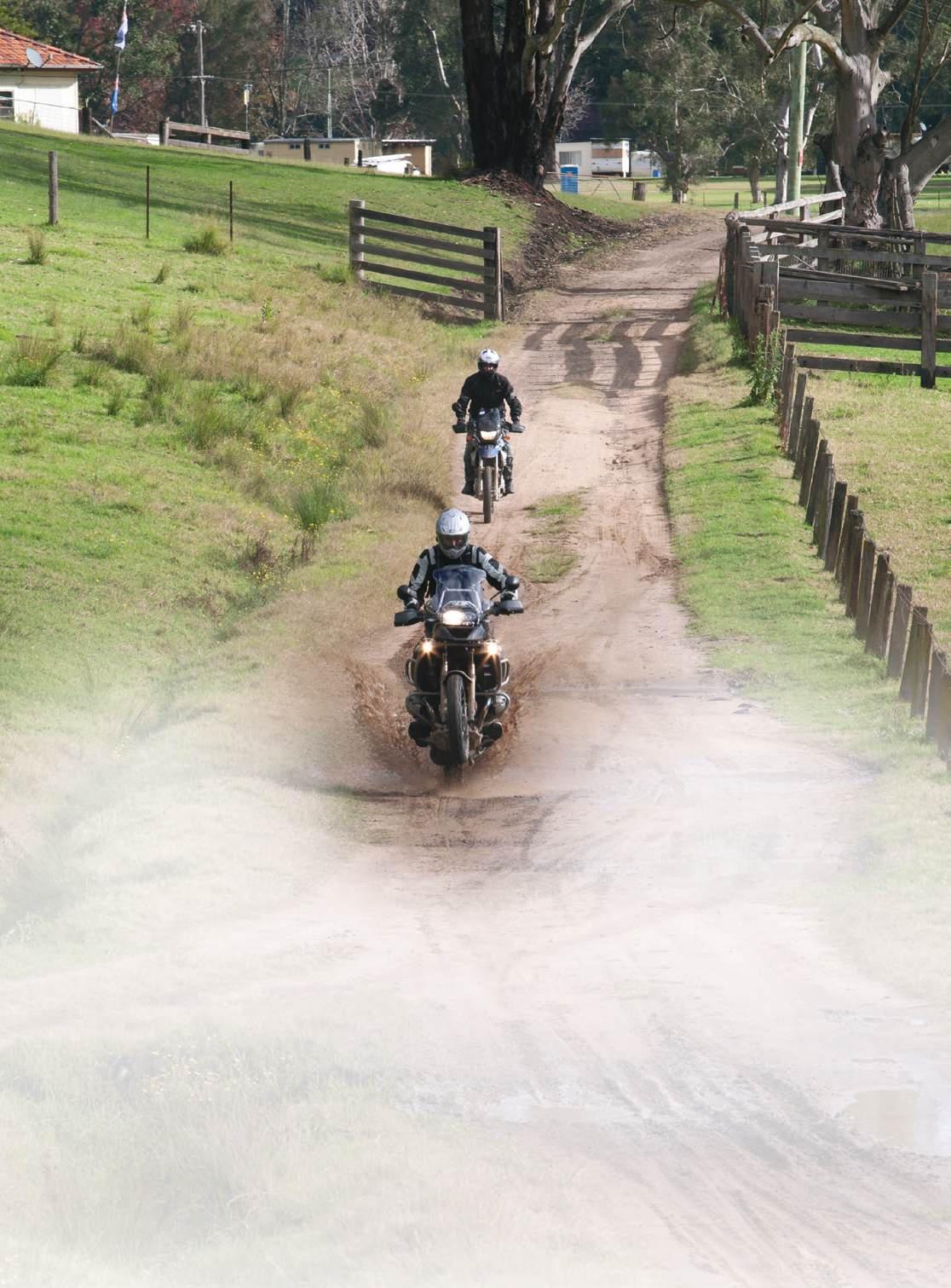
adventure bikes it tends to be pretty accurate. As an instructor for around 15 years, it never ceases to amaze me how in a single day you can give a rider with 10, 15 or over 20 years riding experience a totally new level of confidence and control just by helping him understand the benefits of optimum clutch and throttle use.
How many positions does your clutch have? Two: in and out?
No, but if you answered “infinite” you were spot on.
Just think of a hill start when you were learning to ride or drive. There are times when a slightly slipped clutch gives you a much better result than with it either fully in or fully out. Even if it’s avoiding a stall or a bunny hop, it’s a help.
If you watch advanced off-road riders you’ll notice that most will have one or two fingers over the clutch lever at all times. If you have all four fingers wrapped around the ’bar it means you don’t have easy access to the clutch, and if you use all four fingers on the clutch lever, you only have your thumb holding you on the ’bar. Either way, this is seriously limiting in many ways, and especially when terrain gets techo.
Using one or two fingers over your clutch lever (and equally so on the front brake) means you have instant access to provide a precise use of the control to get the ideal result.
All bikes have different power characteristics, and all motors can stall, so you really need to understand the “sweet spot” of your bike, and also the “unhappy sound” of the engine – the one it makes just before it stalls and you slam to the ground.
The sweet spot is usually just above idle, so it’s very close to the unhappy spot, which risks a stall.
That’s why it can be a bit tricky. Something I should mention now is, if you use the clutch properly (slip the clutch), you will not damage or wear the clutch. This is something many riders do get stressed about when the topic of clutch slipping comes up.
The key thing to understand here is: v Low revs and high slip = no stress to the clutch v High revs and high slip = potential wear and damage to the clutch
Make sure your clutch and throttle is adjusted properly. Cable clutches need about 20mm free play at the end of the lever, or one millimetre to two millimetres where the cable enters the clutch perch (hydraulic clutches are self-adjusting). An incorrectly adjusted clutch can cause all sorts of problems like constant stalling or fried clutch plates, so make sure you’re on the right track.
Look at where your controls (clutch and front brake) are positioned on the ’bars. Maybe slide the perches inwards so your two fingers are pulling on the long part of the levers. Also adjust the up and down position so you have a good feel in the standing and seated position.
A simple slow-riding exercise is the ideal way to understand the benefits of proper clutch and throttle control. Find a gentle uphill slope, and in first gear head up the slope slowly from the bottom. With two fingers on the clutch, gradually squeeze the lever to see how slow you can ride. You’ll notice that it only takes a couple of millimetres at the lever to actually add and remove drive. As you vary the drive you’ll need to adjust the throttle precisely to keep the engine in the sweet spot.
At first many riders are very grabby on all of their controls: clutch, throttle and brakes. But as most people have heard, “smooth is fast”, so the sooner you can lose the grabby and blippy habits the quicker you’ll improve and the bigger mountains you’ll conquer.
Once you have the gist of things you can challenge yourself with slow-riding circles, then riding slowly over technical terrain. As the terrain changes it becomes much trickier to maintain a nice, slow, controlled pace, but stick with it because the clutch and throttle
feel that you develop is pure gold when you’re out riding in real life adventure situations. As your confidence grows, keep upping the ante. Look for slopes and zig and zag across the slope, make up an obstacle course. Keep challenging yourself. Just remember, slow riding requires good balance, so don’t fix your vision down at your front wheel. Just like gymnasts or other athletes, look ahead and look at the horizon so you have the best chance to maintain balance and control. Don’t overdo it, between five and 10 minutes at a time is fine. Too long and you might overheat the engine or cramp your fingers.
If you haven’t watched high-level trials, either live or on Youtube, you need to check it out.
Trials riding is the ultimate when it comes to all of the key basics to control a bike: clutch, throttle, body position and so forth. When you see a trials bike launch into the air and up a rock ledge, the clutch and throttle are a huge part of making it happen. And when you watch Funniest Home Videos, the guys and gals flipping their bikes, you can see what poor control use can do.
In high-speed braking and performance braking, you can use your clutch and throttle to optimise the bike’s stability while decelerating. When you hear riders blip the throttle as they go down the gears it means the bike’s engine brake provides the smoothest deceleration and limits the rear-wheel chirps, or compression lockups. Take it to another level and watch a rider “back it in” like supermoto, or a 1200GS drifting into a corner. For some people, whether it’s watching or riding, this can be the ultimate. Using the clutch in this instance, to help to control the amount of engine braking, can really assist in making this process as smooth as possible. But don’t get carried away, make sure you have the basics sorted before you go backing your adventure bike into a hairpin at 80kph. It can get ugly.
Everyone knows that chicks dig wheelies (…don’t they? Don’t spoil my illusion...). Using the clutch with the throttle to raise the front wheel over a log or a rut can u

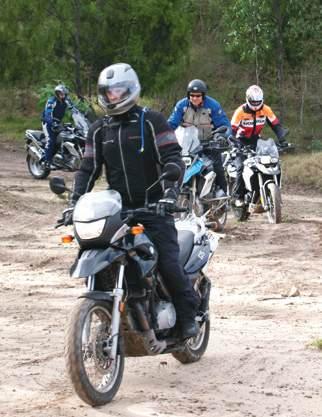
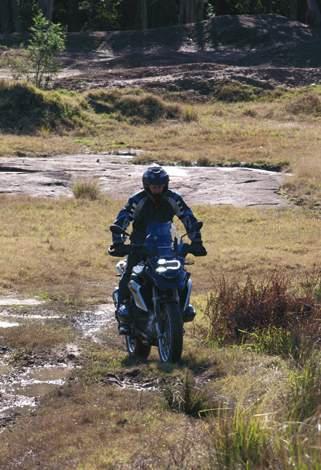
really make life a lot easier and give a rider many more options. You don’t even always need to get the wheel off the ground, but unweighting the suspension on many bikes will be perfect for rolling over smaller obstacles safely. This is another area where you want to make sure you don’t overstep the mark. Get a feel for the basics. Introduce some “clutch pops” with low torquey rpm and controlled throttle, try to pop the front wheel 100mm off the ground over a stick or a tuft of grass. Keep practising and always remember to leave your fingers over the clutch so that if you get thrown back and keep winding on unwanted throttle, a simple squeeze of the clutch will take drive away and avoid a potentially ugly loop out.
Sand
Okay, deep sand isn’t everyone’s cup of tea, but in this fine land you find it and it’s nice to be able to cope with it.
I laugh when I hear people say,
“In sand, you just hold it flat out,” with a big twist of air throttle as they say it. The truth is, you do generally need more throttle than when riding on hardpacked surfaces as the sand creates drag and your back wheel needs to spin to create drive. But how much throttle you need depends on many factors, like bike capacity, horsepower, depth and condition of sand and other things. There’s a fair bit of technique involved, but you want to only use as much power as required, and sometimes that isn’t a lot. The tricky part is, sometimes you’re cruising along nicely, say in third gear, when the track changes direction or the surface changes. You feel the front wheel dig in a bit. You only have a split second to increase drive and lighten the front wheel. Throttle can help, but depending on what gear you’re in, you may want to downshift, but that may take too long and the front may get really crossed up. You can use the clutch and throttle to create extra drive instantly, without the engine bogging down.
Custom made sheds at “kit” prices-delivered Australia wide. We supply all plans and specifications for council approval

Today, you can see 100’s of the same model of bike but they will all be optioned and set-up differently to suit the owners individual style and preferences, the final design of your shed is no different.


We do not have any “standard” designed sheds, every shed can and is ordered individually to your design. Door and window locations and opening sizes can be tailored to suit your specific needs.

Things to remember:
v Smooth and progressive on the throttle and clutch. Lose the grabby clutch and blippy throttle syndrome.
v Two fingers over your clutch and front-brake levers all/most of the time. Be careful not to constantly drag the clutch and brake. You don’t want to squeeze the levers unintentionally.
v Get a feel for your engine’s sweet spot, where it provides great torque and traction.
v Over revving will reduce smoothness and traction.
v Avoid stalling. Understand your bike’s unhappy sound. Learn how to stay just a few revs above.
v Challenge yourself with skills training. Make sure you increase the difficulty gradually.
If you don’t already use the clutch in this way, you’re missing out, or maybe just doing it harder than you need to. Good clutch skills literally open doors to the type of terrain that you can handle comfortably. Happy Trails.

Designed to lock your helmet to your bike. Simply set your own 4 digit code, open the lock, slip the carabiner through your helmet’s D-shackle, attach it to your bike and lock it!
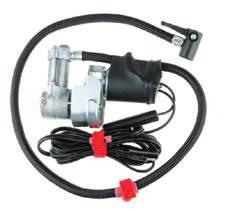

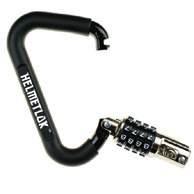
Ultra-compact, weighing in at only 570g, the MotoPressor™ can be used to inflate tyres, top off air shocks, air forks, inflate airbeds or anything else, anywhere, anytime, over and over again.
A puncture repair system for tubeless tyres. Simply remove the object that’s punctured your tyre, insert a plug into the puncture hole and pull the tool out of the tyre. Job’s done!
To order these and other products visit www.rockycreekdesigns.com.au

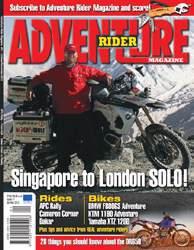
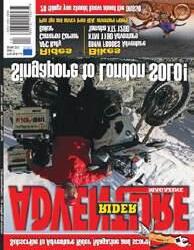

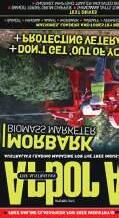
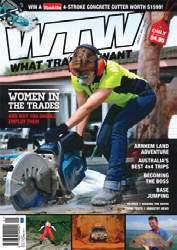
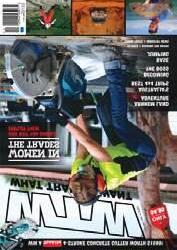

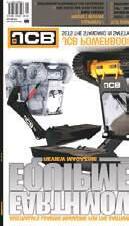
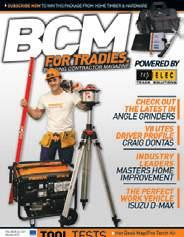


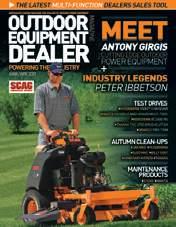



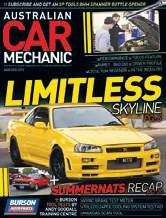

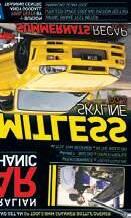
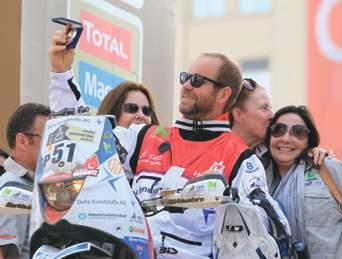
At 46, Simon Pavey has a worldwide reputation as both a rider and instructor. He’s also a nice bloke with a glowing passion for riding and a ready chuckle. With his tenth Dakar on the horizon, the cheerful, likable Australian, based in Wales, was happy to share some of his considerable experience with AdvRider Mag readers.
Adv: We’ve all seen Ewan and Charley and Race To Dakar. For a lot of our readers, that will be what brought you to their attention. Do you have some star power now? Are you treated as a celebrity when you travel because of appearing in those shows?
SP: If only (laughing)!
No, tragically, not.
It’s definitely helped me with everything and raised my profile. I think it’s raised the profile of the whole motorcycle industry, especially here in the UK, Australia and Canada.
I’ve definitely seen it a little bit. I did an overland adventure rally in Canada just before I came out to Australia in August, and I kind of went there as the ‘personality’. I was pleasantly surprised. People definitely know about adventure riding now, and they do love it. It’s really nice when people tell me they’ve been inspired to get out there and do something in life, whether it’s around bikes or whatever, because they’ve seen those TV shows.
That’s the whole reason I started the off-road school back in 2000. My passion’s obviously always been bikes, especially
off-road, but I love being able to get new people into our sport and get people interested in doing things. I’ve been lucky to be part of that whole ride. Adv: Give us a brief history. You rode a lot of rallies on XRs in the 1980s?
SP: I started out when I was in high school. A mate had a little minibike-thing with a lawnmower engine in it. I had a go on it and I was hooked on motorcycle riding straight away.
I messed around out in Kurnell, NSW, for a few years, and then joined a minibike club. After that came some club racing and a bit of motocross when I was 16. I always wanted to do enduros, mainly because of Geoff Eldridge and Australasian Dirt Bike magazine. At the time it was the only magazine we Australians had, and he was writing about all these multi-day enduro rides. That was a big thing for me. I just wanted to ride for a long, long time, and that’s what excited me about enduros back in those days. The whole thing was an epic every weekend. You had to drive to somewhere else in Australia and then do an event that went somewhere…
the whole thing was a big adventure. That led on to rallies for me. Over time enduros have become more mutlilap rides, halfway back to motocross.
I still love that kind of racing, but when I did my first rally, again following Eldridge, it was in New Caledonia in 1988. I’d done Finke and the Weipa Croc Run and then he said there was a rally in New Caledonia. I was a kid and it was like, “What! Overseas? Wow!” It was a massive thing to get on a plane and go race in such an exotic place.

It was a five-day event and I had the roadbook on the handlebars and a bit bigger fuel tank, and it was all around the island of New Caledonia. That was what made me start looking at rallies. I’m obviously lucky I’ve become a reasonably competent rider, but I’ve never made it to that next
Simon Pavey. International motorcycling instructor, nine-times Dakar finisher and coach to Ewan and Charley. A laugh, chuckle or smile is never very far away with the easy-going Australian.
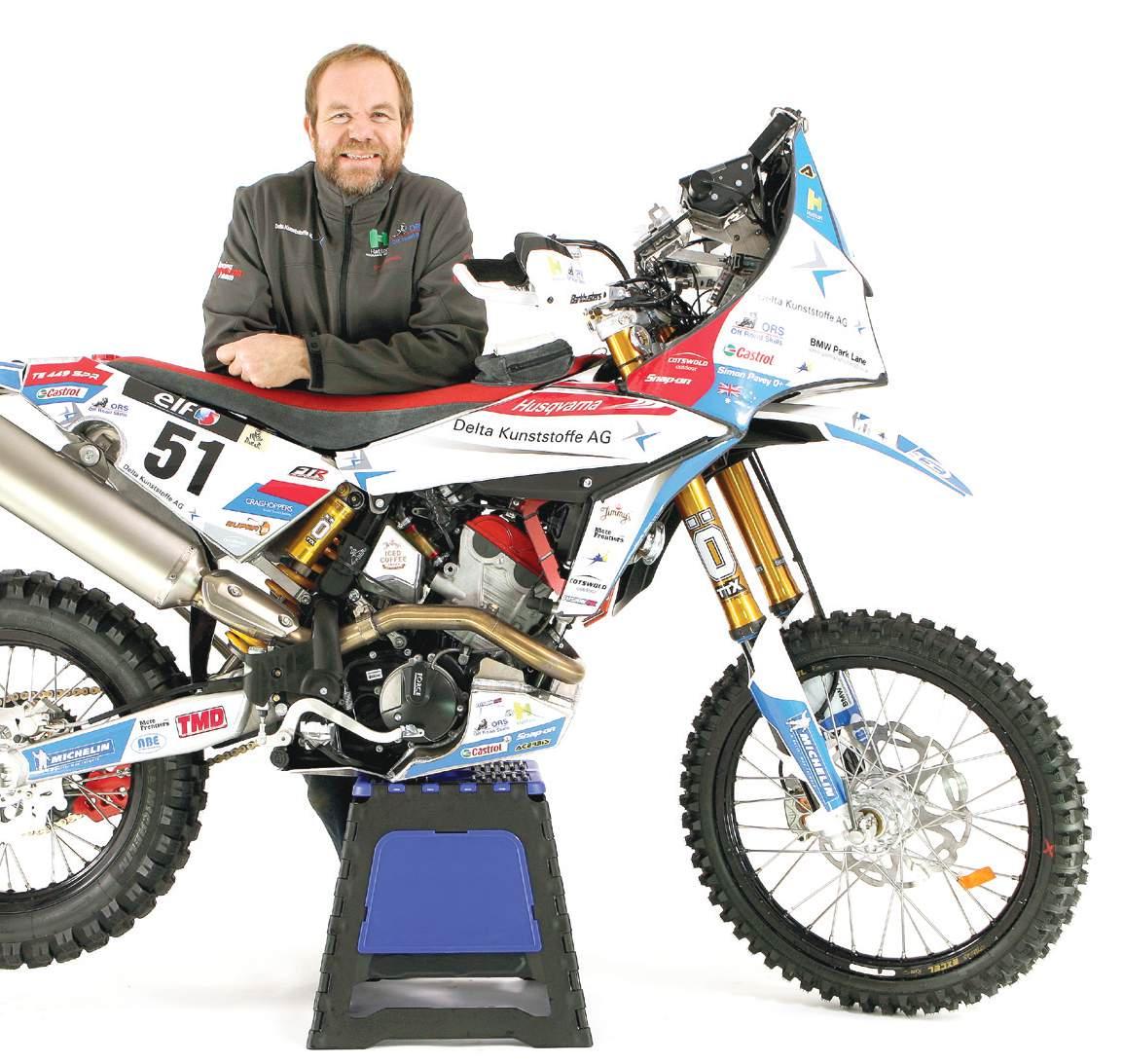
level with the Cyril Despres and the Marc Comas. I did get myself into a position where I did that first Dakar in 1998, and now it’s nine Dakars later.
Adv: Finishing a Dakar must feel special.
SP: Sometimes the beautiful thing about Dakar is the amazing adventures that follow on from it. Because of going to Dakar I did the Trans-oriental Rally, which was St Petersburgh in Russia to Beijing, China. It was an amazing event and the most incredible thing I’ve ever done.
The organisation of Dakar is really slick now. You always know where the fuel’s going to be and where you’re going to eat and where the water is and everything else. It’s still a big adventure of course, but the Transoriental is new, and when we got to St Petersburgh the organisers didn’t know what was going on. We had to work everything out for ourselves. A couple of times we got to where the bivouac was supposed to be and it wasn’t even there. One day in particular we’d already ridden 1000km and we arrived to find no bivouac.
We had to find food, fuel and water, and the nearest town was 100km in another direction. We had to go another 200km that day to get what we needed to go racing again the next day.
I still love all that. Whether it’s going to do a local event down the road here, or crossing a continent.
Adv: Your ‘day job’ is to run offroad schools, right? Last time we spoke you were racing BMWs and instructing for BMW. Lately we’ve seen you on a Husqvarna. Is that because of the relationship between
BMW and Husqvarna?
SP: It made it easy to go down that route, I suppose.
We started the school in 2000 with BMW and we’re still with BMW to this day. It’s a fantastic company to be involved with, especially because of the way the adventure market’s grown. At the moment I believe BMW still has the best product in that world. It’s all getting a bit more interesting and
because maybe they’ve heard that doing a bit of off-roading will help their road riding. But after two days here they get a bit more of a taste for offroad, and they suddenly think, “Ooo… actually it’s not just a gravel road. That track over there, or up over that grassy mountain. That looks pretty cool as well, and I can go there now.”
They’ve got this new skill set and it’s not as scary or as difficult as they thought.
We had our normal GS fleet for our adventure-bike schools, but we also had a program with enduro bikes that we just called Level Enduros, and we used Husqvarnas for that.
Sometimes you can learn stuff on a small bike that’s hard to learn on a big bike, but once you’ve learned it you can put it back into your big-bike riding. It’s scary to try and do a spinturn on a 250kg bike, but once you know the feeling on a smaller bike it’s not so difficult. It does help your big-bike riding, for sure.
Adv: What about the future? Are there more Dakars to come? Is the BMWHusqvarna breakup going to change things?
Adv: When are you coming back to Australia?
SP: I think it worked really well between us and Compass Expeditions. They’ve got a good set-up there. We’ve just got to work out the when and where, but we’ll definitely do something together again in 2014.
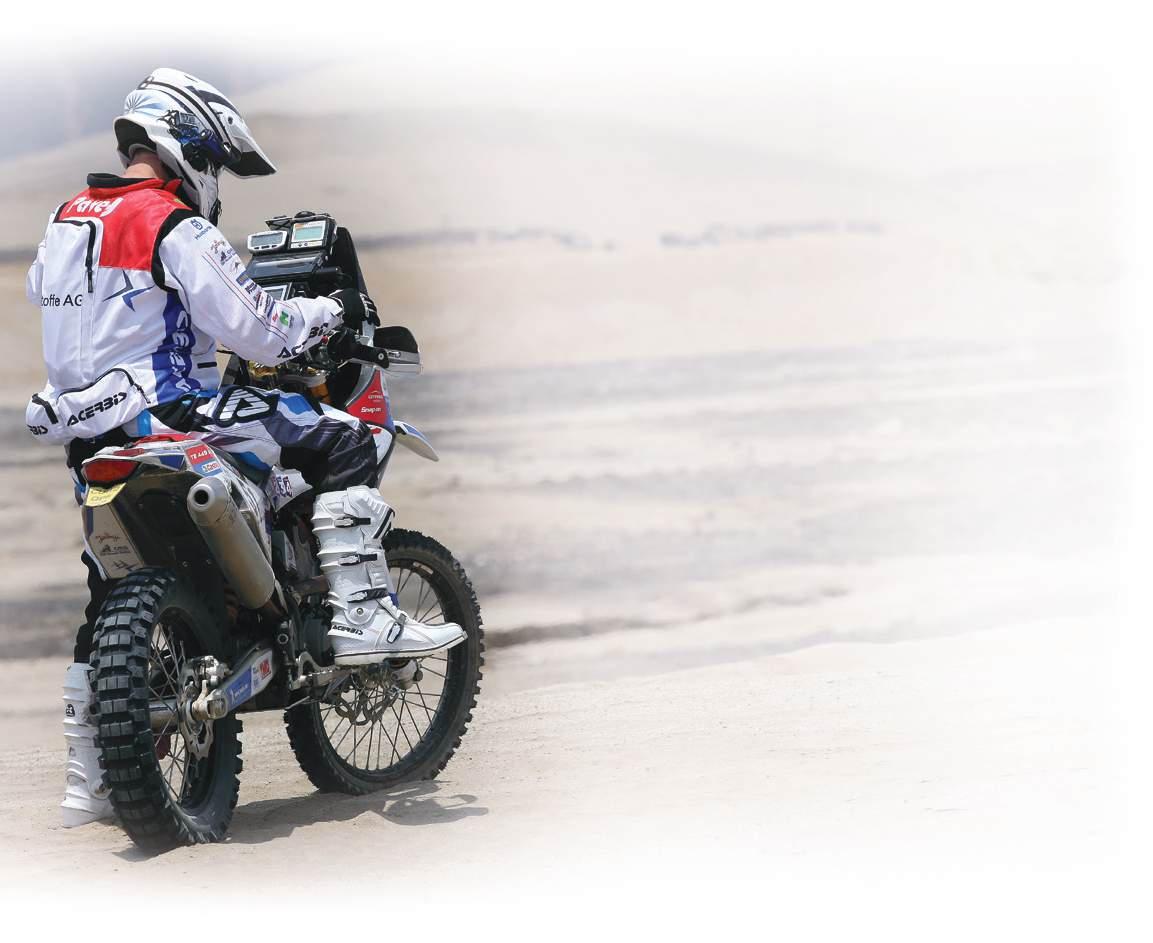
competitive now, for sure, but BMW is still in front, I think.
It was a great thing for us when BMW decided to go into the dirt-bike market in 2008 and came out with the G450. That was pretty exciting. Customers come to the off-road school
SP: It was a really strange situation when BMW owned Husqvarna. Husky was run reasonably independently. We had to go to Husqvarna separately and negotiate a contract for both the school and racing. We did a deal with Husqvarna to go to Dakar. It was effectively a twoyear deal, so we theoretically have one more year to run. It’s the same with the contract for the offroad school. But now BMW has sold Husqvarna and things have changed quite dramatically.
I hope we’ll still work with the brand. Husqvarna’s got such a history, and they were so happy with us after Dakar. It was unreal. Then a week later they said, “Well, even though we’re happy, we’re all out of a job. You’re on your own.”
Compass has bikes, so we had a beautiful mixture of people who came on their own bikes and those on Compass bikes.
I think the basic concept of running an off-road school, and then a trip around some great parts of Australia with some off-road built into the trip, was a formula that was really good fun for everyone. We had brilliant feedback from the customers and we loved it as well. That’s important.
Adv: How did it come about that you ended up settling in Wales?
SP: Everyone always asks me that! It’s simple, really. We very quickly forget, because of modern comms and inexpensive air travel and all that, how cheap and easy it is to find out about, and travel, the world these days.
In the 1980s I was excited about riding the different events and iconic races I’d heard about. In Australia at that time there was very little international information available. We didn’t have the Internet or anything like that. You maybe knew someone or had spoken to someone who’d been to Europe once before. Like a lot of young Aussies did, and still do, I had to decide whether to pursue a career riding in either America or Europe. If you wanted to see the world as a rider, you pretty much had to base yourself in one or the other.
I did a short stint racing in Japan in 1989. After that I wanted to do some events in Europe and see what it was all about. My wife and I came to England because we knew another Aussie enduro rider who was living in London, so it was an easy landing point.
I did the Six Days and did the Atlas Rally in Morocco and my first Dakar, and then we had the idea for the offroad school. We looked at probably six different venues all around the UK before we stumbled across this place here in Wales. If you took a blank
sheet of paper and drew an ideal training venue, it would look like this place. It’s over 1600 hectares and has everything we need and every degree of difficulty. We’ve got 80km of big, wide dirt roads within the property, and every other little piece of it is as hard or as easy as you want to make it. It’s also a really beautiful part of the world, there’s no question about it, and we’ve got fantastic motorcycling, on-road and off-road, right on our doorstep.
This year I was in South America in January for Dakar, and then in February I was in Morocco working for BMW. That kind of thing is just easy to do from here.
There’s definitely bits of Australia I miss, but I also recognise it’s a little bit harder to do what I like doing if I’m living back there.
Adv: After all your experience and all the great things you’ve done, tell us something we can take with us as good advice. Give us some words of wisdom from Simon Pavey.
SP: (Laughing hard). Words of wisdom? You said one right at the



start: don’t go into the motorcycle industry thinking it’s going to get you to ride more!
I think the biggest thing is to follow your dream.
I know it’s a clichéd thing, but be passionate. Follow your dream and believe.





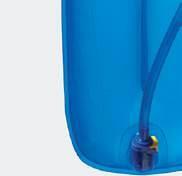

Look how clean he is!




























Sometimes it takes years. What I’ve done might sound simple, but it took me 20 years of always thinking about Dakar to get to the start line. That was 15 years ago, and I haven’t stopped dreaming. You’ve gotta believe in your dreams and chase them down.























APC Rally owner and organiser John Hudson knows a thing or two about how an adventure bike should work. Not only does he organise Australia’s premier adventure event, but he’s completed a few Australian Safaris. So when Homer wants to offer a few tips, we’re keen to listen. This issue he shares a few thoughts on basic setting up for adventure riding.
The friendly atmosphere of adventure riding is a huge, positive attraction to our sport.
A lot of trailriding groups are welcoming and happy, but with adventure riding, friendly and happy is only a starting point. When things get challenging, the strength of team feeling within a group is vital. Without it, someone’s possibly going to be left behind, injured, lost, or in any one of a dozen nasty situations.
Here’s a few things to think about that might help you become high on everyone’s list of invited riders.
It’s always great for a group of riders who are about the same speed, on the same type of bike and who like the same type of terrain. People will probably gravitate to that kind of group with their regular riding, but for adventure riding, the unknown is a big plus, and that can go for

riding partners as much as terrain. I see it a lot at the APC Rallies. We recommend individual riders form at least a partnership with one other rider, and that they stick together.
A group is better. Naturally, we’re thinking about safety. If a rider has a problem – not necessarily an injury or something cataclysmic – he has at least one other person to head to the next town and pick up spares, notify someone, or even just share knowledge to deal with the situation.
That’s straightforward enough. The thing is, a lot of these groups and partnerships are formed either at the start line or in a country pub at night during the Rally. So effectively, a whole batch of strangers are thrown together, and they have to get along.
Now here’s the thing.
Under those conditions there are going to be a lot of
theoretically incompatible riders sharing the ride of a lifetime, and that could be a recipe for some unhappy individuals. It doesn’t work out that way, though.
For starters, there’s a common bond among the riders. They all obviously love the same kind of riding (they’ve entered the same event), so there’s some shared ground straight away. They’re all trying to achieve the same thing using roughly the same resources and therefore facing the same challenges, and that gets them off to a good start.
Where things can get a little wobbly is if one rider is uncompromising or unwilling to adapt to circumstances surrounding his mates.
For instance, if there’s one rider in a group who’s constantly the slowest. He’s the one guy everyone always has to wait for. That can be very annoying for the rest of the group. But if that one slower rider constantly does

his best to minimise that problem, he’ll be a very popular part of the team. He might make sure he’s always the first one away from a stop, or leave earlier than everyone else in the morning. That will very much reduce the time the others spend waiting for him, and the rest of the group will see that. They’ll afford that rider due respect for his efforts.
That rider is bound to have strengths in other areas, so although he’s a little slower than some in the group, he might be a gifted mechanic or a highly qualified medic who’s always the first to offer help.
Do you see what I’m getting at here? Don’t just sulk and think, “These guys are way too fast and they’re always annoyed at me.” Do your best to minimise that possible irritation, and try to make yourself a worthwhile member of the team in your area of strength. Don’t just sit back and hope it happens.
This kind of thing forges


amazingly strong bonds and often leads to lifetime friendships. And of course, it makes for happy, friendly adventure-riding groups who achieve their goals, thanks to the contributions of the team members.
That’s one of the best things about adventure riding.
As I said earlier, there’s a real ‘band of brothers’ feel about motorcyclists of all disciplines, but for adventure riders
the bond is far stronger than most. We need our riding friends so we can fully enjoy – and sometimes survive – our riding. So here’s a few tips to making yourself a valued member of any team:
v Make their problems your own – if someone’s forced to deal with something nasty, park your bike and deal with it too. Just because it’s not your bike doesn’t mean you should sit back and let the owner sort it out. Get in there and see what you can do to help. It’ll improve everyone’s level of optimism and hopefully arrive at a resolution much quicker.
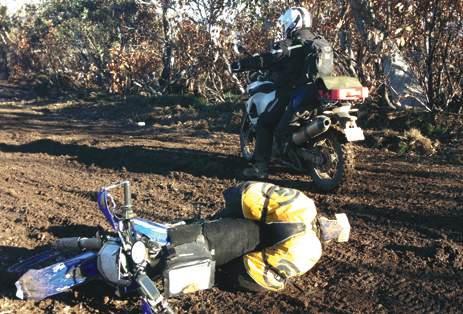
v Offer encouragement – if someone’s struggling a bit, and you can see they’re doing what they can to deal with things, let ’em know, and let them know you appreciate what they’re doing to keep the group moving.
v Share and share alike – if things are going well for you and your bike’s faultless, don’t hold back on offering spares







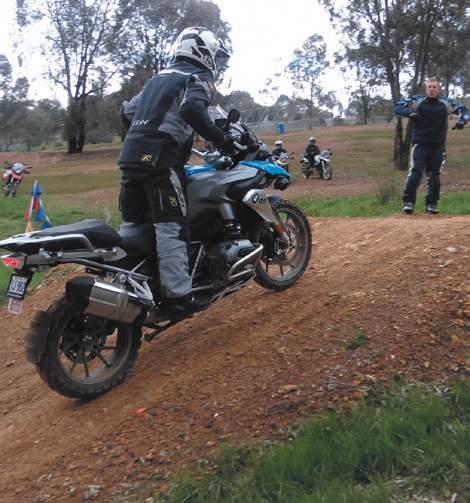




BMW’s two-day GS “Adventure bike” training courses are the ideal way to learn and develop the skills to take your GS further off the beaten track. Courses are designed for riders of all levels and our world-class instructors will take your riding to a totally new level.
Just some of the topics covered include:
- Body position
- Throttle and clutch control
- Braking
- Uphill and downhill control
- Obstacles
- Line selection
2014 courses are planned for Queensland, New South Wales, Victoria and Western Australia. Spaces are limited, so register your interest to ensure you don’t miss out. Rental bikes are available at most venues. Email offroadtraining@bmw.com.au to be advised once 2014 course details are con rmed.


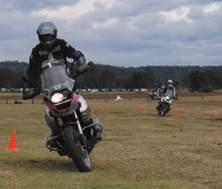

or set-up help to someone who may not be doing so well.
These might seem obvious, but if everyone in a group is offering this kind of positive outlook, imagine what a strong and unstoppable group it will be. And that’s what you should be thinking. You want to do your part in making your group or partnership a strong, happy, great group to be in. It doesn’t just happen by chance.
A never-give-up attitude will create great memories. I once had a mate barrel roll his brand-new bike at high speed in the second hour of a threeweek trip. It all looked hopeless, but we laid out a tarp and just started to put all the pieces back together as best we could, one piece at a time. Four hours later we were all riding again. At the end of that trip three bikes were written off by the insurance company but we all made it to the end.
We had some luck that day, for sure, but people who never give up always give luck the opportunity to happen.
I get to lead a lot of rides, of course, but that doesn’t mean I’m not part of the team. A lead rider should still contribute to making the group a good one for all involved. Here’s a few key points I use for keeping the group happy and saving time when I’m the one calling the shots:
v Decide on a departure time for each day before the trip starts and make it
realistic. Advise that riders really need to be at the bikes, packing gear and getting things sorted, at least 30 minutes before that.
v Fuel up at the end of each day whenever possible. Do bike checks at the fuel stops. It’s better to work on issues where compressors and clean work areas are available.
v All riders need to be advised of the minimum fuel range needed for the ride. Never turn up to a ride thinking the organiser got the distance wrong and you’ll be okay. If the organiser says 300km, you need to plan on being able to do 330km in case conditions are bad.
v Everyone should always fill up together. It doesn’t matter how much fuel you use or how much you reckon you’ll need. Your extra fuel might be needed by another rider. With fuel it’s
better to look at it than for it.
v When you have a close group of mates a kitty for the fuel and food can save a heap of time on a trip. Whoever is the sweep gets $100 from each rider at the start of the day, then the sweep pays for all fuel and food from that kitty. The lead rider will often order food for everyone. That’s another big time saver. Taking turns paying the group fuel bill can often be very unfair.
v If you’re riding with a crew that has different levels of experience, sometimes a ‘sweep bag’ is a very good idea. It should contain a compressor, spare front and rear tube, jumper leads, patch kit, tow strap, first aid kit, sat phone and some tools for basic work. When the sweep duties change the bag is given to the new sweep. My worst turnaround distance to get gear back to a stricken rider was 280km. He’d used his own spare tube and had got another flat. Most experienced guys will be thinking, “I carry all that stuff anyway, so why the sweep bag?” Let’s just say not everyone carries the gear that they should.
v Start the ride with new tyres, ultraheavy-duty tubes and 24-28lbs of pressure. Your mates won’t mind changing tyres but will soon get angry if they find you’re using lightweight tubes and the one-hour stop could’ve been avoided.
v Don’t book pubs until lunchtime. That way, if you have dramas in the morning you can easily readjust your plan. A tight swag and a loose plan is the go.
See you next issue.




2 Day Urbenville NSW
1st-2nd Feb 2014 $240
4 Day Wisemans Ferry NSW
20th-23rd Feb 2014 $480
4 Day Brisbane QLD
20th-23rd March 2014 $480
14 Day APC RALLY Multiple start points all over Australia
11th-30th May 2014 $1250 (early entry) no event in 2015
6 Day Bathurst 1000 to Gold coast
12th-18th Oct 2014 $790
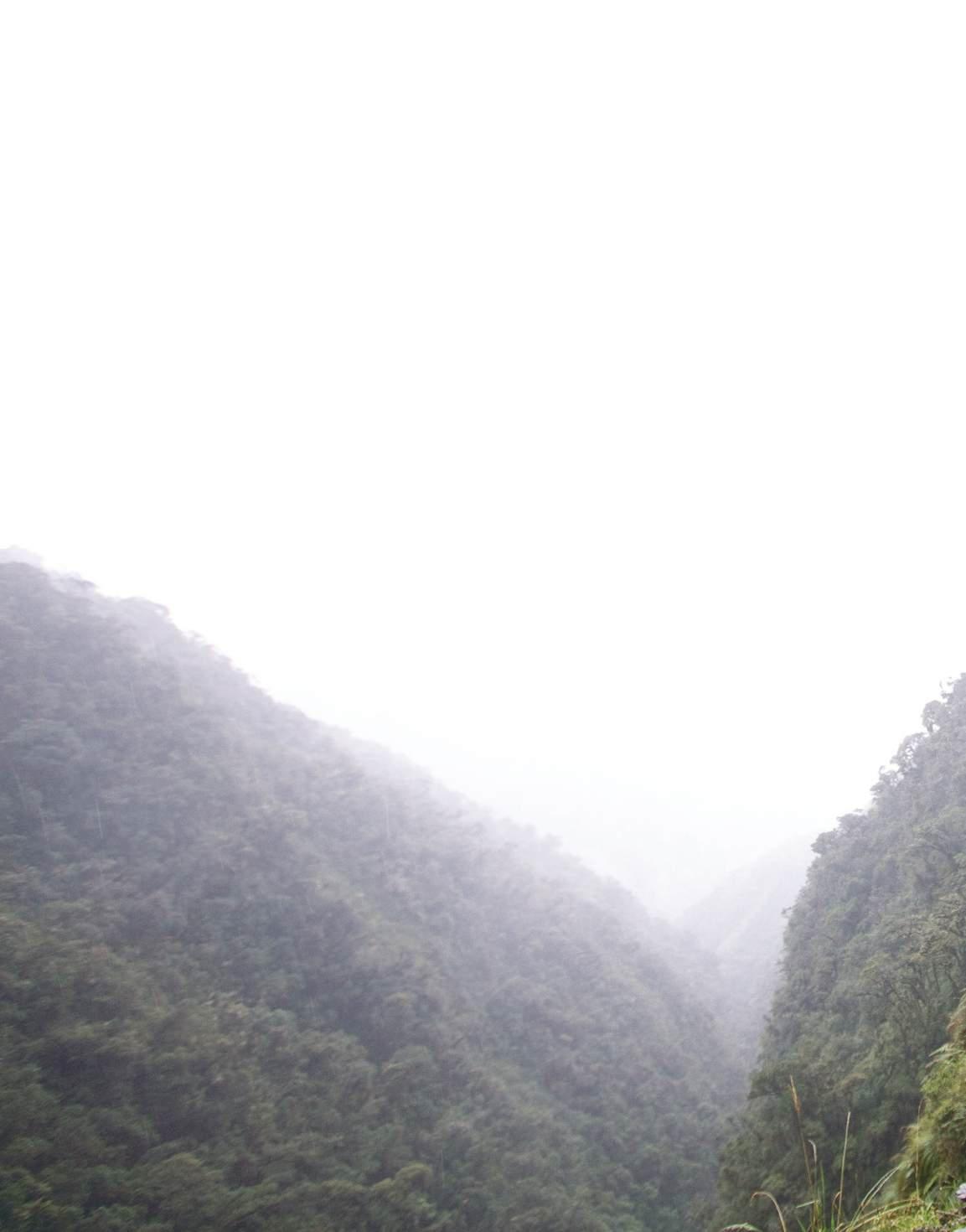
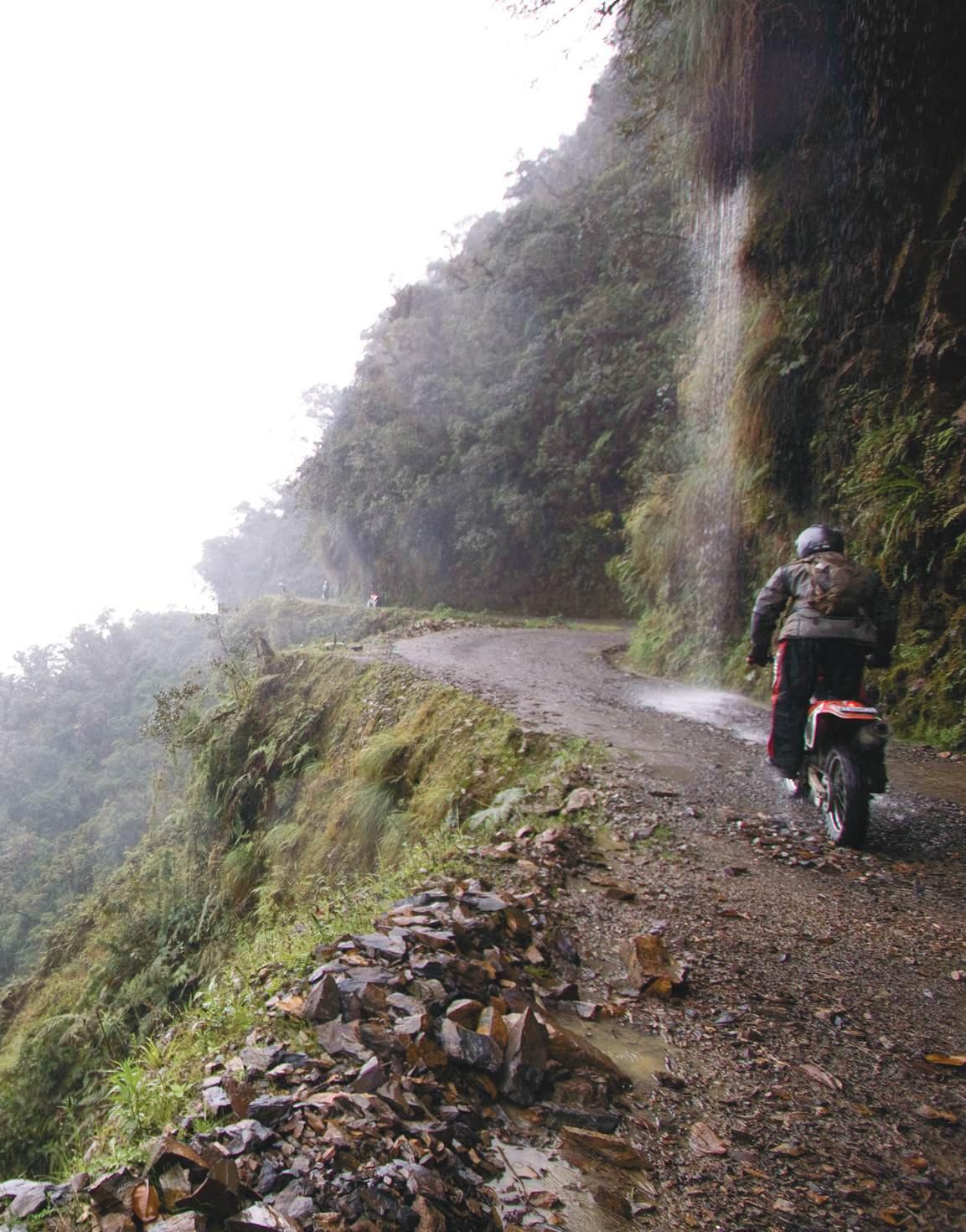
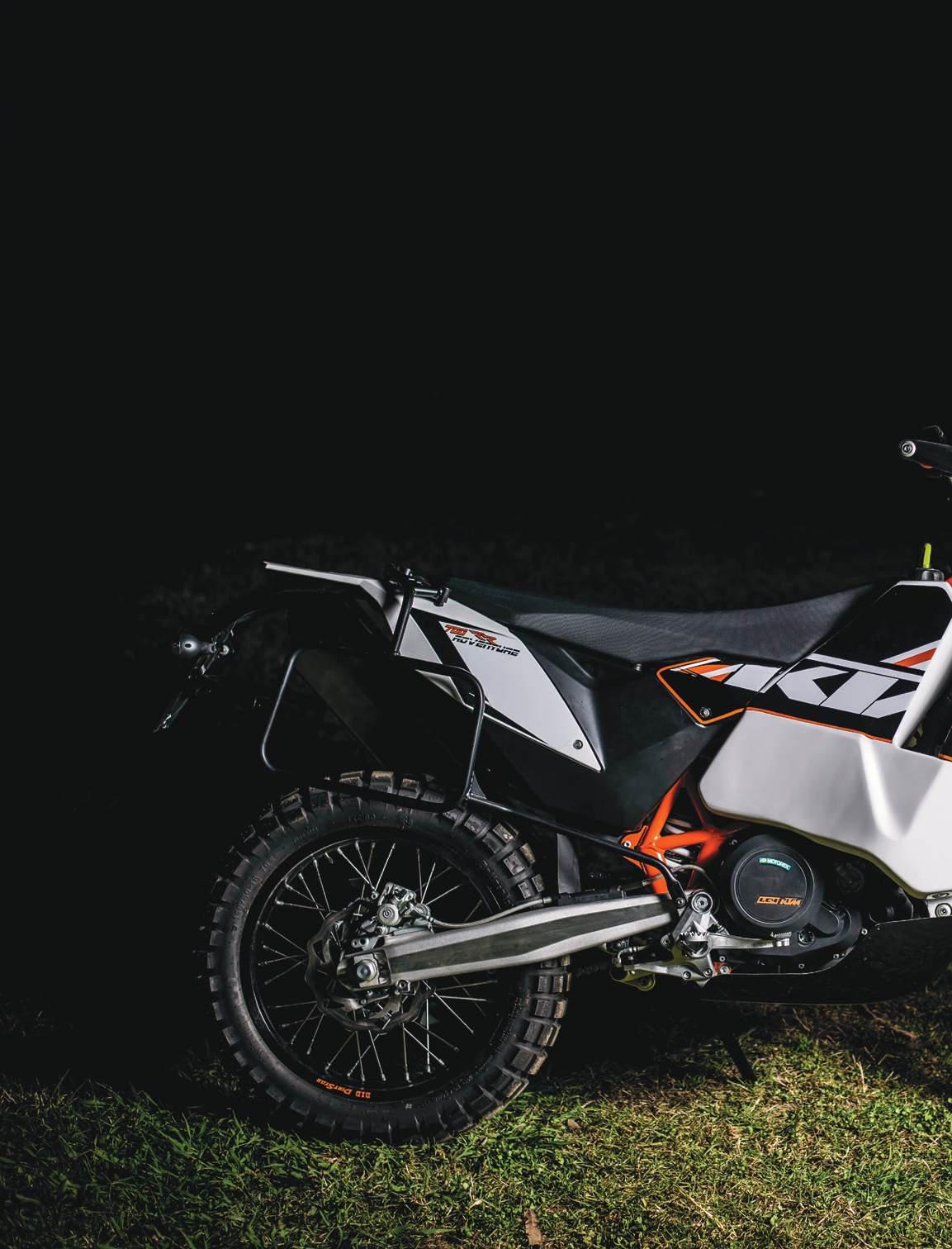
Your standard 690 could look like this.
There’s been a lot of interest in the build of a specialist, Rally Raid-styled 690 featured on the Adventure Rider Magazine website. We went to Dalby Moto’s top dog, Craig Hartley, and asked him what was going on. Here’s the story in the Ol’ Dingo’s own words…
The project probably started about five years ago when one of Dalby Moto’s customers asked Darren Wilson if he’d build a fairing, nav tower and down pipe for the customer’s 2008 KTM 690 Enduro.
A lot was learnt from that project, and combined with the ideas from the beautifully engineered masterpiece of a genuine KTM 690 Rally, the knowledge has now been put into a kit form that will give 690 owners the benefits of a bike similar to a KTM 690 Rally, but at a fraction of the cost.
Why would we build it?
Because there’s nothing available to the adventure-motorcycling world in a serious, single-cylinder bike with proven reliability, awesome handling and performance combined with 30 litres or more of fuel storage and a fairing. There’s some good rally kits on the market, but they’re still only offering around 20-litre fuel capacity. The Safari Tank for the 690 gives a total of about 26 litres, but that’s not a fully faired, rally-style kit. There’s an overabundance of
Decals will be moulded into the tank plastic so there’ll be no bubbling.
larger-capacity adventure bikes from all the brands, but many of these don’t suit the average rider who likes more serious terrain.
Another reason is that there are a whole stack of adventure riders who have no plans on giving up riding any day soon, and a lot of those blokes are over 50. All those riders are going to want lighter, single-cylinder adventure bikes so they have half a chance of handling them in difficult conditions and picking them up when the inevitable happens.
What do you get in the kit?
The kit for the 690 is being engineered so it can literally be bolted on.
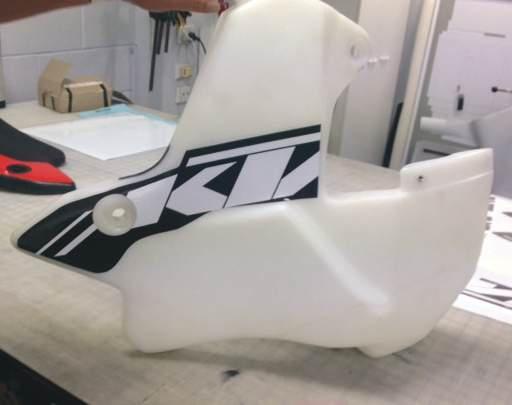
The fairing will hold a steeringhead-mounted headlight and fairing tower, rally-replica headlights that far outshine the standard headlight, rally-replica style fairing, and a carbon-fibre fairing/dashboard insert that takes the genuine speedo. This last will also be designed to accommodate an array of switches and other items an owner might like to put around the cockpit area. When the fairing is removed, the dashboard
u

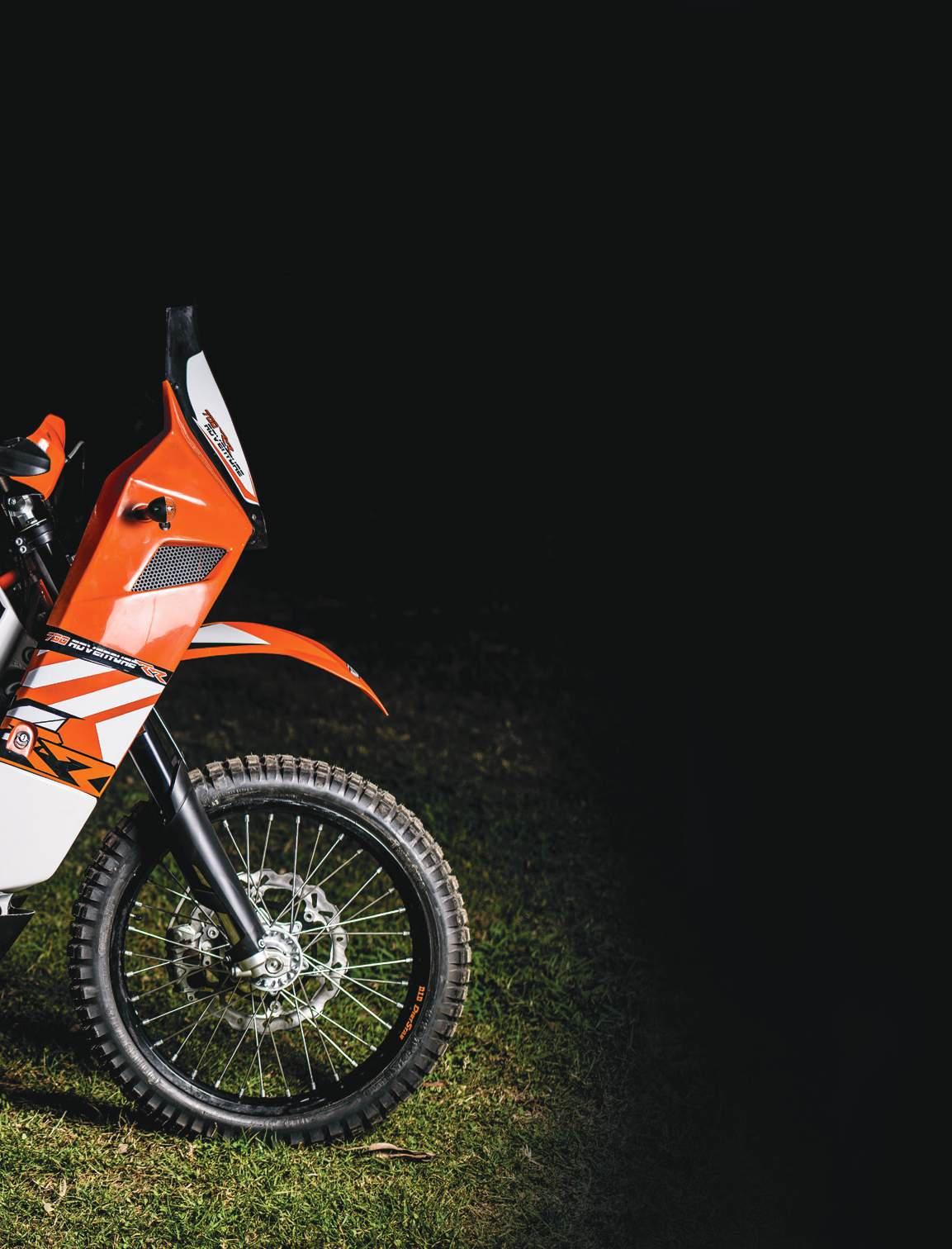
The 690 isn’t the first build of this type the team has done.

stays on the tower for easy maintenance in the area behind.
In the fuel tank department the kit will have two approximately nine-litre-perside polyethylene tanks giving an easy 30 litres plus, KTM fuel taps, all mounting brackets, genuine KTM rubbers, bolts, fuel lines and brackets as well as extension wire and plugs to power the fuel pump. For the rear tank there’ll be block-off plugs and taps so the fuel pump can be removed and relocated into the right-hand side front fuel tank. There’ll also be an extension wire and plugs to relocate the reserve fuel sensor into the front tanks, allowing roughly 50km to 70km on reserve. The rear tank gravity-feeds into the front tanks.

The kit will also include the carbon fibre/kevlar bashplate, designed from the 690 Rally. The rear mounts are taken straight off the genuine KTM bashplate and the plate simply pushes into the locating holes under the rear of the frame, while the front is held with two eight-millimetre bolts. The front bashplate mount also doubles as the lower fuel-tank mounts and holds the regulator/rectifier relocated from the righthand side of the frame.
The exhaust department has been designed to retain the original or aftermarket muffler. You receive a

Interestingly, on the genuine Rally you have to turn taps off when you’re fully fuelled as fuel drains from the front tanks and out the rear overflow. The kit is so well balanced that all three tanks can be filled and all the taps can be left on.
The graphics on the tank will be moulded into the plastic.

muffler-mount bracket and modified header downpipe that runs to the lefthand side of the bike and uses the genuine KTM mounting points on the fuel tank. Some have asked why not put the header pipe on the right-hand side, but then you wouldn’t have genuine muffler location mounts in the rear fuel tank.
How did it evolve?
I won’t go into the nitty-gritty of exactly how it’s all been done. It’d take a book
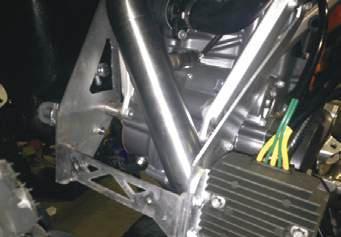
to explain it, but I can say there’s been well over 1000 hours of Darren’s time alone put into the project, and so far it’s cost over $40,000 in materials. This investment hasn’t been taken lightly, but we’re building a high-end product that we plan on distributing worldwide in 2014.
The original photos actually showed unusable fibreglass tanks built by Darren and a fibreglass fabricator that then had to be sent to Mick at Nomad Tanks for him to put his experience forward and add his comments, criticisms, improvements and changes, and all of this before the oven moulds could even be looked at. The steel, two-piece moulds to cook plastic tanks in are an engineering masterpiece that take many hundreds of hours of work to create. A similar thing has to be done to build the fairing, bashplate and dashboard insert, but not to anywhere near the same level as fuel tanks.
The end result was tested over an eight-day ride across Australia from Byron Bay to Steep Point and down to Perth, which included the French Line in the Simpson Desert. The trip saw us average 800km a day, and all on dirt roads apart from the final day.
As a rider who’s travelled over 150,000km on V-twin KTMs, it was a little daunting getting back on a singlecylinder bike for such a large trip, but it soon became apparent that the bike was really comfortable. The August run from Dalby, Queensland, to Byron Bay, NSW, arriving at 1:30am, proved the fairing did its job admirably and kept the cold air away from all parts of the body. This was underlined when I had my foot out at an angle and my toes got cold in the breeze, but angling the

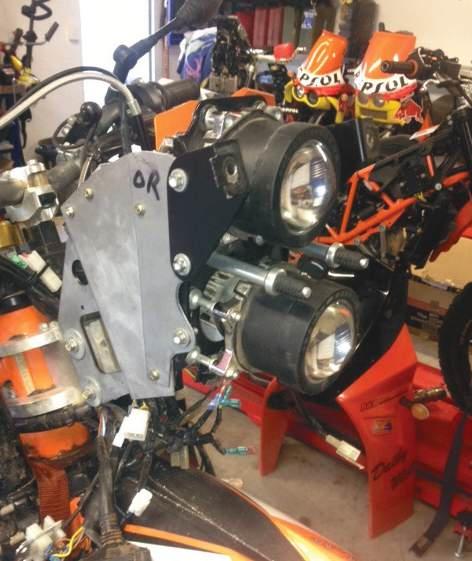
Above: The stock headlight wasn’t as good as we hoped, so a rally headlight will be supplied. There had to be some refinement for the mounting of the speedo, too.
on and off for servicing.
The low exhaust gave no problems to the bike’s mechanicals. At the muffler end it worked well with luggage and swag, and for the rider it didn’t get in the way. We didn’t have the heat guard fitted that the production kit will have, and it still didn’t heat up a rider’s foot.
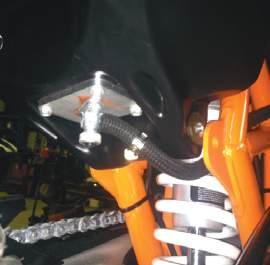
foot back in fixed the problem. So even the bashplate gave protection from the elements.
The tanks gave a natural thin feel when sitting on the bike due to their rally-inspired design, but more importantly due to the fuel being carried so low on the bike. Even with fuel bladders full and a total of 50 litres on the bike, plus saddlebags, swag and tank bag, the bike still had a nice, light feel in even the worst of desert conditions.
Another good thing to note is access to the fuel pump is easy. Just remove the bashplate, tilt the bike on its side and allow the fuel to drain to the left tank, then unplug the wires and remove four bolts. If you had more than 20 litres of fuel on the bike you’d have to drain some from the right tank.
After owning a 660 Rally years ago, I remember thinking a few times during the ride how I’d always wanted to get another rally bike, but considered it out of my reach. I’ve ridden Darren’s 690 Rally before, and I honestly felt I was riding a 2013 690 Rally when I was on the kitted bike.
The bashplate offered good protection for the low exhaust, foot brake, gear lever and rider’s feet, even when hitting ’roos, and it was also a breeze to get
The suspension was absolutely stock except for heavy fork springs and a bit of fine tuning with a screwdriver.
The fairing, fuel tanks, exhaust and bashplate and their corresponding mounts all stood up to the pounding admirably.
Of course the KTM 690 itself excelled. We had a fuel vapour lock early in the ride that has now been fixed by rerouting the fuel lines.
As it was only 14 weeks since I’d broken a bone in my pelvis, I wanted to make sure the seat was comfortable, so I fitted a KTM rounded gel seat, an AirHawk medium seat cover and a big lambs’ wool seat cover over that. It was unbelievably comfortable. I was offered the KTM1190 a couple of times and I declined.
We were using the genuine headlight and speedo mounted forward and high in the fairing, and had bolted a reasonably large LED light under the headlight. First up we learned the genuine headlight was not that good, even with a HID kit fitted. Then the LED light mount cracked so we zip tied that back on. The mounting position for the speedo was at the wrong angle and was hard to read as well, so basically our headlight and speedo mounting wasn’t acceptable. We’ve since redesigned a far more substantial headlight and dashboard using the genuine 690 Rally headlight and mounting system.
I’d fitted ’pegs that were adjustable to a lower position. I broke one off in the desert, so I guess we won’t be using those ’pegs again.
The overall quality of the kit far outweighed our expectations and the couple problems with relatively minor components were really nothing and we’ve made suitable amendments. The good thing is that the trip across Australia found any weak points, and even though the Rally headlight adds a little extra cost to the kit, it’s well worthwhile.
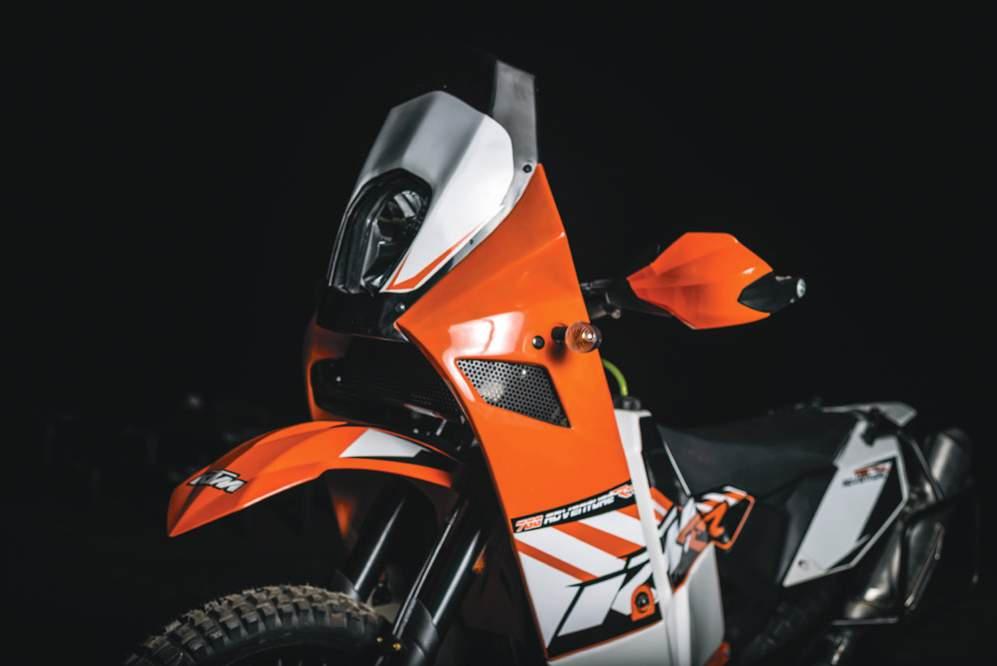

By the time you can read this we will have already had a finished model displayed at the Sydney Motorcycle Expo and will be taking orders. For more details contact me, Craig Hartley, on 0428 621 211 or email chartley@dalbymoto.com.au. You can check for updates on www.dalbymoto.com.au
Choosing the right luggage can make the difference between a great trip and a very difficult one.

One of the first things to consider before any sort of two-wheeled adventure is the type of luggage you need. Unlike a car where you can toss everything in the boot, motorcycle travel requires a lot more forward planning and preparation.
This issue we’ll describe some of the luggage options available and offer some tips on the suitability of each.
It’s worth noting that there’s no onestop solution to all your requirements. All luggage has been designed for a specific purpose, and the type of travel you’re undertaking, and the conditions in which you’ll ride, will determine which you feel is right for you.
Generally, the biggest decision you’ll have to make is whether to choose soft or hard luggage. We’ve used both extensively, and in all types of terrains and conditions. While our advice shouldn’t be considered gospel, we’ll give you a good starting point.
Before you begin, you need to consider where you’re riding and what your requirements are. Without going into too much detail, your decision will basically come down to whether you’re riding on a ‘road’ – tar or dirt, with a good, even surface across its width – or a ‘track’, where there’s a huge variation in the surface and where any change in your position on the track is a consideration.
It’s worth noting that tracks can change from year to year. The Oodnadatta and Birdsville tracks can be a road or a track, depending on the season and the state of the maintenance when you arrive.
First up, let’s have a look at hard versus soft options in panniers.
When it comes to panniers the intended use is mainly tar or gravel road, and many riders get a good result from the OEM (Own Equipment Manufacturer) luggage systems offered by bike brands. These are generally fitted with quick-release mounts offering the convenience of a suitcase-type container. Usually with side and top openings, they’re easy

to detach when you get to your destination, allowing you to carry them into your accommodation. However, the side-opening versions can create problems, and many people open their suitcase-style panniers only to have everything fall on to the ground.
The suitcase panniers are usually referred to as touring panniers, often with an aluminium outer skin. They’re mainly made from plastic, and these are generally not as robust as the full aluminium adventure versions. As such, they’re best suited to road riding

Top-opening systems don’t offer the suitcase convenience, however liner bags are available.
where loads are light, and not for offroad adventuring where uneven road surfaces and carrying extra weight are considerations.
Typically prices for touring panniers range from around $900 to $1400 and their combined capacity is usually between 60 litres and 70 litres.
For adventure use, virtually all the aluminium panniers are topopening and have their own sturdy mounting frame. The panniers attach to the frame via a locking system, which prevents them being stolen or tampered with.
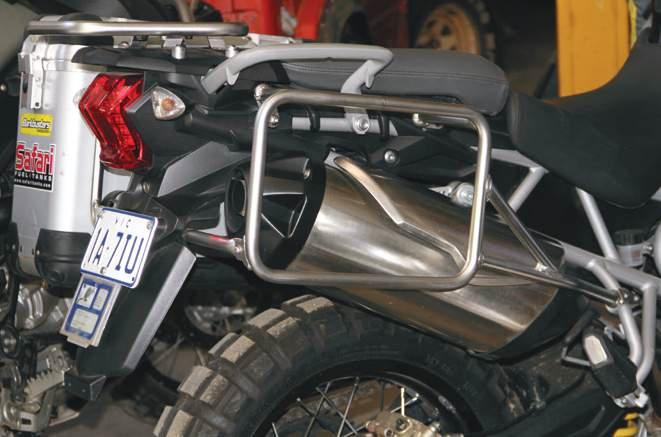
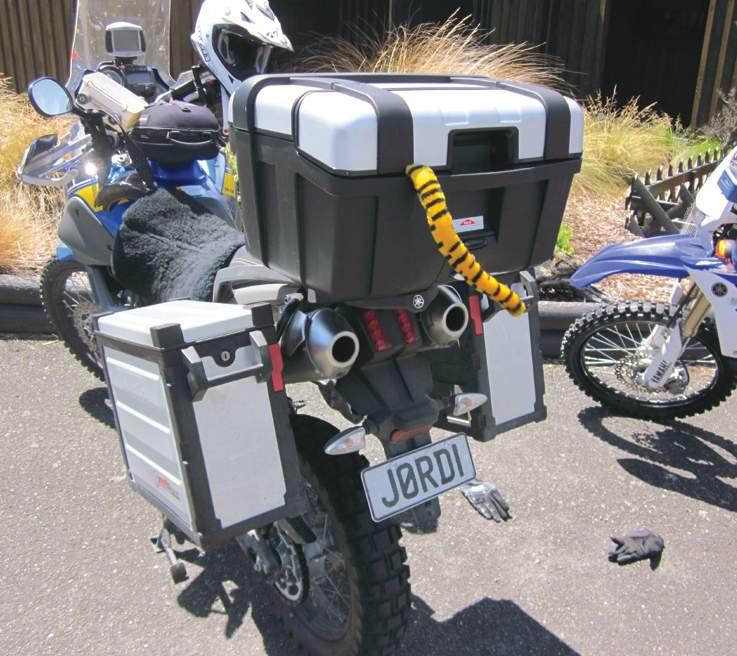
That’s a real consideration when travelling in some areas or countries where security is a concern.
The top-opening systems don’t offer the suitcase convenience, however liner bags are available and these can be easily removed for overnight stops. If you’re living off your bike (maybe carrying food), the top-opening panniers are far more convenient.
Sherri Jo Wilkins
“Because I Can World Tour”
The key to the strength of these panniers is the mounting system, which helps protect them from damage. Their sturdiness also gives them a reasonable chance of being repaired on the run if necessary.
“My Safari Tank was my favourite accessory on the trip.”
Aluminium adventure panniers, such as the Touratech units pictured, are
For adventure use on mainly tar and gravel, virtually all the aluminium panniers are top-opening and have their own sturdy mounting frame.
definitely stronger and more durable than the touring units.
Prices for the aluminium adventure panniers typically range from around $1900 to $2300 including pannier racks, and combined capacity is typically 60 litres to 90 litres.
Just be aware that adding panniers does effect the handling of the bike, however it’s not as significant as you might think. For example, I’ve put a tractor battery in one side of a BMW pannier box and thought it would make it incredibly dangerous to ride, but I hardly noticed it.
Having said that, you want to try and balance the load, and certainly put heavy items at the bottom.

The size of pannier you choose will usually depend on the size of your bike and what your carrying requirements are. You should try to keep the total width of your bike to one metre or less, and the following is a good rule of thumb:
v Single-cylinder adventure bikes with twin exhaust (like the Husqvarna Terra, BMW G650GS and Yamaha XTZ660) – 31-litre pannier on each side.
v Asymmetrical bikes, such as the Suzuki DR650 – 31-litre pannier on the exhaust side, 38-litre pannier on the non-exhaust side. This helps to keep the bike symmetrical and keeps the weight even. Larger symmetrical bikes (like the KTM 990/950 LC8) –2 x 38-litre panniers.
v Large asymmetrical bikes (like the BMW 1200GS, BMW 800GS, XTZ1200, Triumph Tiger 800, KTM 1190) – 38-litre pannier on the exhaust side, 45-litre pannier on the nonexhaust side.
Soft panniers are lighter and narrower than their hard counterparts, and are usually constructed from PVC waterproof fabric or canvas.
The canvas versions need to be at least 16oz canvas, with the most durable using rip-stop canvas like the Australian-made units available from Andy Strapz.
If you want PVC panniers, you should be looking at a fabric thickness of at least 300 grams per square metre (gsm), but preferably a fabric that’s around 400gsm to 500gsm, which will assist in the pannier’s durability.
Soft panniers are highly durable in some regards, but if you fall off
On her three-year, 128,000km ‘Because I Can’ world tour, Sherri Jo Wilkins rode a KTM 690 with black aluminium adventure panniers fitted. Sherri Jo wanted the security and locking ability that the aluminium panniers provided. She chose black panniers that were less obtrusive and didn’t stand out in countries where security concerns were high. Picking the right luggage combination before she started her marathon journey proved to be an inspired move, as it caused her no problems throughout her adventure.
there’s an increased chance of damaging the contents of your pannier, or the pannier itself.
Even in the event of an accident they often surprise you as to how durable they are. I fell heavily in rocks at speed with a fully loaded adventure bike, and didn’t damage my set of rip-stop canvas panniers, which surprised me, although it did damage some of the contents. In this situation, even an aluminium adventure pannier would have been damaged significantly.
However, in the event of a fall you could lose the waterproofing ability of the soft pannier, so you’ll need a secondary means of waterproofing.
Some brands are a lot more durable than others. A brand that offers superior waterproofing will not always offer the best durability, and vice versa.
The lack of robustness in soft panniers is a definite trade-off for
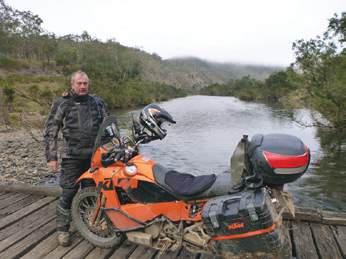

don’t require the big pannier rack systems. Items also don’t move around as much in soft panniers, because you can tighten the straps to keep everything held securely.
Soft panniers are lighter and narrower than their hard counterparts, and are usually constructed from PVC waterproof fabric or canvas.

Soft panniers are considerably cheaper than hard luggage systems – usually less than half the price. Typically a pair of soft panniers will run somewhere between $600 and $800, including frame to suit, and the capacity of the bags will be something like 35 litres to 45 litres.
Soft panniers can be used anywhere, but they’re more commonly used on tracks and for hard-core adventuring where the narrower width makes it easier to manoeuvre a bike, and when you don’t need to carry as much luggage.
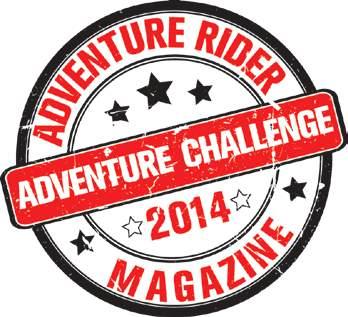
In the end, the choice on luggage is entirely yours, depending on your wants, needs and budget. Choose wisely and enjoy your next big adventure.
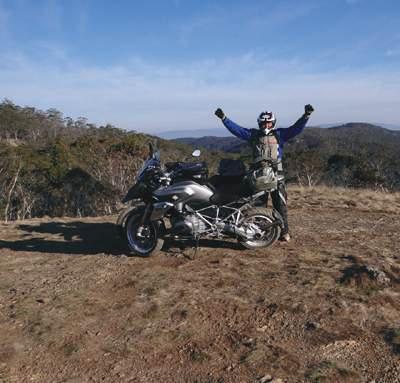



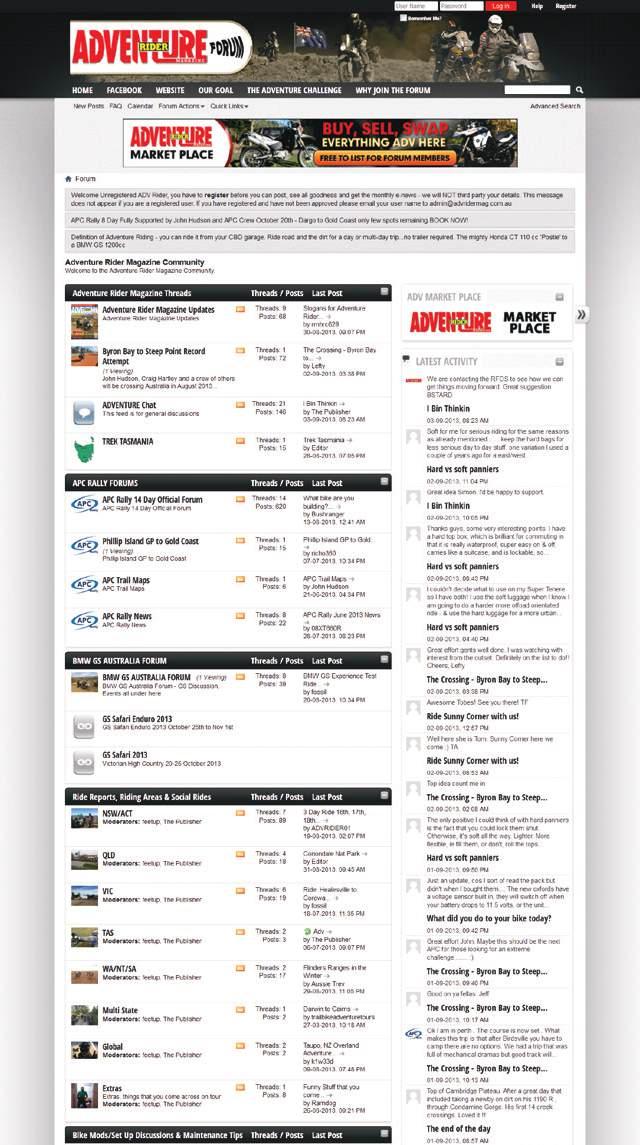



The gloves are off and it’s time for the real fight at last. Cyril Despres’ move to Yamaha has brought with it the opportunity to see him and his toughest competitor, Marc Coma, go head-to-head without the shadow of possible team intervention. Adventure Rider Magazine had a brief but exclusive chat with Cyril to get his thoughts on the coming Dakar, signing with Yamaha and the passions that drive him toward a sixth Dakar victory.
Adv: The big news is your move to Yamaha. It must’ve been a hard decision after so many years with KTM. What can you share about the reasons behind your change?
CD: It has been a big move for me after 13 years with KTM. I really was not looking to moving away from KTM last year.
After my fifth Dakar win I started to wonder if it was possible to win again, but with a different
manufacturer. Now it will be interesting to see if I, and the small group of people that have come with me, can succeed as a part of a new team. The answer will come at the end of January, after the 2014 Dakar has been run. My contract with Yamaha is for three years, so we have time to see if we can be as successful as we have been in the past.
Adv: With the move now complete, what are your impressions of the Yamaha setup compared to KTM?
CD: The Yamaha team is made up of all French people and this is quite a nice change. Being able to communicate in my own language is such a benefit. It is easier to discuss and explain things without having to translate, and this will make a difference in the set-up of the bike and also in fine-tuning the team.
The bike is something very different to the bikes I have been riding. The chassis is aluminum, the engine is quite powerful and the fuel injection is really nice and responsive. I have been learning Kayaba suspension, which is very different to the WP suspension I have been used to. From the testing we have done it is very

capable in all different sorts of terrain. I have been surprised how light and agile the bike is compared to the bikes I have been riding. It is really nice to be able to put it into a corner in the place you want it to be. It accelerates and brakes really well. From the first ride on the bike I really appreciated this.
Adv: This will be the first year the world will see you and Marc race head-to-head on different makes of bike, and while there was some separation in the KTM team in past years, how do you feel about this as you head toward the next Dakar?
CD: Of course Marc has been my toughest competitor in recent years. I also think I have been his toughest competitor, so it’s been a real battle. My move to Yamaha will bring a heightened level of competition in Rally Raid racing and the Dakar. If my move to Yamaha is good for the racing, then it will be good for the sport and the Dakar.
Adv: You have five Dakar victories and there’s the potential for more with Yamaha. What do you hope to achieve? Not only for yourself, but also for Yamaha.
CD: Of course I hope to achieve the best record I can. I am still motivated to train for the Dakar. I really don’t need to race a lot of other events prior to the Dakar. I prefer to focus on the biggest race of the year.
My contract with Yamaha is for three years, so we are focused on winning as much as we can. We are not in a hurry, but I can see from the testing we have done that the bike is capable of fighting for the victory. I hope I will be able to do that for Yamaha and myself.
At the moment it’s just unbelievable the amount of effort the team has put in, and this is very motivating for me.
Adv: It seems your relationship with Stéphane Peterhansel is growing. In your mind is there a longer-term view of racing cars?
CD: The relationship with Stéphane has always been good. Stéphane helped me when I started with my first Dakar in 2000. I finished 14th in that race on my XR400. That led to a ride with the Factory BMW Team, and again Stéphane helped me.
So I suppose we have been friends for a long time and he has always been
able to give me advice when I needed it.
We have been on holidays together and enjoy similar things in life: relaxing, ski touring and riding bicycles.
Stéphane joked with me that if someone was to equal his record it could be me, because he could see I am capable of doing it. But he said also if I could do it with a blue bike it will be even better, because he has been with Yamaha for many years.
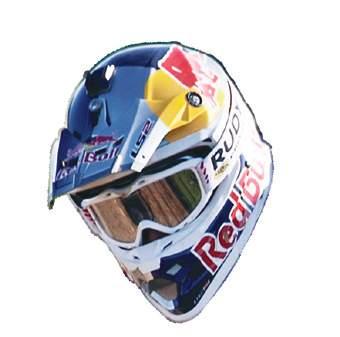
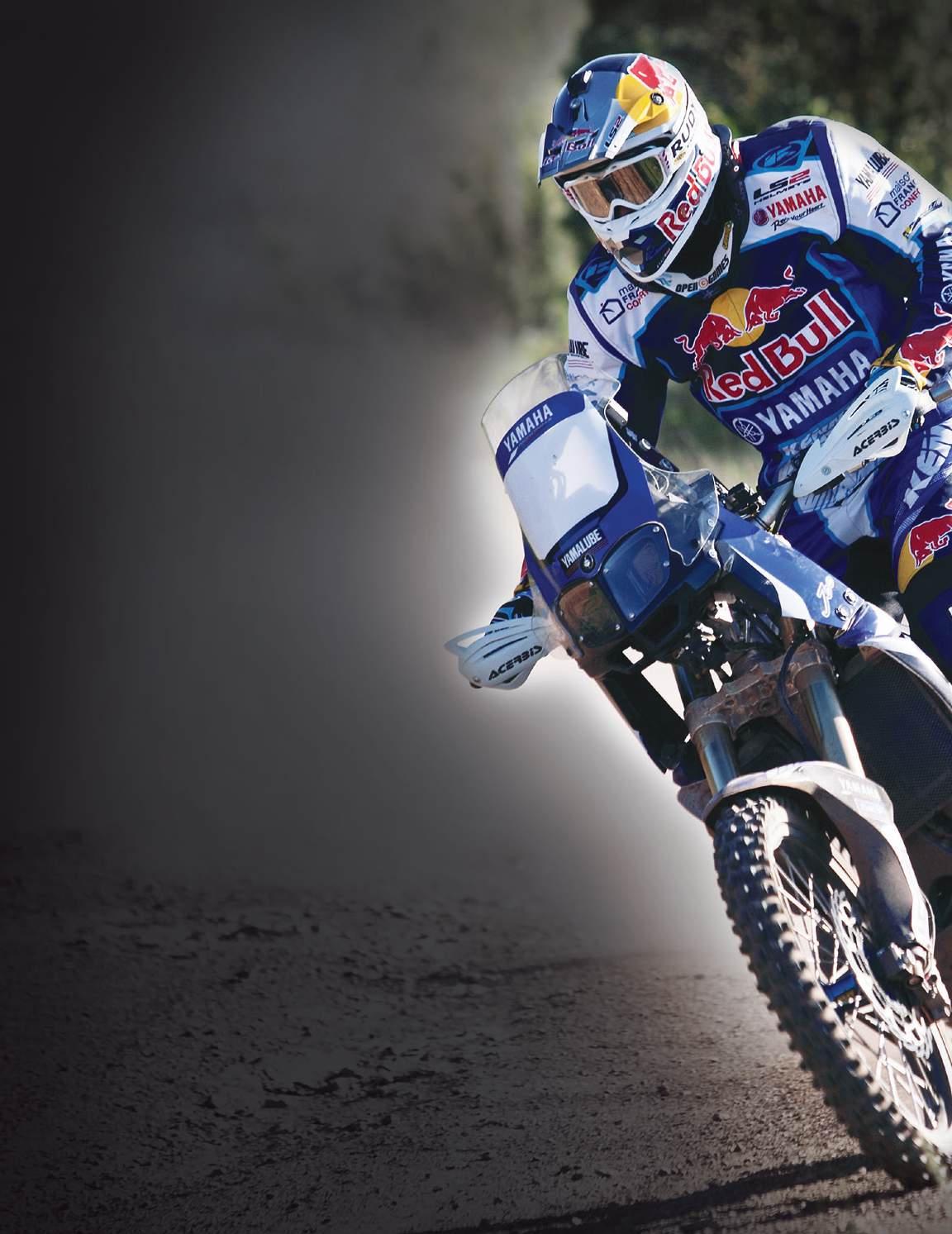
In terms of a longer view, it is already a big challenge and I am not looking at moving to racing cars at the moment. For now I want to focus on winning the Dakar on Yamaha.
Adv: With your move to Yamaha, were you able to bring with you people who were a part of your success at KTM?
CD: Not many, because KTM is based in Austria and my mechanic for the last eight years, Roland, lives close to the factory. It was better for him to stay close to his family and KTM.
Benjamin Melot will be joining the team as my full-time race mechanic. Many people may not realise that in the past the factory supplied the race mechanics for the bigger races, but when it comes to training and riding in smaller events, I still need my own mechanic. Benji has been doing this for me for several years now and he has also been the race mechanic of Ruben Faria. So I am very confident in his ability, and we know each other very well. He is a very talented mechanic and it is also very easy to communicate with him.
My manager Chris Evans will also be a part of this new way forward. In the
Dakar he is in charge of media during the race, and at times at other races he takes on the role of team manager.
With regard to Ruben Faria, I have worked with him for many years and he has done a wonderful job in supporting me during the Dakar. When he got the proposal from KTM to take on a full ride and not be a water carrier, I was really happy for him and I pushed him to take the opportunity. It is a good thing for him.
The rest of the people that have supported me for many years have not changed. My doctor, physio, trainer and assistant are the same people and this is helpful. The big change is the bike, and this is the most important change. It will be good to fight for another victory, but this time on the Yamaha.
Adv: Has the move to a French team made it easier for you to explain in your mother tongue what you need? Do you feel you will be more able to

explain what you need now?
CD: Yes. My mother language is French so it’s a lot easier. I realised when we were testing suspension that it was difficult as I had worked with WP for many years and the discussions were in English with them. So most of the technical language I understood was in English. I was thinking in English and translating back to French for the team. It took a few days, but then I moved back to thinking in French and things got a lot easier. You do not realise how difficult it is to explain yourself and what you need until you see how much easier it is when you can do it in your own language.
Adv: A few years ago you made the trip to Australia and competed in the Australian Safari. You were injured and couldn’t finish the race, but what were your impressions of the event, the level of the riders and competition compared to what you’ve been involved in elsewhere in the world?
CD: It was my first trip to Australia and it was good, but the race is so

different to what I am used to riding. When you take the average speed of a race in Europe, perhaps the Sardinia Rally, it is between 30kph and 40kph. It’s a really slow, technical rally with a lot of navigation and a lot of information to process. I remember in the fastest stage of the Australian Safari we were averaging around 120kph. That’s three times faster than rallies in Europe. This was not something I was expecting. But the good memory was the welcome from the people. If you want to be a rally rider you need to enjoy travelling and riding, even though I did not finish the race, I still enjoyed the experience and the people.
Adv: You’re a rider at the top of his game. What advice can you pass on to younger or up-and-coming riders?
CD: There are some fast young riders that have come on the scene, but as I always say, you do not have to be the fastest to win a rally.
To know how to navigate, to look after the bike, look after yourself, not crashing and needing to be fit enough to do the whole race is really more important than riding fast.
If you can do all this and then ride fast, then you will finish well. But outright speed is not the only key to rallies. It’s the mixture of skills that make not only the racing interesting, it also means you have to use other skills to succeed.

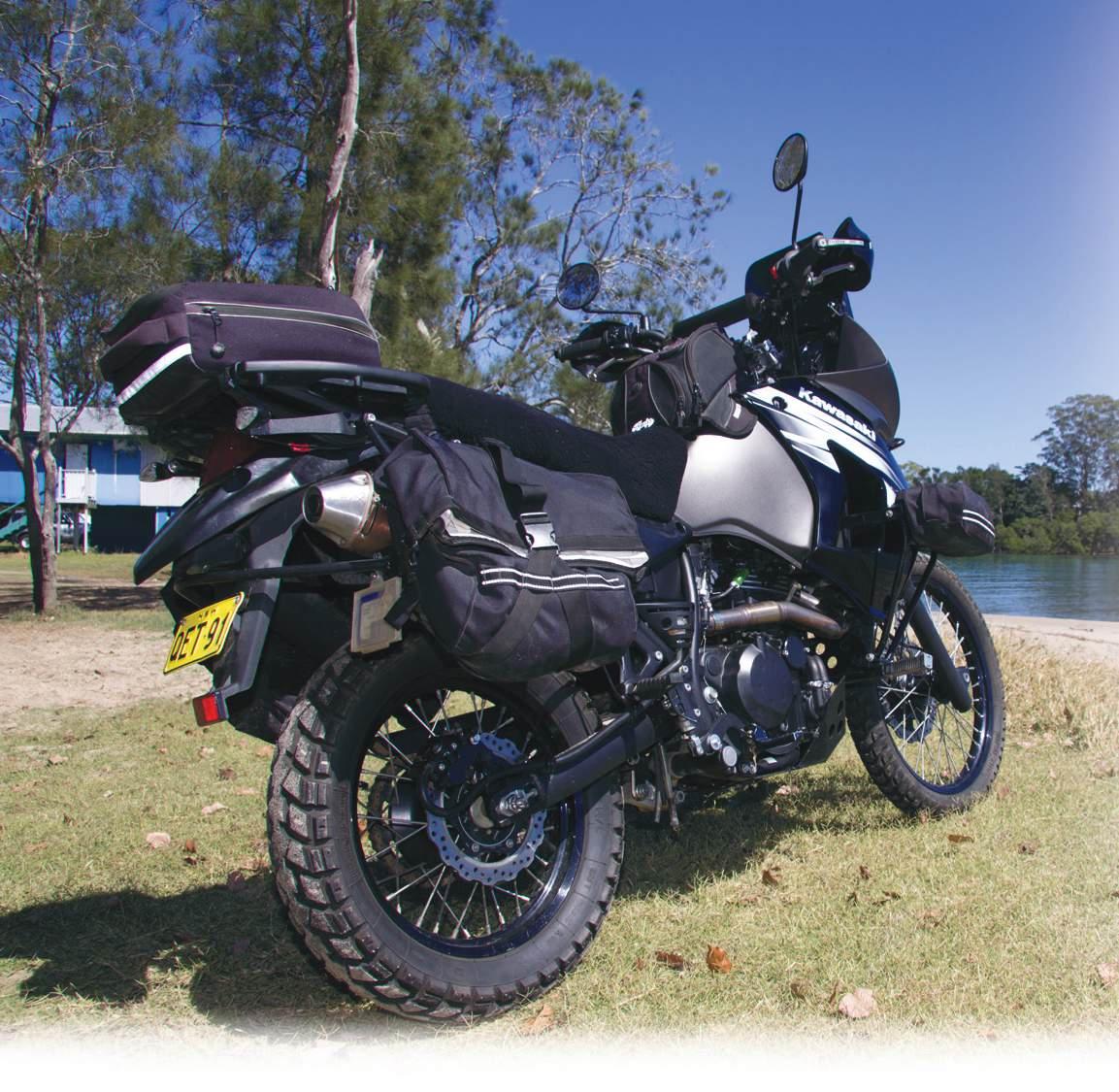
The KLR650 is one of those bikes that, despite not being a technological marvel or built to claim a RallyRaid crown, has a legion of fans worldwide. It’s revered for its simplicity, reliability and comfort. We wondered if there was room for improvement in such a great bike, so had a word to Evan Byles in South Australia. With a lifetime of racing and riding on- and off-road, and South Australia’s biggest dealership under his care, he’s had plenty of experience with the Kwaka.
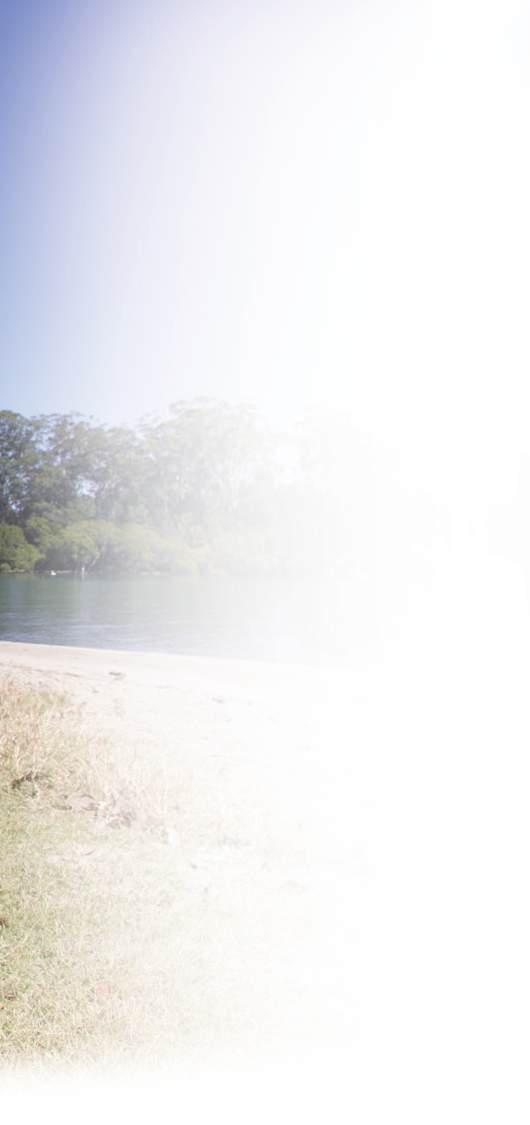
they’re happy. And I’m a motorcyclist first up and businessman second. I love to offer people a bike as good as the KLR.”

“The price is a massive factor in the KLR’s appeal,” revved Evan, from the comfort of SA Motorcycles. “If you want to buy a European bike that’ll do the same thing, you won’t get out of it for less than $15,000. Without haggling you can grab a KLR for $8500, registered in your name, with 22 litres of 98 octane in it, and you can ride that bike straight off the dealer floor to Port Augusta, Cape York…anywhere you like. It’ll do the job.”
Evan has seen some damn good motorcycles, but in his opinion the KLR is really exceptional.
“I had a customer come in and he’d put some dirt through his motor and he was bit worried about it. It’d done 150,000km. He brought in the piston and barrel, but only ended up buying rings and gaskets, and then put it back together.
“That’s normal with the KLR. We’ve seen multiple KLRs that have done 150,000km and have never had the motor apart.
“Not a lot of people do that many kilometres on a single motorbike.”
We figured that must’ve been a drawback for a dealer. If the bikes just keep going and going, that’s a whole lot less bikes Evan will sell over the years.
“There’s always another customer,” sidecarred Evan. “I’m better off when
So here’s Evan’s tips for getting the best from Kawasaki’s adventurer:
1. The KLR650 is one of the most popular adventure bikes in Australia because Kawasaki has considered the changing role of this type of bike over the last 20 years. Key improvements to the KLR that have made it the first choice for many riders are: a large, 22-litre tank, frame-mounted fairing, a large pack rack and a heavy-duty rear frame, bashplate, comfortable long-distance seat, strong brakes and a high-output alternator.
2. The Australian market complies with Australian Design Rules. That means severe intake and carburettor restrictions that result in less than half the power of the US model. Some easy modifications will increase power output massively without increasing exhaust noise. Most Kawasaki specialists are well-versed in the carburettor-slide and air-box derestriction. The cost is very modest, and it’ll be the best money owners will ever spend.
3. The Dunlop Trailmax tyres supplied with the KLR650 are a great bitumen/ hard-dirt road tyre. If you’re going to use the KLR on slippery surfaces and need off-road grip, the Pirelli MT21 Rallycross is a great choice.
4. SW Motech crash bars are very popular and do a very good job of protecting the front of the bike.
5. SW Motech also makes a centrestand for the KLR. It makes it easier to oil the chain and remove the rear wheel when you’re not in a workshop.
6. Buy yourself a spare Twin Air or Kawasaki OEM airfilter element. These are easy to change and take very little space to carry.
7. Add an eight-millimetre box spanner, socket or T-bar to the toolkit. The sidecover needs to come off for airfilter access, and that needs an eight-millimetre. For some reason it was overlooked in an otherwise
comprehensive standard toolkit.
8. The shock is easily adjusted for spring preload with the 12mm box spanner included in the on-board toolkit.
9. Upgrade the grips to adjustable heated units from Oxford. The KLR has plenty of electrical capacity for extras like this.
10. It’s very common to come across a KLR650 with in excess of 150,000km on the original engine. These bikes are very robust units.
11. While the standard headlights are very good, if you want even more light up front the twin H7 halogen bulbs can be easily upgraded to twin HID bulbs for triple the output.
12. The standard high-density plastic bashplate offers excellent crankcase and frame protection with very little noise reflection.
13. Australian manufacturer B&B offers an alloybash plate for extra heavy-duty coverage.
14. The first major service is not due until 24,000km, when the suspension and steering should be inspected, adjusted (if necessary) and lubricated.
15. Valve clearances aren’t scheduled for checking until 42,000km.
16. While there are suspension upgrades available for the KLR650, most owners are very happy with the standard suspension. Make sure it’s serviced regularly to keep it working well.
17. For even more torque and power, Staintune here in Australia manufactures a maintenance-free performance exhaust system that’s recommended for its quality.
18. Barkbusters can be fitted, but most owners are happy with the standard hand protection. The standard gear offers great wind and lever protection.
19. If you’re going outback or filling from jerry cans, fit an inline fuel filter between the tank and the carbie.
20. The KLR650 is supplied with no rim locks. This is to prevent valves being pulled out of tubes. It’s fine when used with the standard tyres and no less than 25psi tyre pressure. If using more aggressive tyres or lower pressures, rim locks should be fitted in opposing pairs and the wheels balanced.

Why are we showing a bike cranked over at Phillip Island?
Look closely. It’s a 2011 R1200GS Adventure…BMW’s flagship adventure mount.
Kerrod Purcell, 29, who spends his work days at Procycles in St Peters, Sydney, loves the wide, open spaces of adventure riding, but he loves the wide-open throttle of road racing just as much. He must be a bit of a throttle jockey, because he reckons the big Beemer is “perfect at passing 450s in the dirt”.
“I have done it in a straight line,” laughed Kerrod, “but I’m not going to talk about the corners.”
Why would a bloke go to a BMW GS Adventure if he’s a tar-burner? We had to ask…
“I’ve been selling BMWs for about six years, and I ended up on an S1000RR. But whenever I had to go anywhere for work – into the city or whatever – I’d just grab the GSA demonstrator. I’m just over two metres tall, so it’s one of the only bikes I’m comfortable riding.
“I built the S1000RR to race BEARS, but with work I just never got there, so I sold that bike. I didn’t want to have no bike at all, and everyone else I know rides adventure, so I thought I’d grab the GSA and put some road tyres on it when I wanted to have some fun on the track. But it turned out to be an absolute weapon!”
And as an adventure bike?
“We’ve been doing a bit through the Watagans and out west on the Bridle Track from Bathurst. I did 6500km in six days back in March, over Barrington Tops, Glen Innes and up to Beaudesert in Queensland. That was with a couple of the boys from the AdvRiderMag forum. I’ve done a couple of GS Safaris, and I hope to do more.
“Hopefully there’ll be a Cape York trip next year.”
We’d call that a ‘yes’.
See more at www.advridermag.com.au/forum
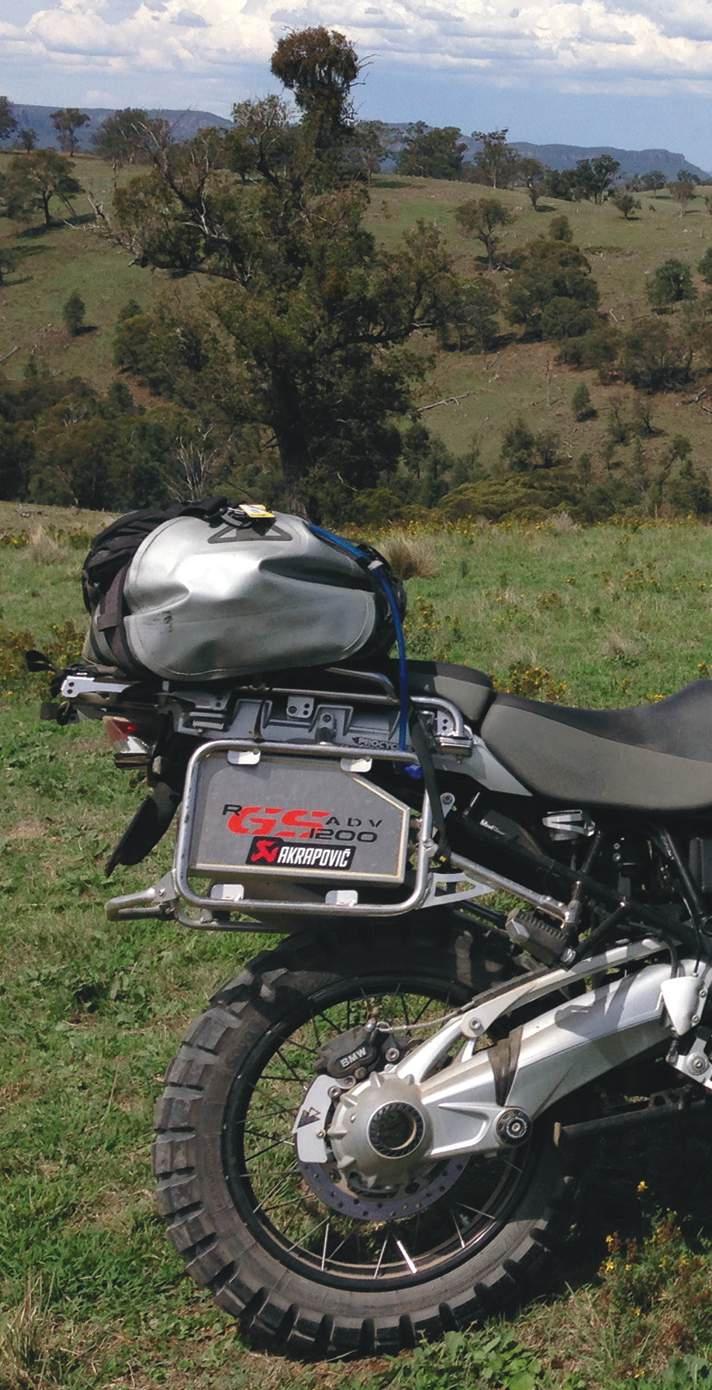



32011 BMW R1200GS Adventure
3Akrapovic titanium muffler
3BMW tank protector
3BMW larger handguards
3BMW F800GS mirrors (they look better than stockers)
3Grip Puppies
3Kangaroo whistles under beak
3Kriega US30 soft side panniers and a 50-litre BMW roll bag (110-litre luggage capacity)
3Motorrad Garage peripheral headlight protectors
3Mudslingers front and rear
3Ralle-Moto steering damper
3Rugged Industries LED lights mounted under the blinkers
3Tech Spec tank grip for track days
3Touratech mesh headlight guard
3Touratech rear-brake disc finisher
3UniFilter air filter with spare pre-filter socks
3Wunderlich side head protection bars
3Wunderlich Extreme Dakar bashplate
3Wunderlich Flow Jet screen (standard screen fitted for long trips)
3Wunderlich front and rear brake and clutch master-cylinder protectors
3Wunderlich 40mm ’bar risers
3Wunderlich sidestand enlarger
3Wunderlich performance controller (like a power commander)
3Wunderlich rear drive-shaft slider/protector
3Wunderlich highway ’pegs on engine bars. Awesome on the long trips!
3Wunderlich toolbox mounted inside the right pannier mount – 4.5 litres of storage
3Metzeler Karoos on the bike, but will be swapped out for some TKC80s
3Custom ‘GSA’ Numberplate

We’d planned a 6.00am start, so the mighty DR650 was packed the night before and blasted off right on time. A group of us were planning to meet the rest of the DSMRA boys at the base of Mount Fox in the Paluma Range about 75km west of Ingham, Queensland, and a steady 30 minutes of highway and a blast up the range gave us our first taste of dirt heading down the western slopes on our way to Hidden Valley.
From Hidden Valley we turned north to follow the range. The track was in pristine condition and we emerged on the other side to pick up the last of the riders and begin the trip proper.
The Valley Of The Lagoons beckoned and it was there we had to make our final decision on which route to take across the Burdekin River. After reports of considerable rain, and seeing the height of Reedy Brook, we decided to head out through Lava Plains.
These roads have become like superhighways and the pace was decidedly quick on the loop to the highway. A short punt down the bitumen
rolled us in to lunch slightly behind time and visions of riding in the dark increased our urgency, so we bolted our tucker and we were soon on our way again.
A 100km or so later we hit Copperfield Dam. Taking in the views from the dam wall we noticed Barry was missing. Suddenly he appeared on the other side of the wall. He seemed to be doing a bit of sightseeing, and we attempted to get his attention by using Andrew’s hi-vis jacket. When this failed Donnie opted for the tried’n’true method of yelling. This brought laughter from all as Barry was actually riding and was all of 500m away.
“At least I tried to get his attention,” said Barry in his own defence.
We all met up at the bottom of the dam wall and realised we were running really late. There was still a lot of riding to do.
We headed for a shortcut that should have seen us hit Cobbold by happy hour. “Should” was the important word. Things started to unravel from there.
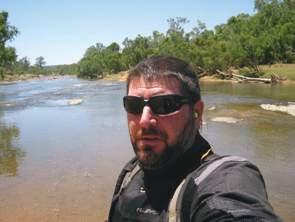

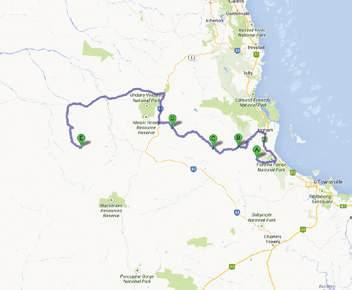
Our first turn took us to a dead end, and so did the second turn, even though the GPS said it was the correct route. Someone spotted a miner’s house, so we elected to get directions, and that’s where things became interesting.
The good ol’ boys came out looking slightly suspicious of the seven unexpected visitors. As Donnie and Tony explained they’d come through 10 years ago, it was suddenly realised that these were the same blokes they’d spoken to when geographically embarrassed back then!
Directions were given and a few
laughs had before we set off again into the fast-fading light.
Geoff was busily checking his GPS while listening to the directions, and decided he’d better lead this ramshackle mob. One piece of info he missed was the left turn straight after the creek. He led us up an actual road, but added about 80km to the trip.
Geoff was a dedicated leader though, and he did take us through some really snotty, deep, bull-dusted tracks that were a blast. During one of the patches of sand the aptly named Black Pearl – Anthony’s Ténéré – went down in a puff of dust. It was quickly resurrected and he set sail once more.
Barry wasn’t the happiest of campers after punting his 990R through, but all made it unscathed.
As expected, we did ride in the dark with the ever-present Skippies and cattle ready to pounce. With the DRs riding in formation and our combined two-candlepower high beams glowing, we limped into Cobbold at about 7.00pm. At this stage we still didn’t realise we’d gone the long way. After we set up camp and inhaled a beer we trundled off to dinner, and this was when we learned of the error in our navigation –Geoff’s navigation, actually.
I guess that’s why it’s called adventure riding.
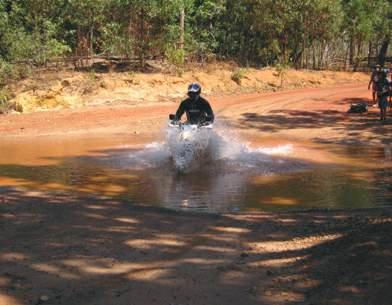

There’s a lot of damn water there.
Dinner and a few beers later it was decided we should now be known as DSMAA – Dumb Shits Meandering Around Aimlessly. It was quite fitting, we all thought.
We retired to the fire for a few quiet beer/rum/ports and partook of some bench racing. Everyone was feeling the day’s ride and made it an early night for some peaceful sleep under the stars…until the Dibella boys broke into rhythmic snoring which sounded like a gang of timber cutters.
So we were all up before the sun to start the next day.
With breakfast done and bikes fuelled and packed we were off.
At least the bike ended up clean.
A quick run down some high-speed dirt brought a reminder of the previous night’s nav error. The track out of Robinhood was unbelievably close to Cobbold when you went the short way, and we hit Agate Creek in no time. This was where the best
It would be a crime not to stop at a spot like this.
track of the trip began. It ran through Iona Station, winding in and out of creeks, over ridge lines and travelled through some spectacular gorges. This section was like a mini version of the Flinders Ranges, and it’s on the list as a “must-do again”.
All too soon we were back on the high-speed dirt to the Lynd Creek. Another blast up bitumen to the Three Ways for lunch and fuel, and another 100km to Blue Range and a run into Mt Fox had us on the final leg home.
With just over 1200km done in two days, and all bikes and riders making it safely, it was an awesome trip.
Maybe next time we’ll allow three days.

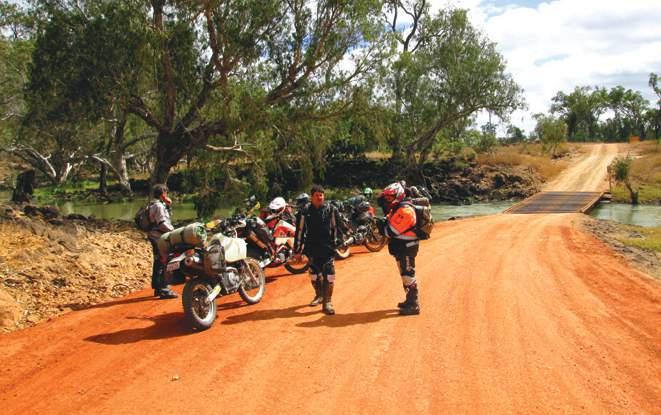

Here’s a bonus tank for when you need just a lick or two of fuel for an extra-long section.
v 2.1-litre capacity
v Mounts on the ’bars
v Supplied with mounting hardware, siphon kit and cap
RRP: $149.95
Available from: MX1 Australia
Web: www.mx1australia.com.au
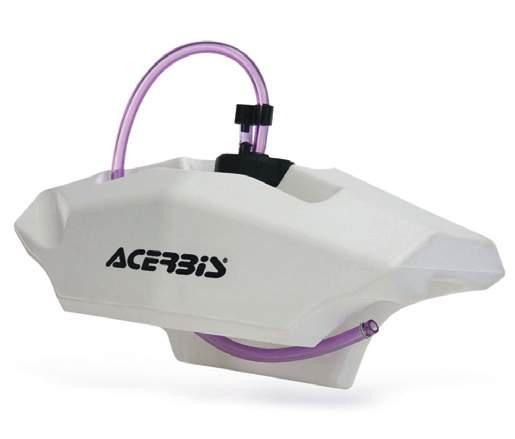
Take a close look at this astonishing 220gm cotton piqué polo shirt. Phwoar.
v From the Kawasaki Europe collection
v Engraved velvet tape in the neck area and covering rib
v All logos are made using high-quality “puff printing”
v The two stripes on the arm are made of a jersey-style material
v Sizes: XS - XXXL
RRP: $70 including GST
Available from: Kawasaki dealers
Distributed by: Kawasaki Australia Web: www.kawasaki.com.au

v Comfort and protection from the elements for both on-road and adventure riding
v A unique ventilation system with a Z-liner construction
v Direct flow of air to the upper body
v Incorporates the latest NP2 protectors and reinforced material in the most vulnerable areas
v Reflective print on the chest, sleeves and back (meets international standards)
v Items can be stored securely in spacious pockets
v Sizes: Ladies: 34-46 and 17-22 (black/anthracite only). Men: 46-60 and 98-110 (grey/black only)
RRP: Jacket $799. Trousers $699
Available from: BMW Motorrad dealers

Web: www.bmwmotorrad.com.au
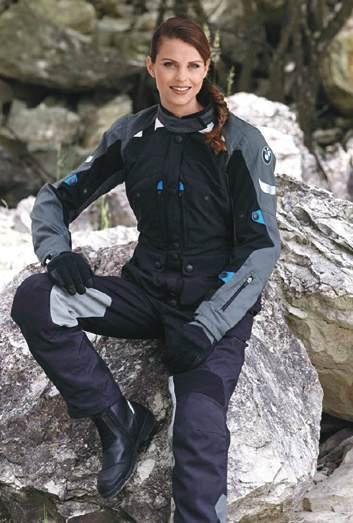

A perfect match with the MotoPressor Pocket Pump we showed you last issue. Simply attach the Motopressor Air Gauge onto any tyre valve stem and get an instant and accurate reading. Connect the Air Gauge to a Motopressor Pocket Pump and it becomes an inline gauge. No need to switch between the gauge and air compressor hose. Motopressor comes with a one-year limited product warranty.
v Measures PSI or KPA
v 0-60 PSI/0-4.2 KPA dial
v 50mm analogue dial
v 300mm braided flex hose
v Push-button air-bleed valve
v Protective rubber gauge guard
v Self-locking brass air chuck
v Can be used inline with a compressor
It’s a curious thing, but Suzuki’s unstoppable DRZ E model – not the S model – doesn’t have a fan on the radiator. In slow, tough going they can sometimes overheat. Vince Strang has sorted out the situation with a fan kit.
v Ideal for continuous lowspeed running
v Easy and quick to fit
v No wires to cut
v All mounting hardware and instructions included
v Waterproof and dustproof
v Fuse included
v No modification to the bike at all

RRP: $25
Available from:
Rocky Creek Designs Web: www.rockycreekdesigns.com.au
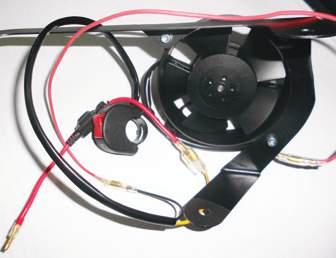
RRP: $220 including GST
Available from:
Vince Strang Motorcycles Web: www.vincestrangmotorcycles.com.au
Last issue we showed you the prototype of the Safari Tanks 32-litre cell for the Husqvarna Terra. The Tankers have taken the unit out, blasted through the outback, and now it’s proven and ready to go. Features include:
v Range around 670km of mixed riding
v 32-litre capacity (18 in the Safari tank and 14 in the stock tank)
v Colours: white, red, black, translucent white
v Includes mounting kits and fuel-line connections to connect to the standard fuel system
RRP: from $680
Available from: Safari Tanks Australia Web: www.safaritanks.com.au


Who knows what works for adventure riders? We do! We’ve started putting together an inventory of great, must-have gear, and it’s available from our sexy new page on the website.
v Multi-tool
v LED torch
v Polo shirt
RRP: $19.95 for each item
Available from:
RIDER MAGAZINE FORUM




This thick-skinned travel companion is the culmination of more than 25 years of innovative tank-bag design.

v A completely revamped tank-bag concept
v A new method of attachment via a model-specific base plate
v Quick and easy to install. The Elephant attaches by means of a quick-connect system
v Easy refuelling while wearing gloves
v The Elephant moves seamlessly from one bike to another
v Made of high-strength, abrasion- and water-resistant material
v Expandable from 15 litres to 25 litres
v Two large side pouches

v Oversized map pouch is removable and reversible
v Shock cords on the top allow for convenient securing of gloves or similar items
v Other features include detachable shoulder straps, a pass-through for electrical cables and a carrying handle. Optional accessories include a rain cover and a cooler pack
v Made in Germany
RRP: Standard $324.25. Light $207.05. Baseplates extra. Call for details
Available from: Procycles Web: www.procycles.com.au
v Simple to fit
v Innovative, fitted with adjustable LED
v Low power consumption
v Additional light for extreme conditions
v Handguard has an on/off switch, which can also be mounted on the ’bars
v Complete with a universal mount kit
RRP: $199.95
Available from: MX1 Australia Web: www.mx1australia.com.au
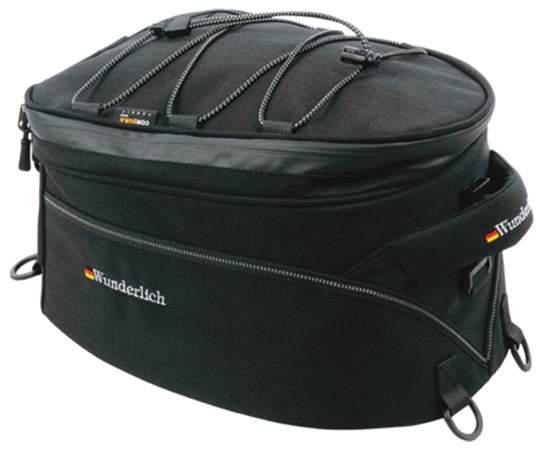
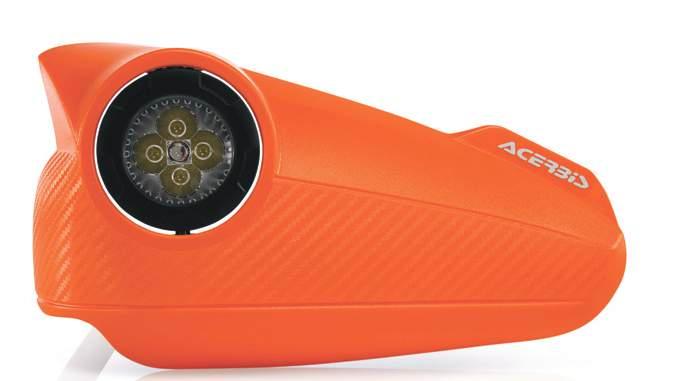
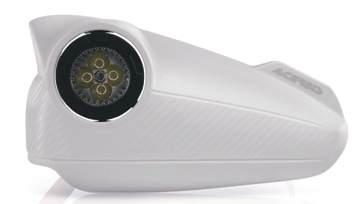
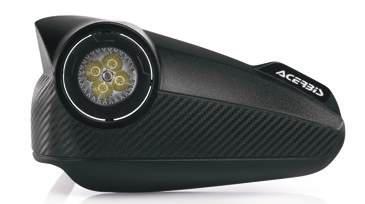
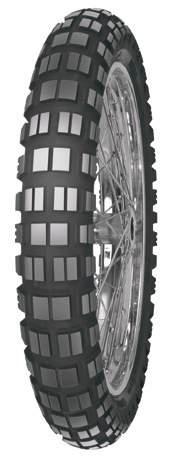
Mitas’ category-leading E-10 Safari tyre has recently received the full yellow-stripe treatment, with an upgraded ‘Dakar’ rally-spec version now available in Australia. The standard E-10 Safari is still available.
v Reinforced carcass and upgraded compound ensure even longer life and improved performance in extreme offroad rally conditions
v State-of-the-art belted-bias construction for enhanced traction and handling both on- and off-road
v One of the best dual-sport adventure
v Full treatment: wheel your DR650 in for fork and shock springs, shock valving and fork V4s valves (Teknik’s version of an Emulator) for $800. Usually $1050 RRP!
v Send Teknik your forks and shock. Revalve, fit new springs and V4S and courier back to you for $699 + freight!
(Service parts like seals, bushes and bumpstop replacements are not included in this overall price)
Available from: Teknik Motorsport Web: www.teknikmotorsport.com.au
v Simple and unobtrusive
v Aluminium frame
v Lightweight (470gm)
v Load rated to 110kg
v Seats 42cm above the ground
v Folded size 35cm x 5.5cm x 4cm
RRP: $74.95
Available from: Touratech Australia Web: www.touratech.com.au
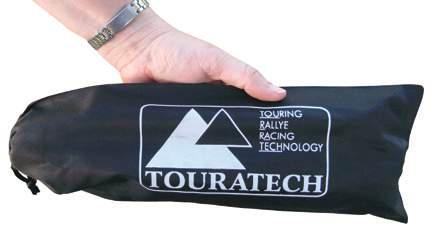

tyres available to suit high-powered bikes like the GS1200 and KTM990
v Made in Europe by one of the world’s most experienced tyre manufacturers
v 190kph speed rating
v Sizes: 150/70B17, 150/70B18, 110/80B19 and 90/90B21
RRP:
150/70B17 $259
150/70B18 $269
110/80B19 $219
90/90B21 $199
Available from: bike stores Web: www.motorcycletyres.net.au

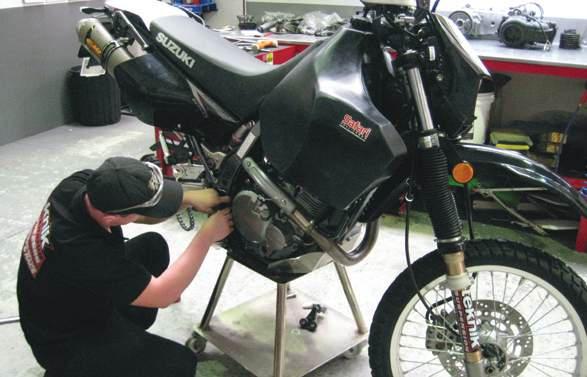
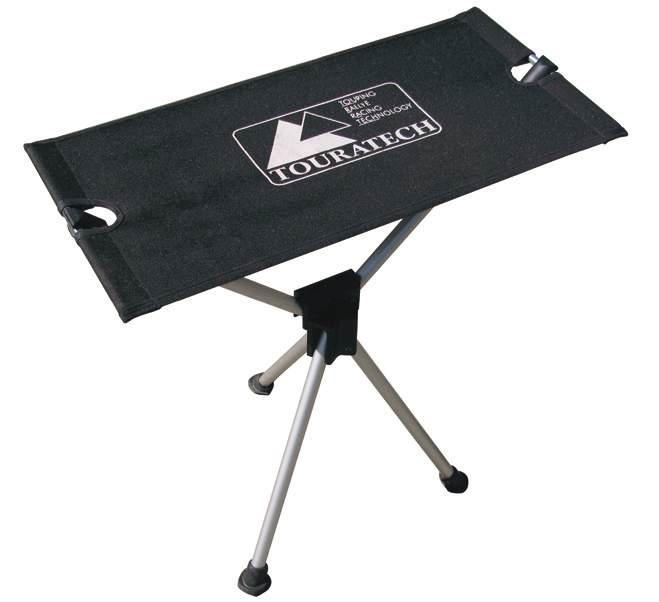

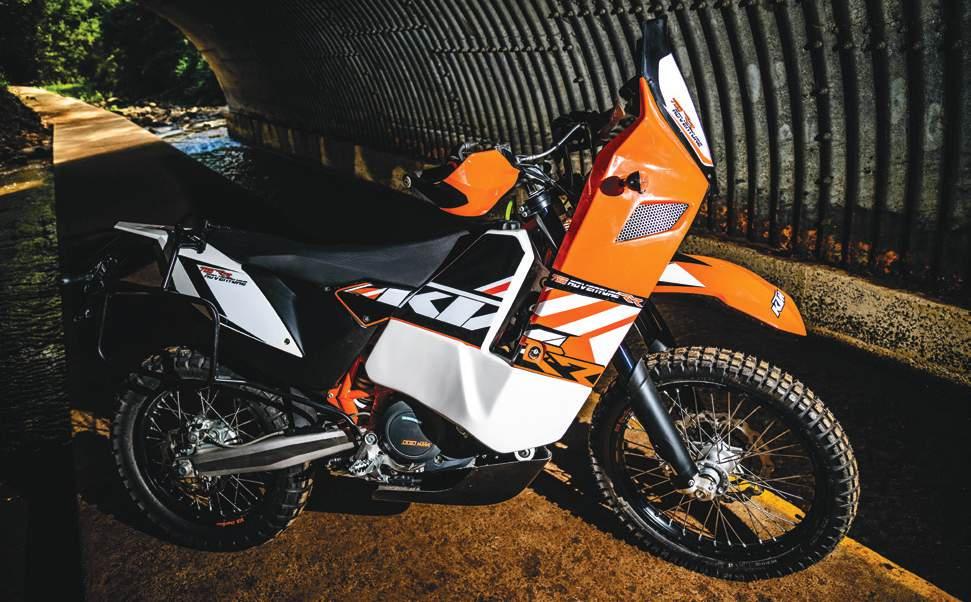
Adventure Rider Magazine rides the new KTM700RR (we hope!)
Mongolia: Frontier riding at its best

The Adventure Challenge kicks off. One year and a stack of great destinations. Details in issue #03.
Plus
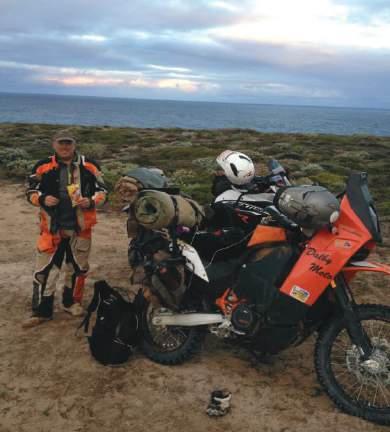
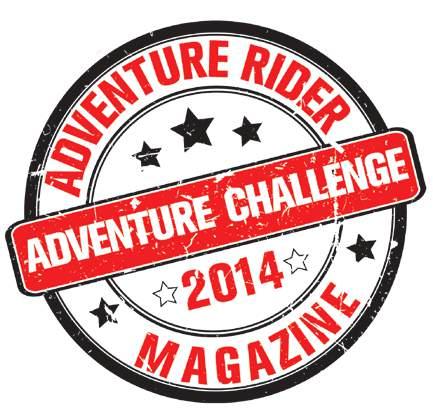
v Up close and personal with Kawasaki’s KLR650
v 20 things you should know about the KTM 990
v All adventure, cover to cover. AND MORE!

Issue 3 - In newsagents and letterboxes early February



